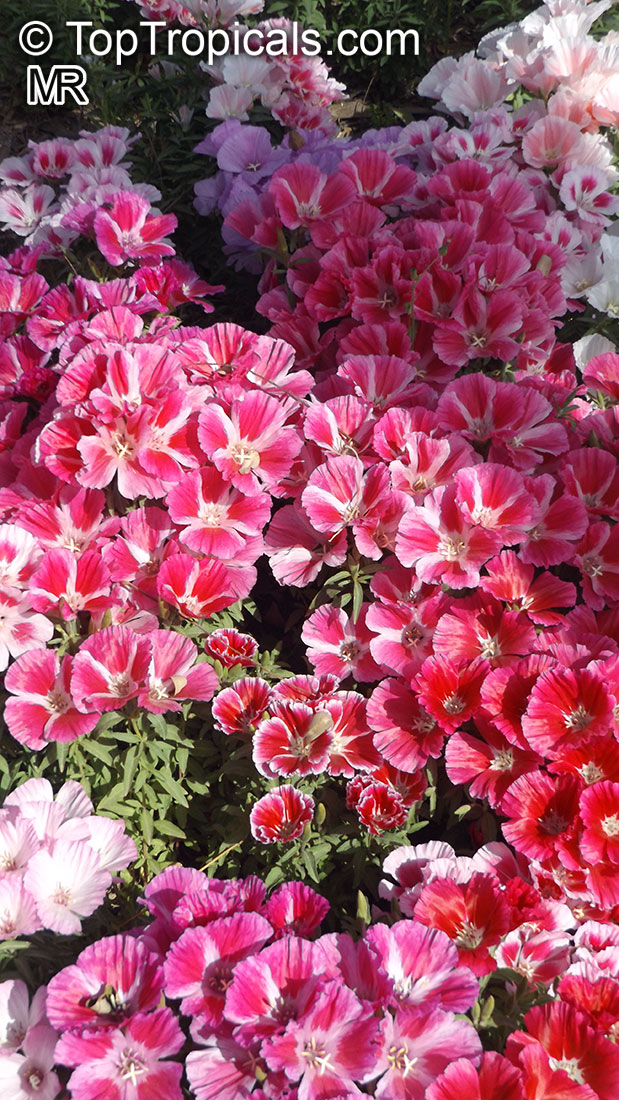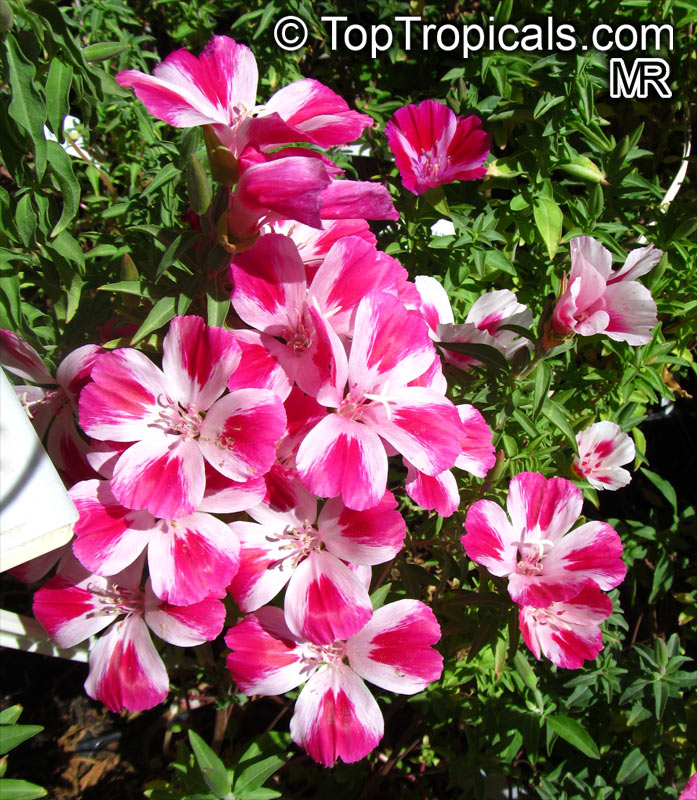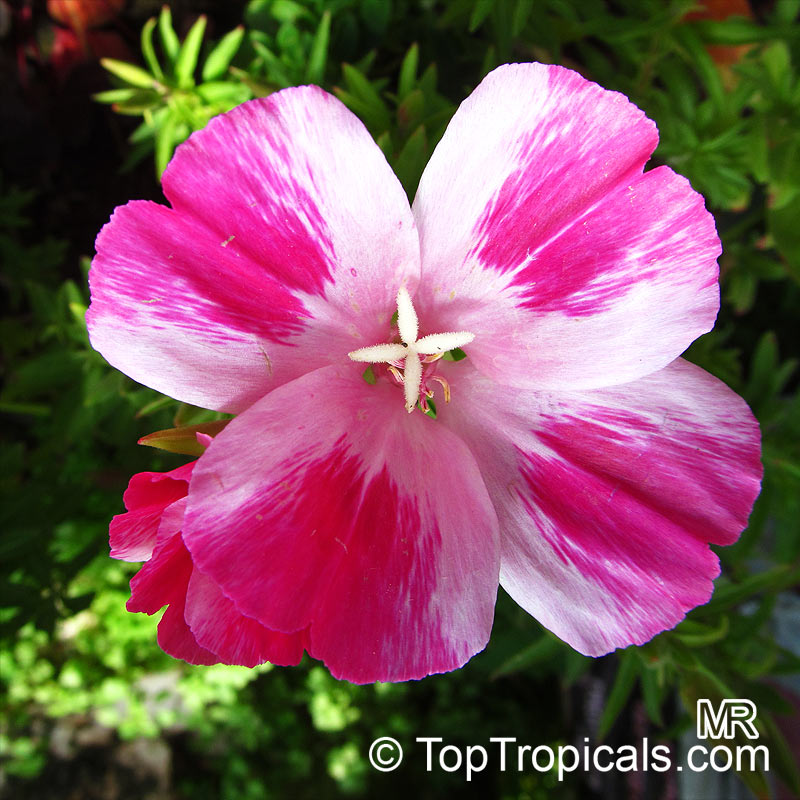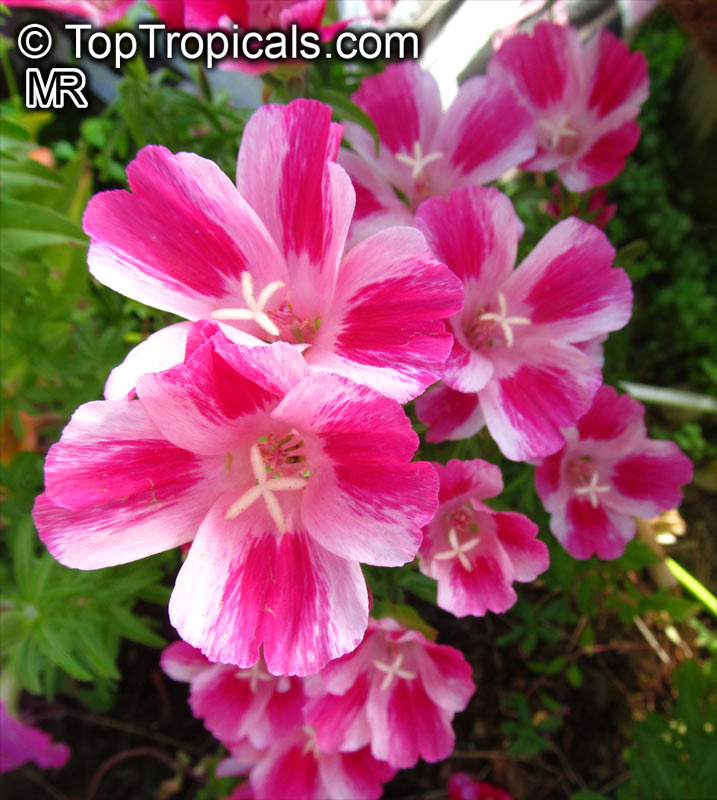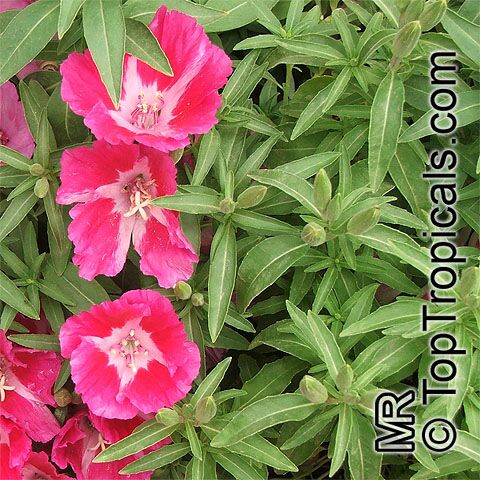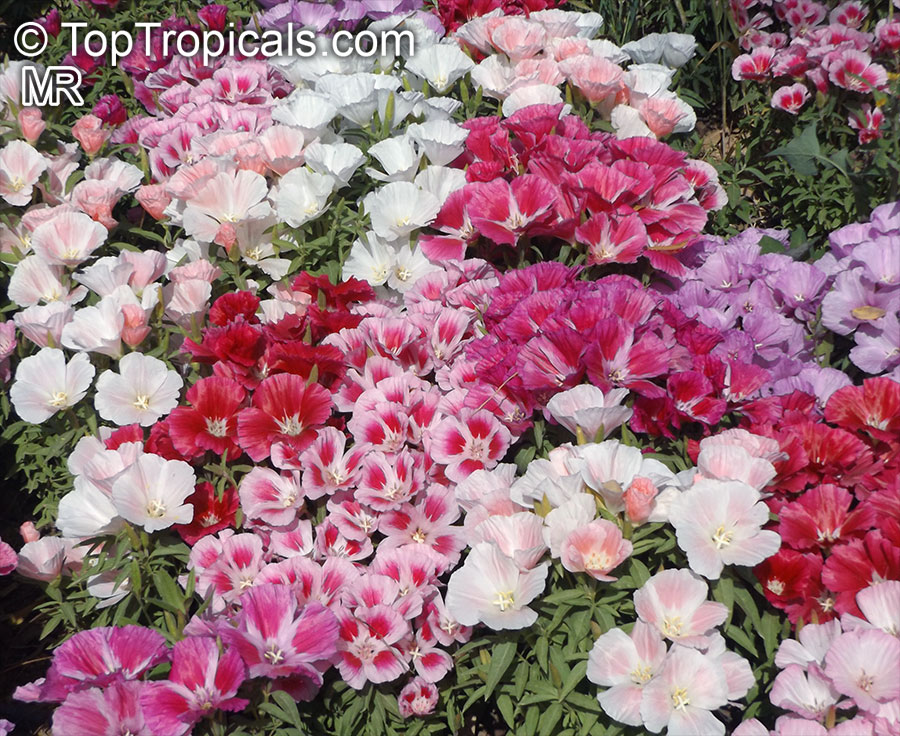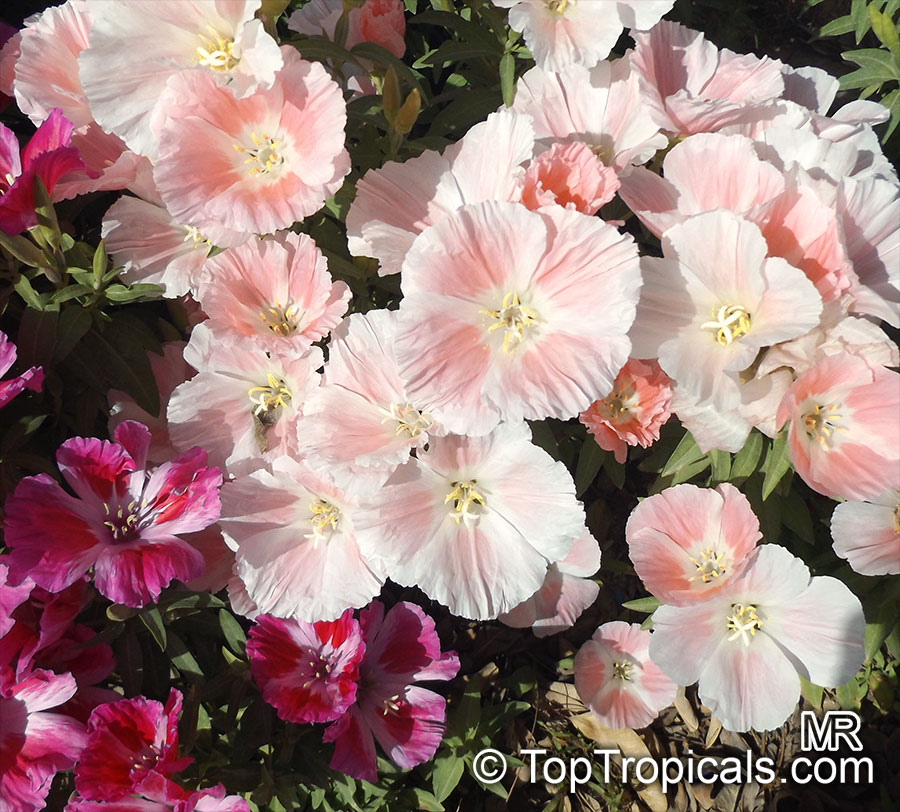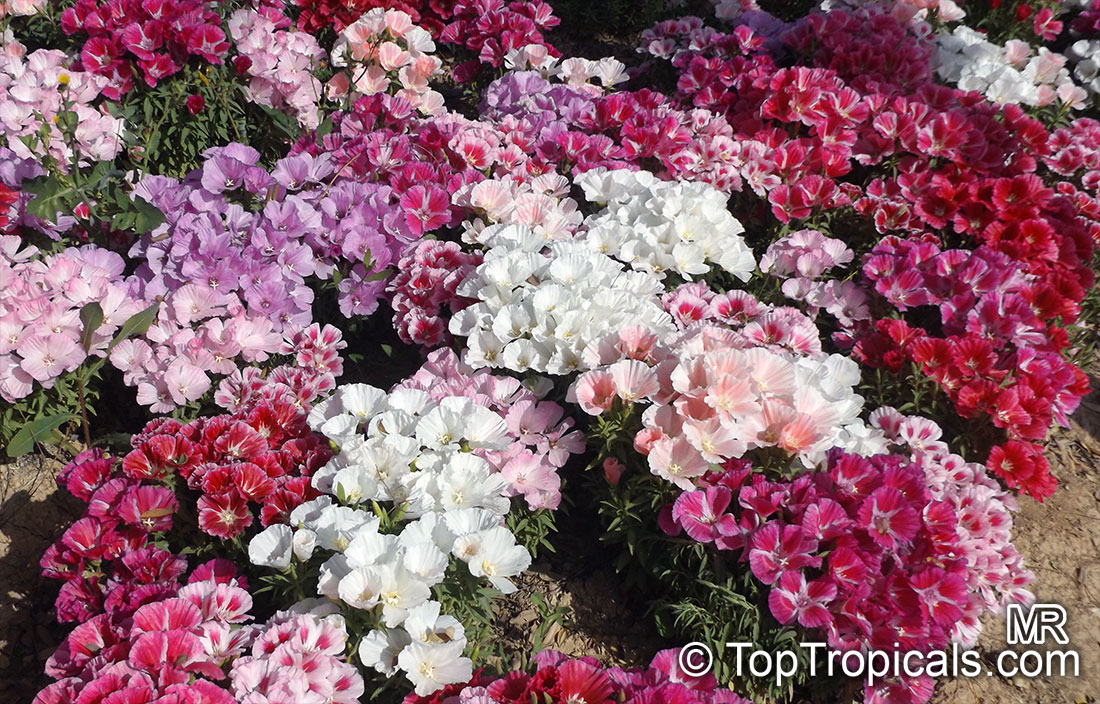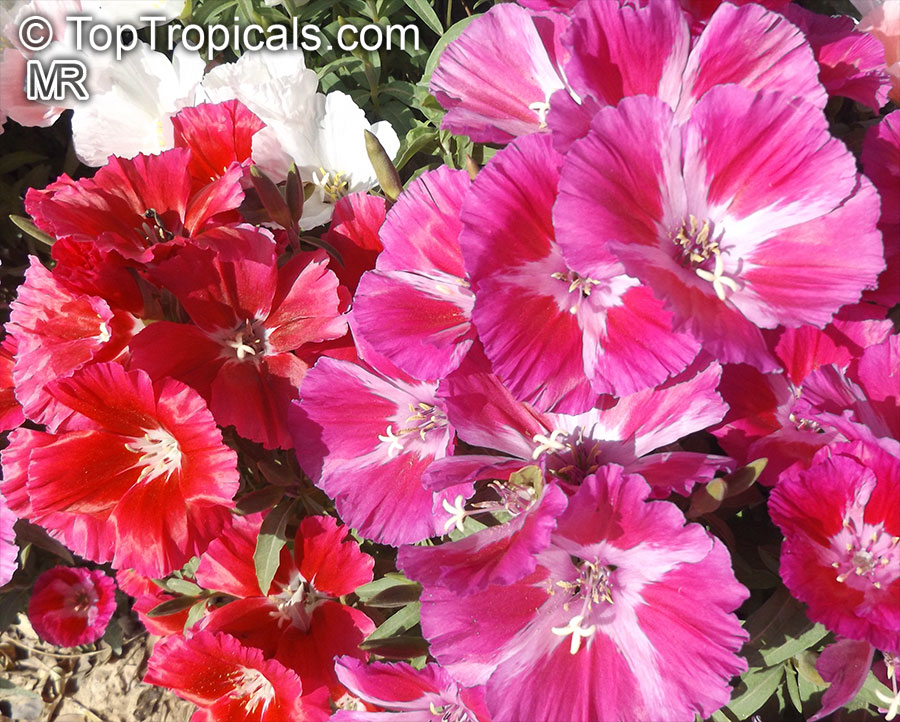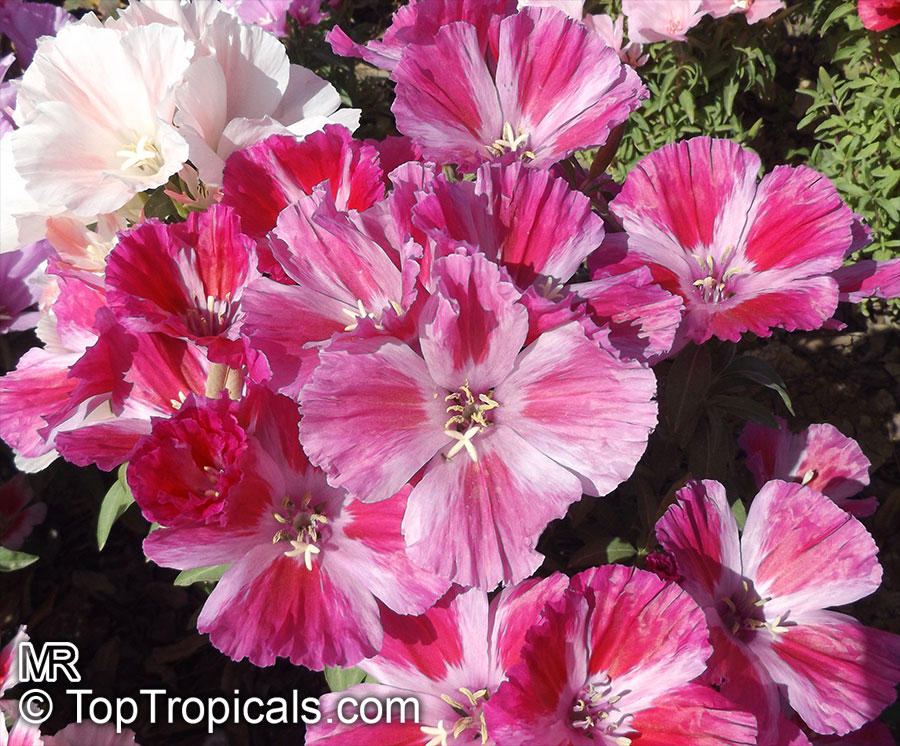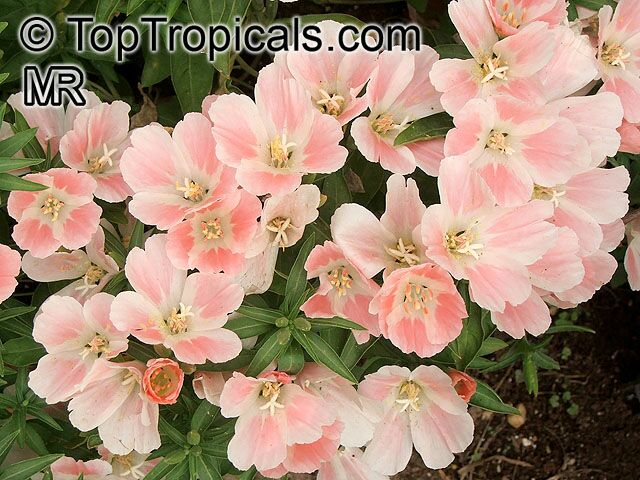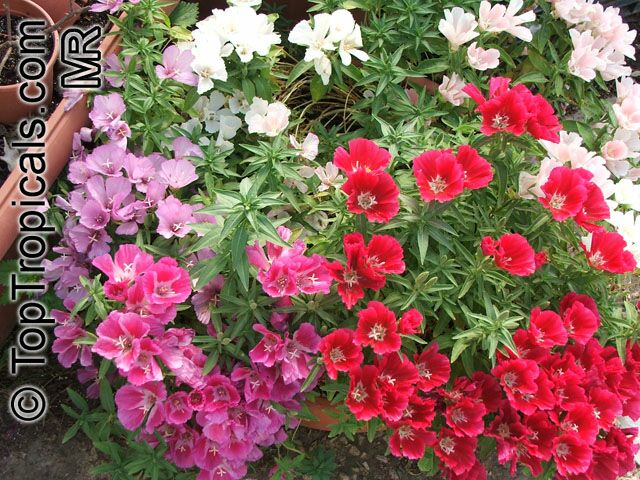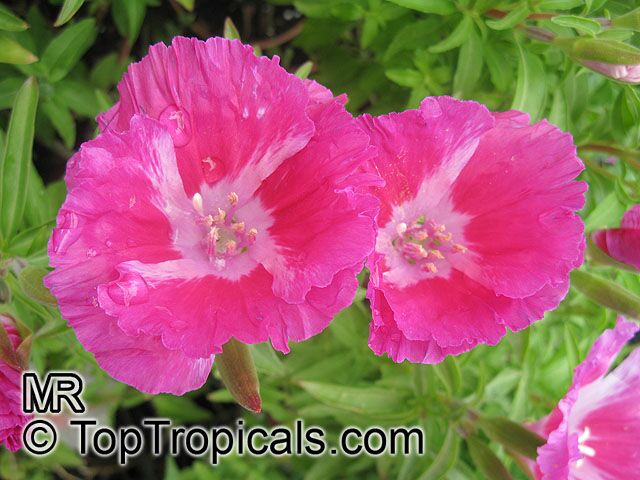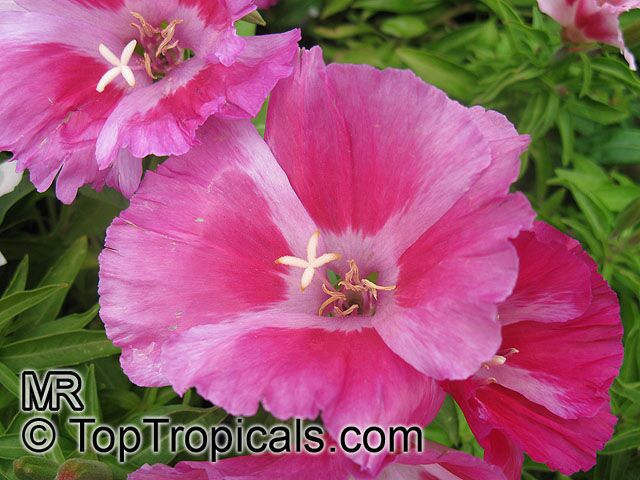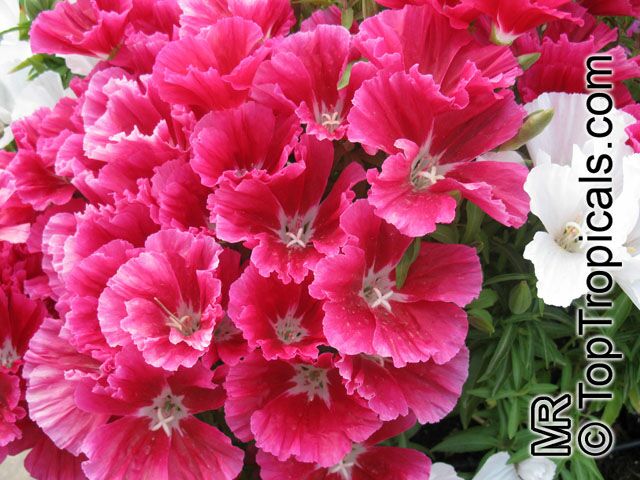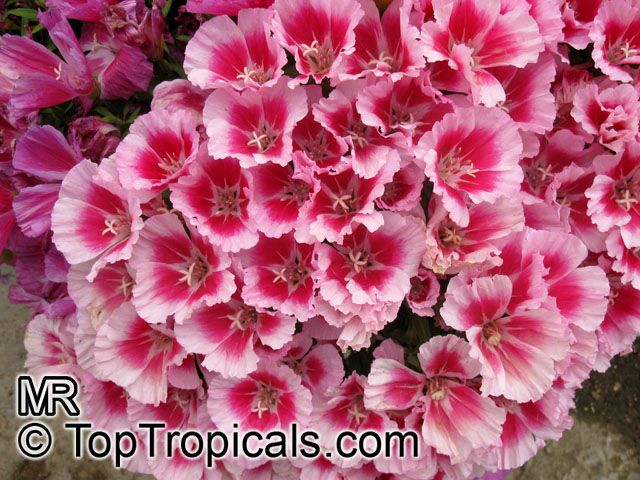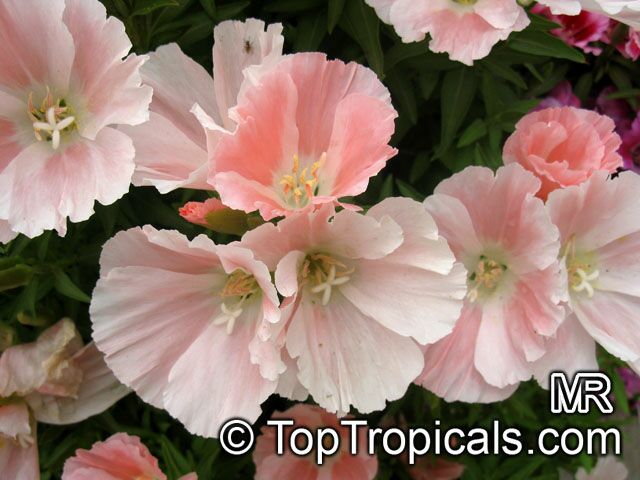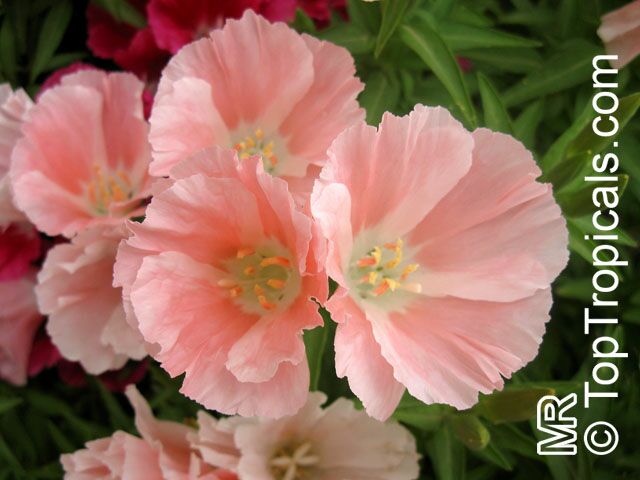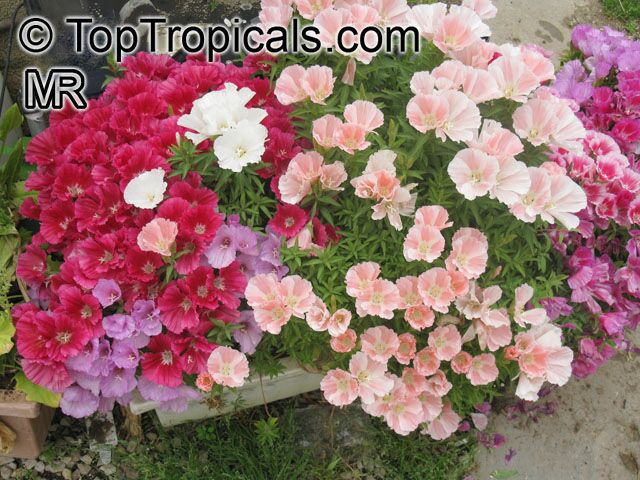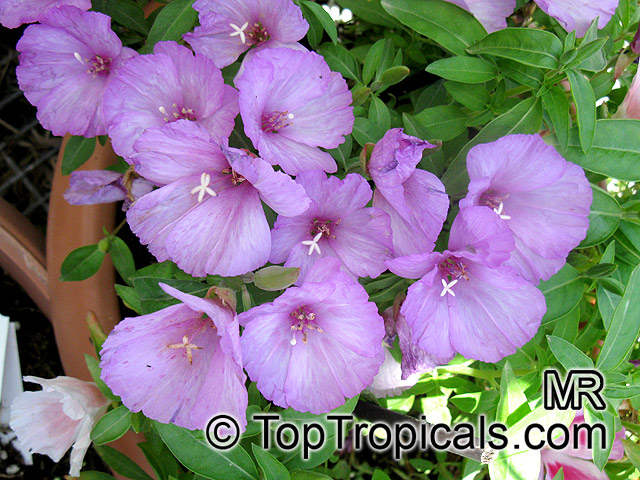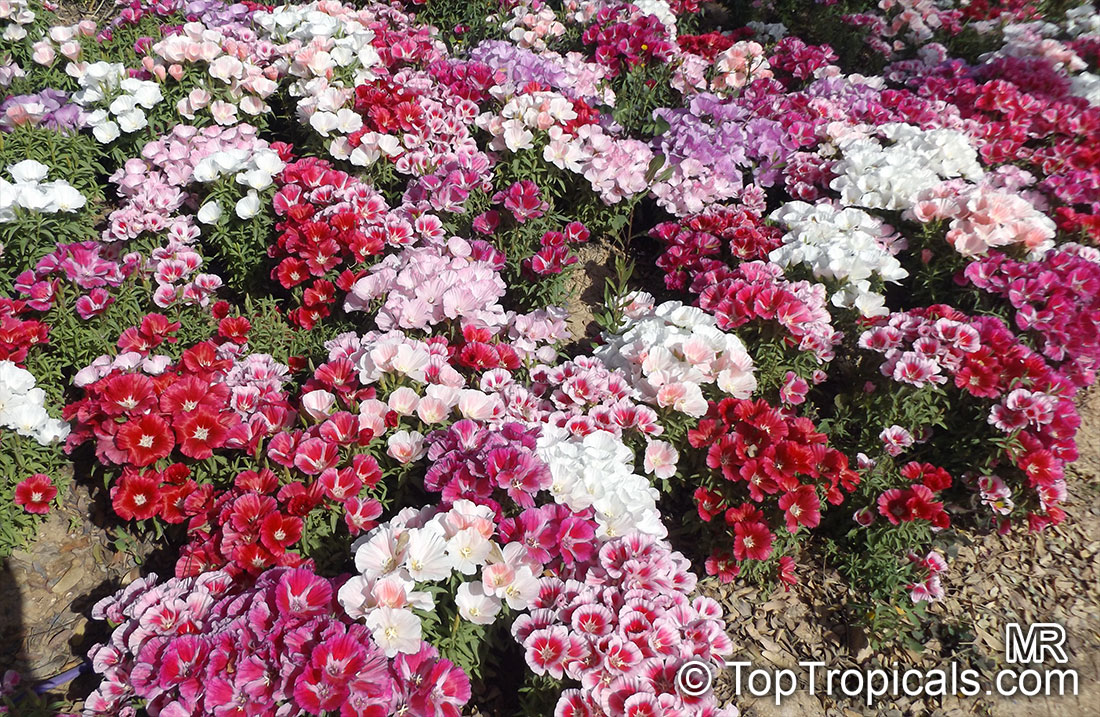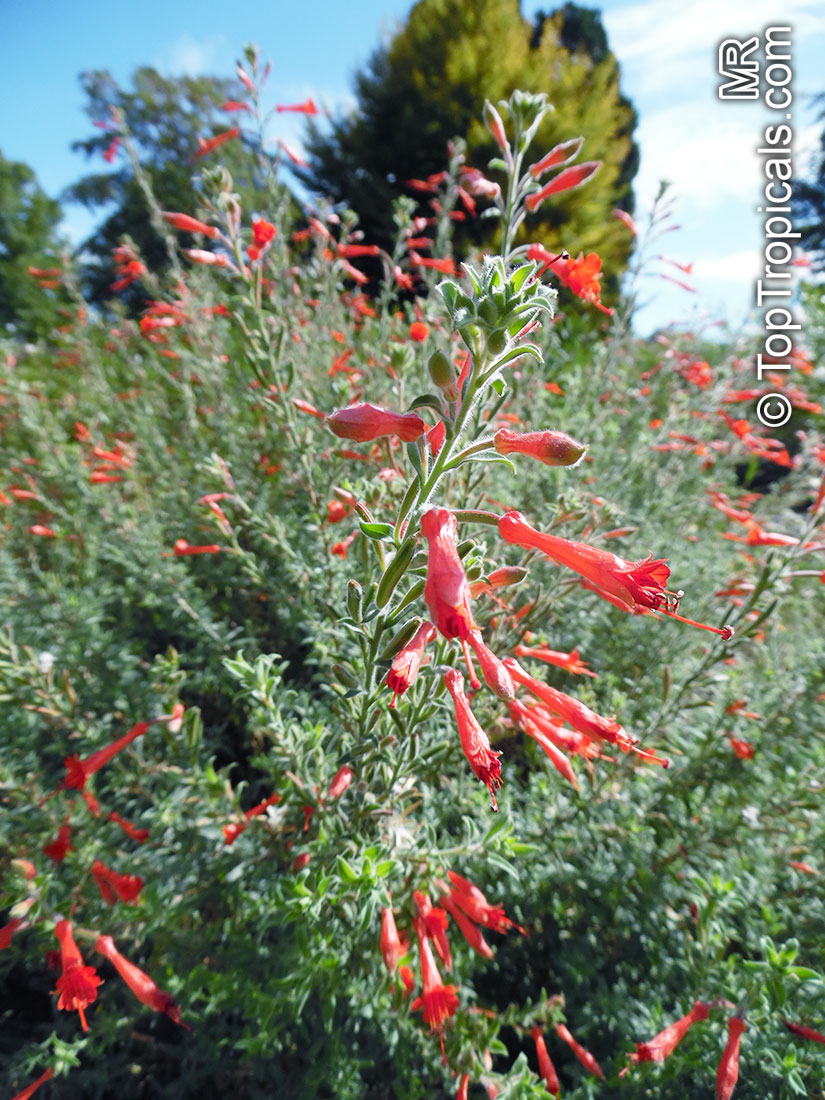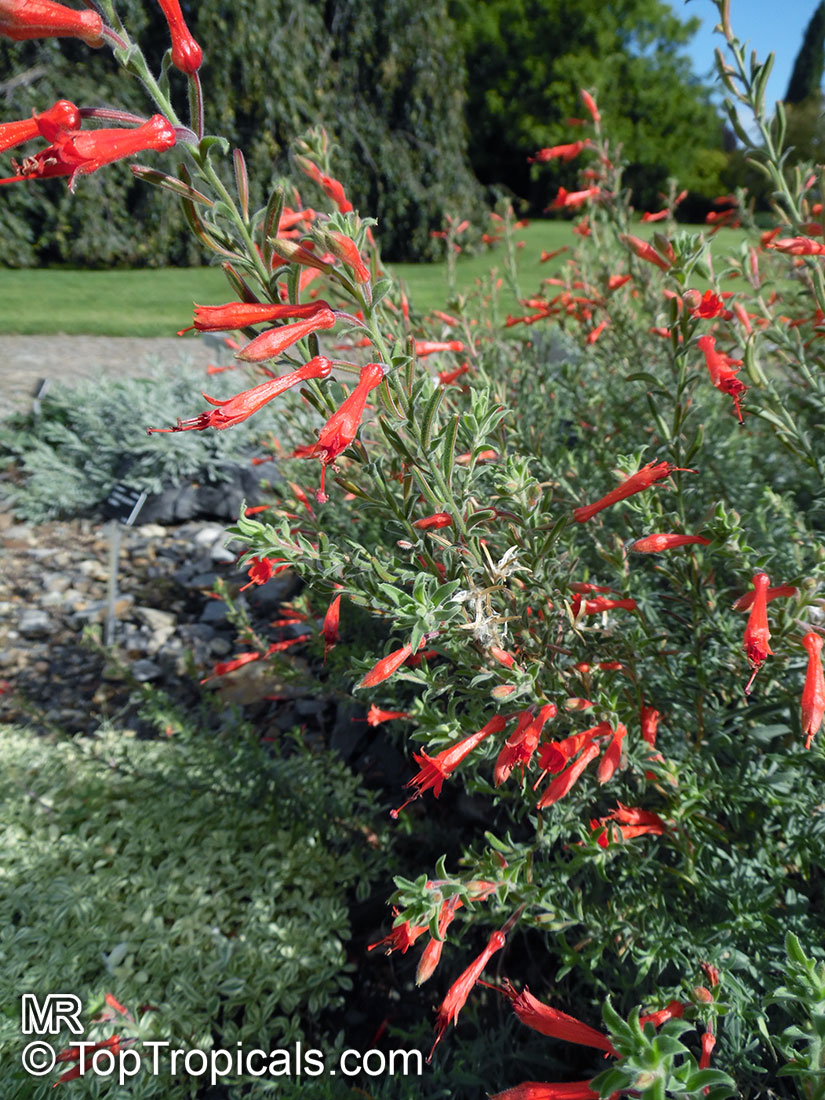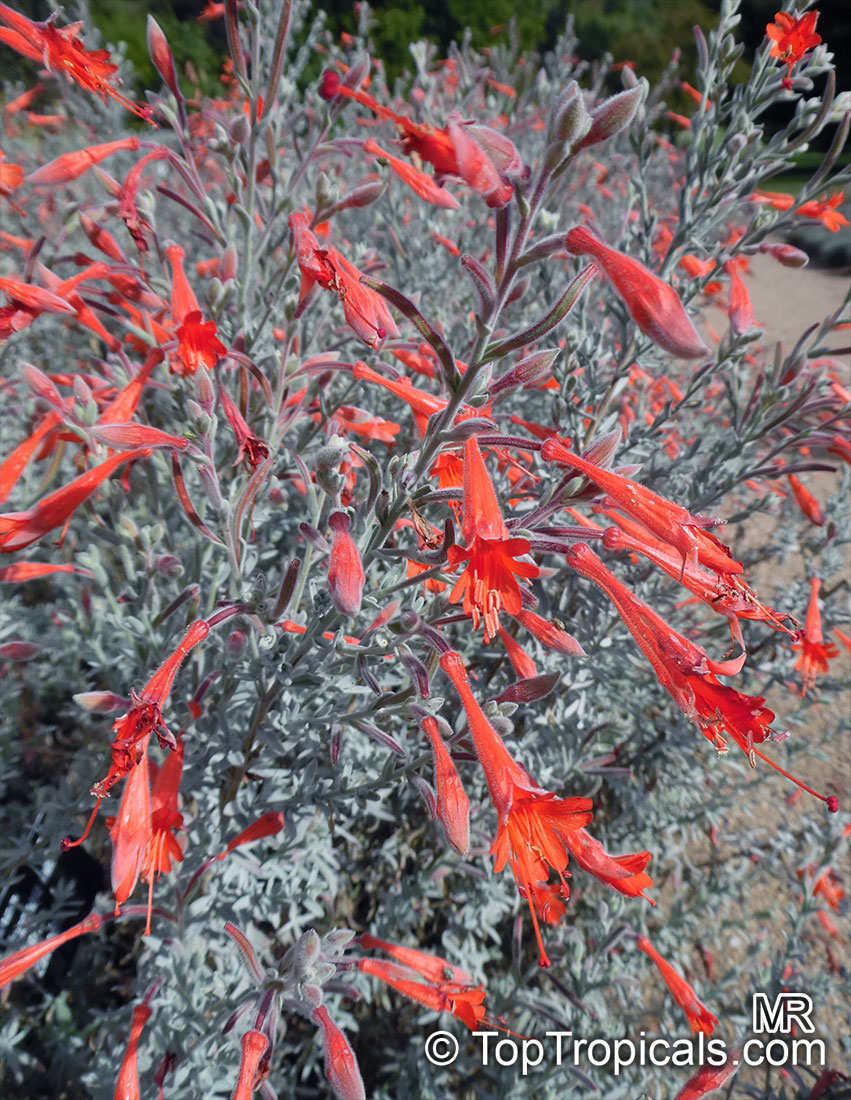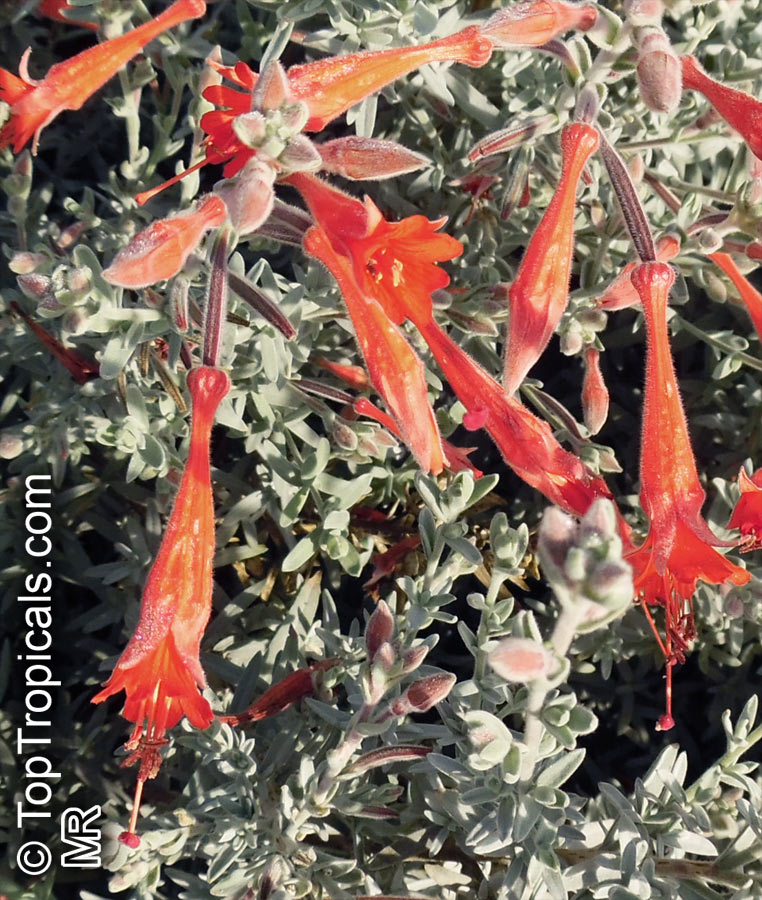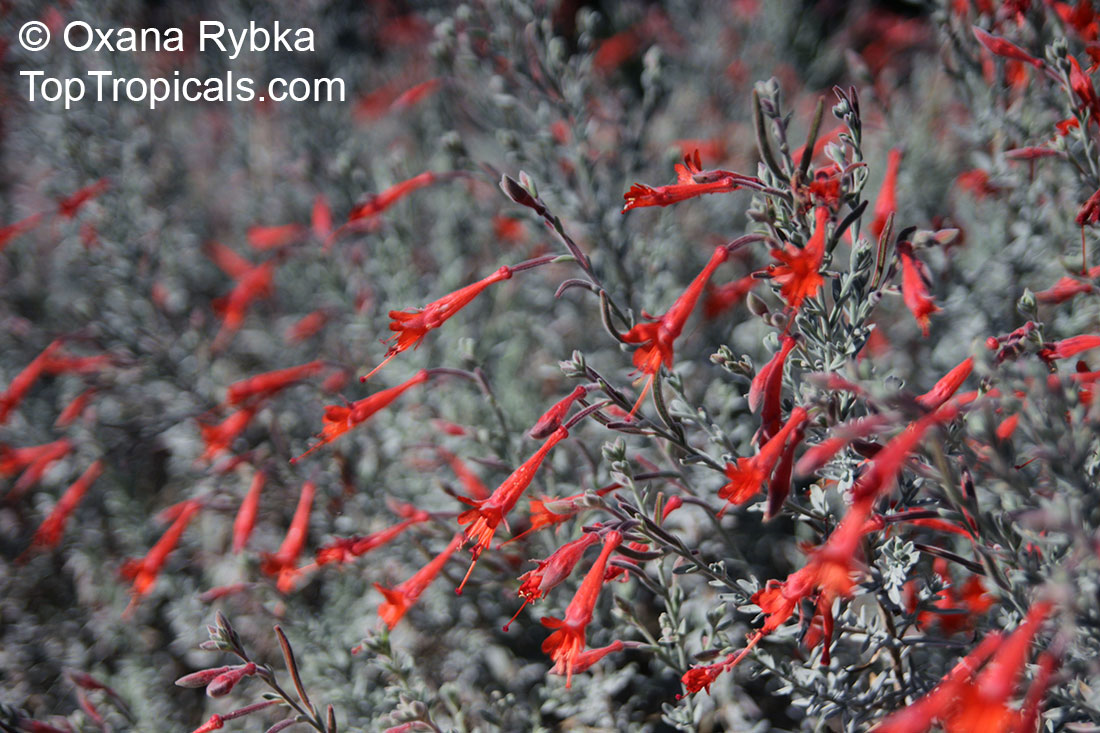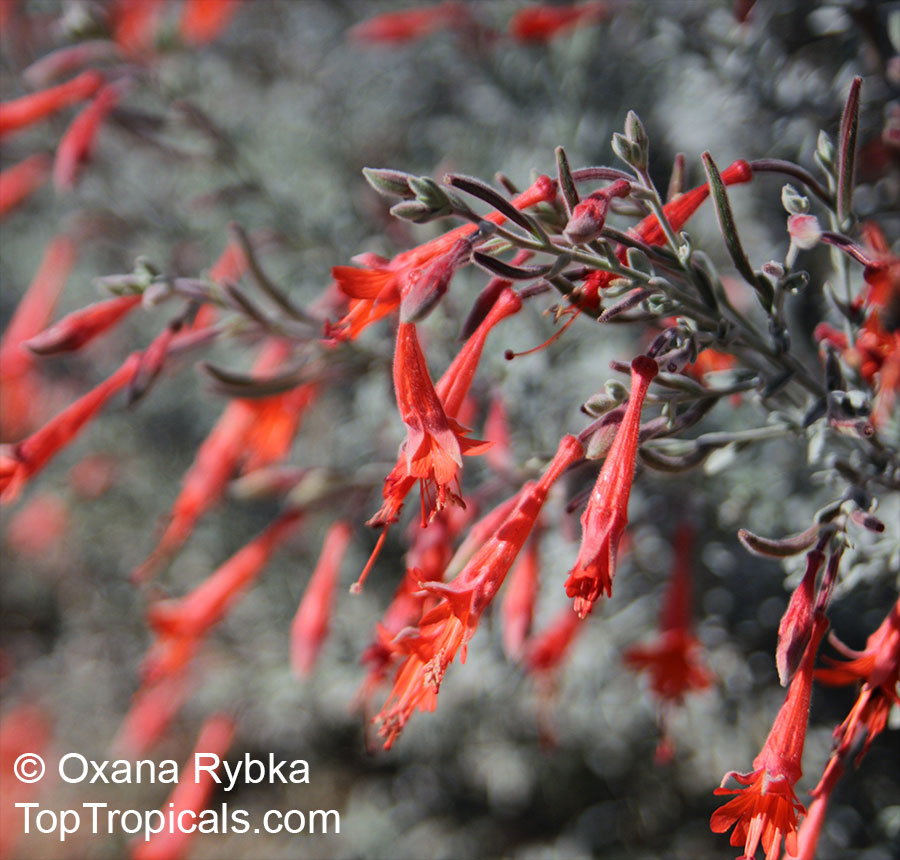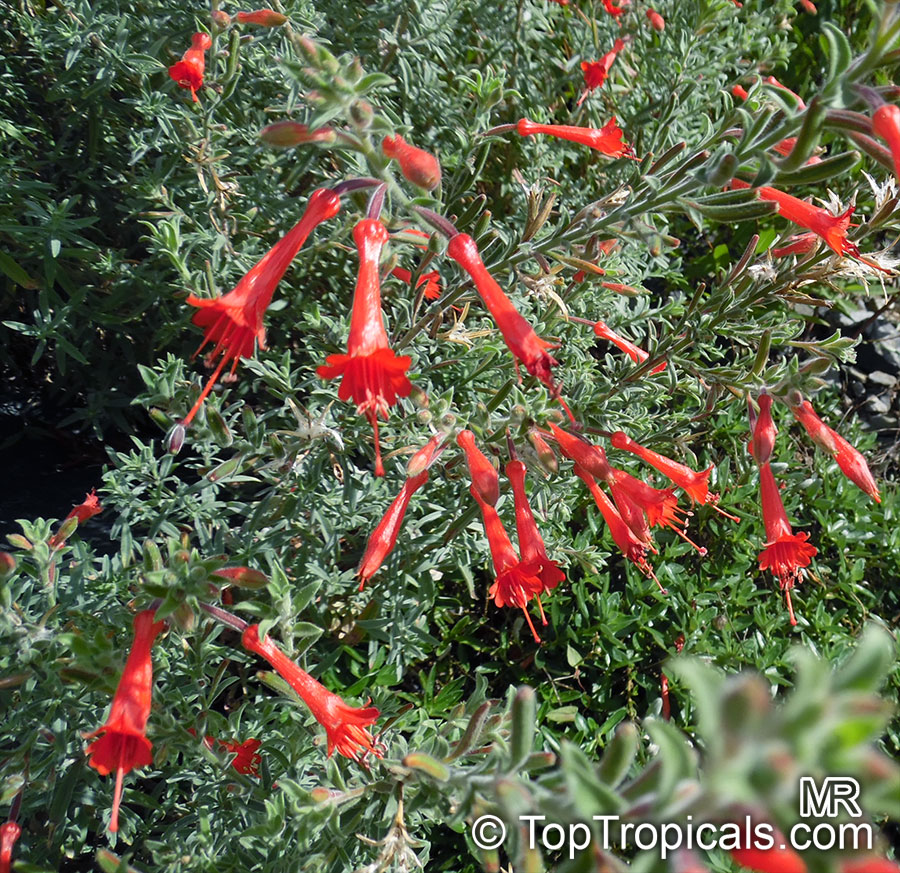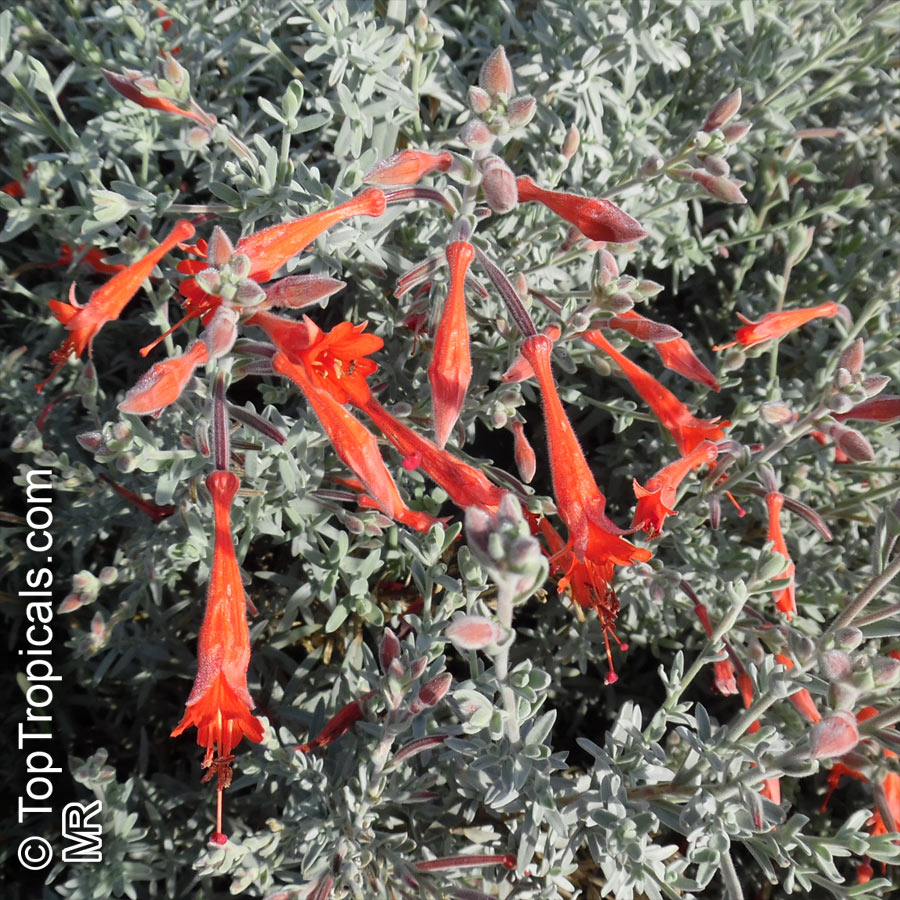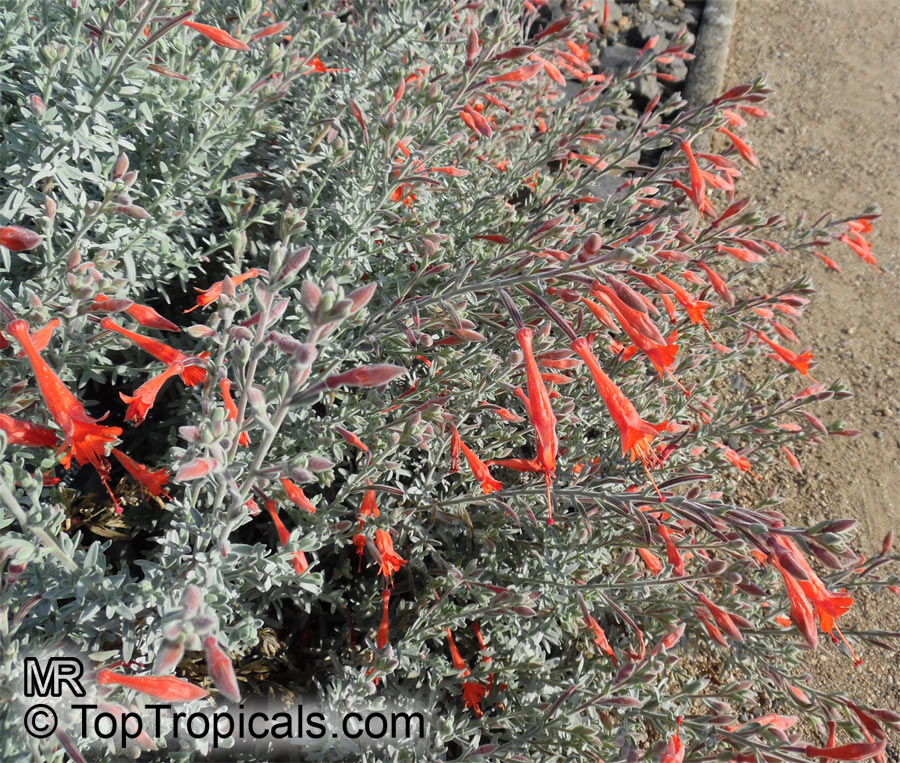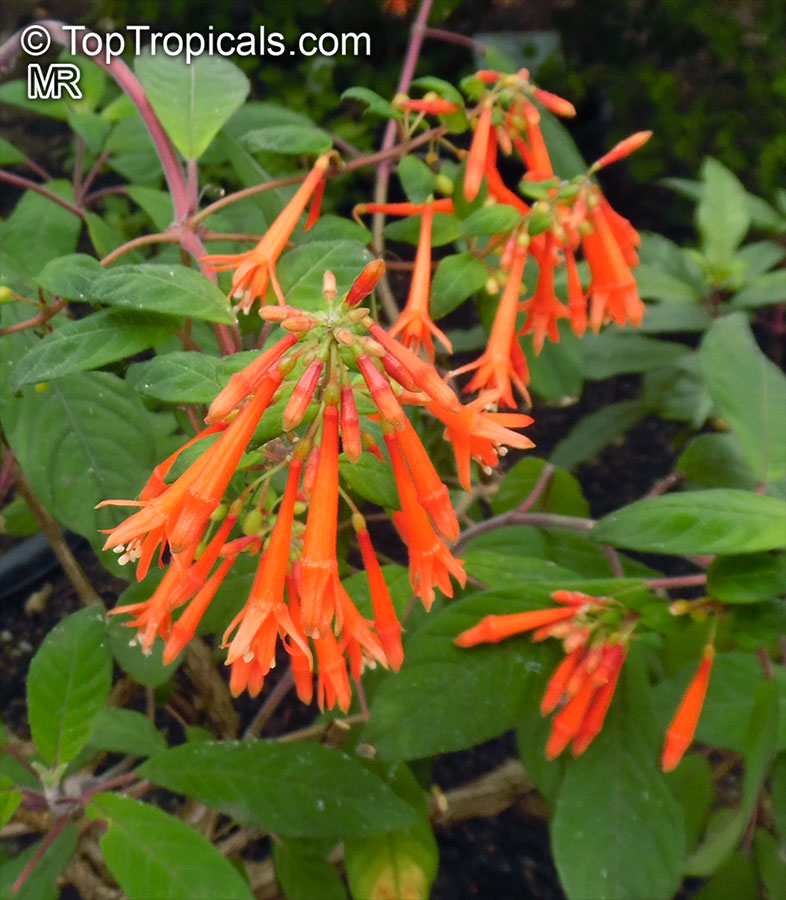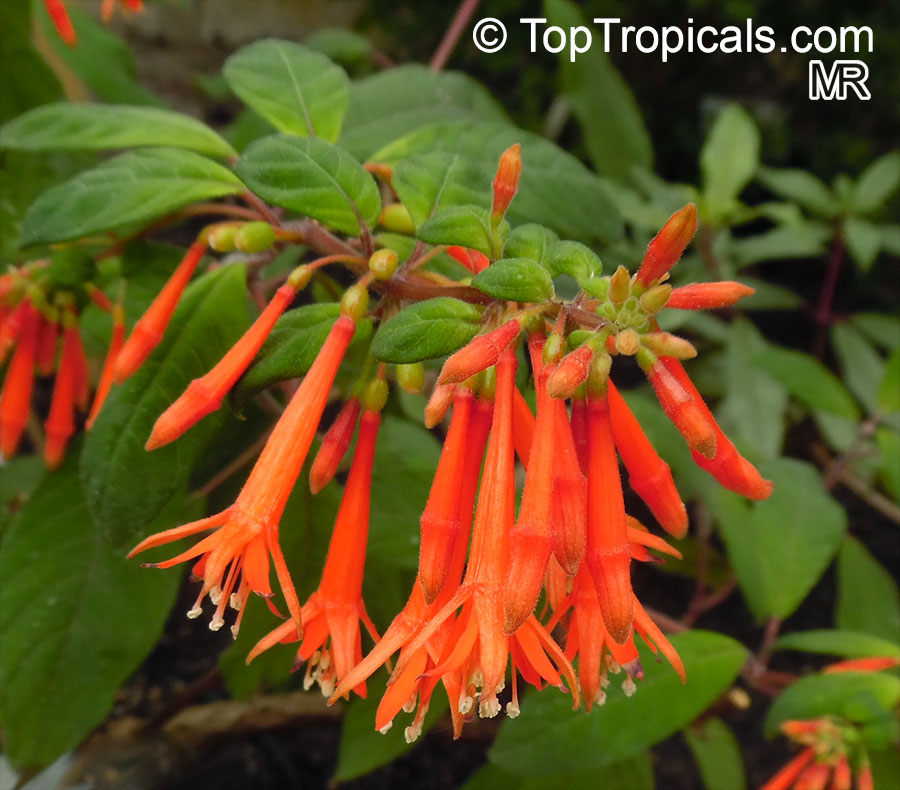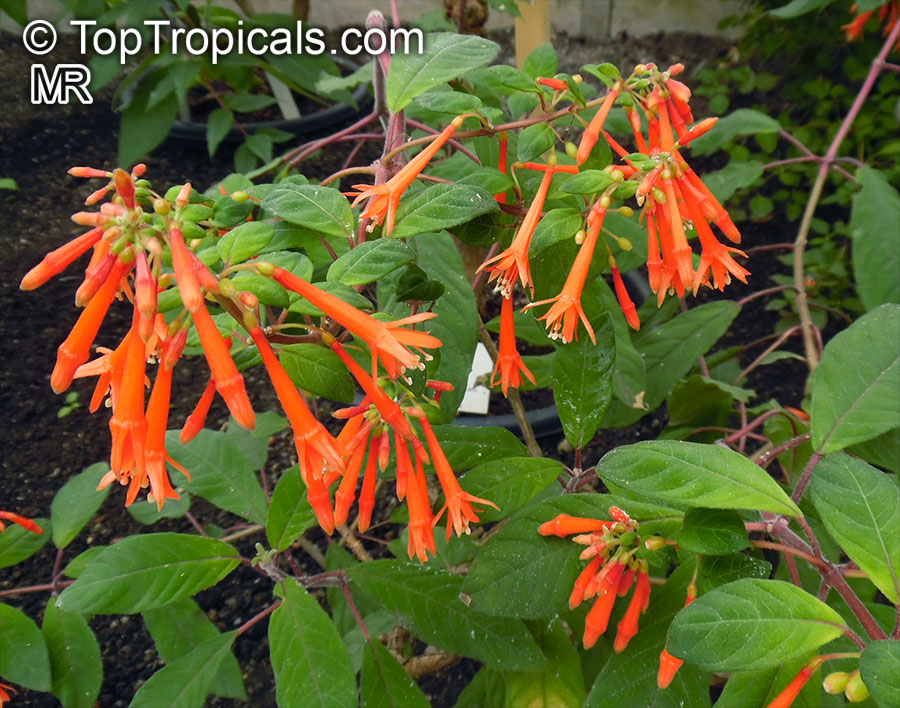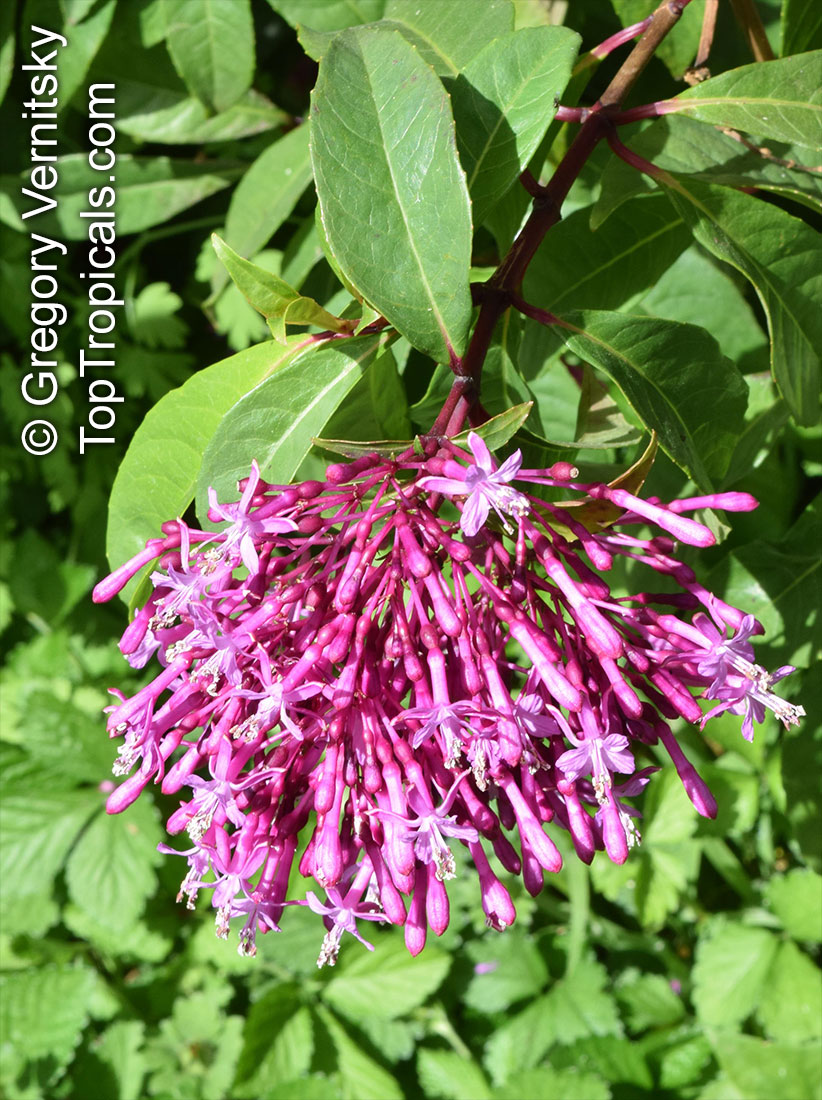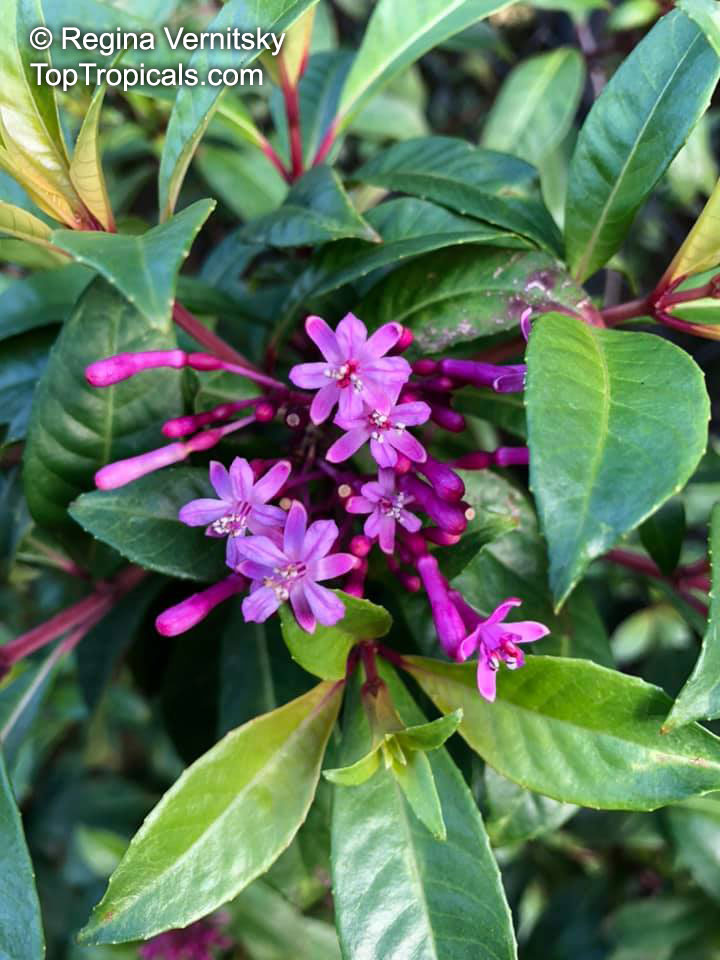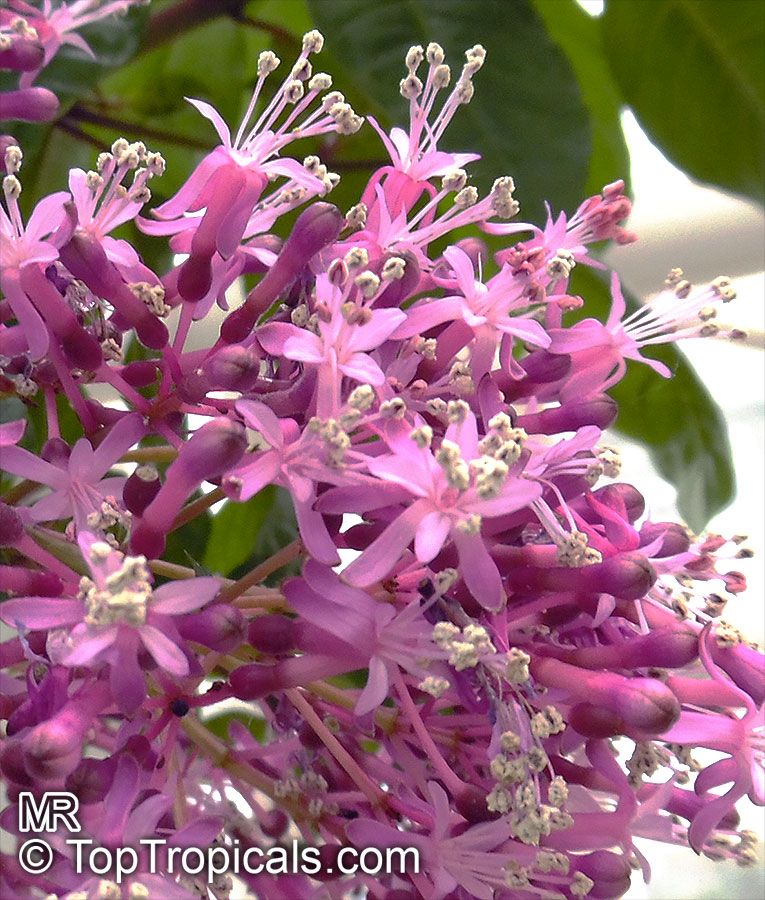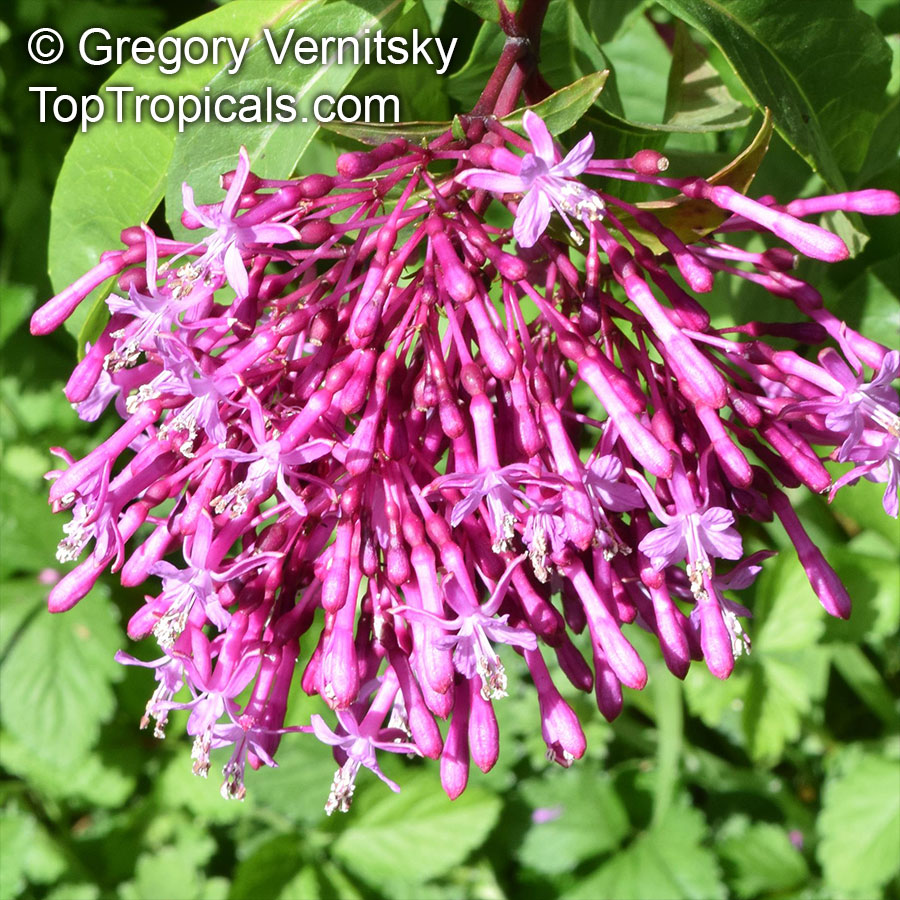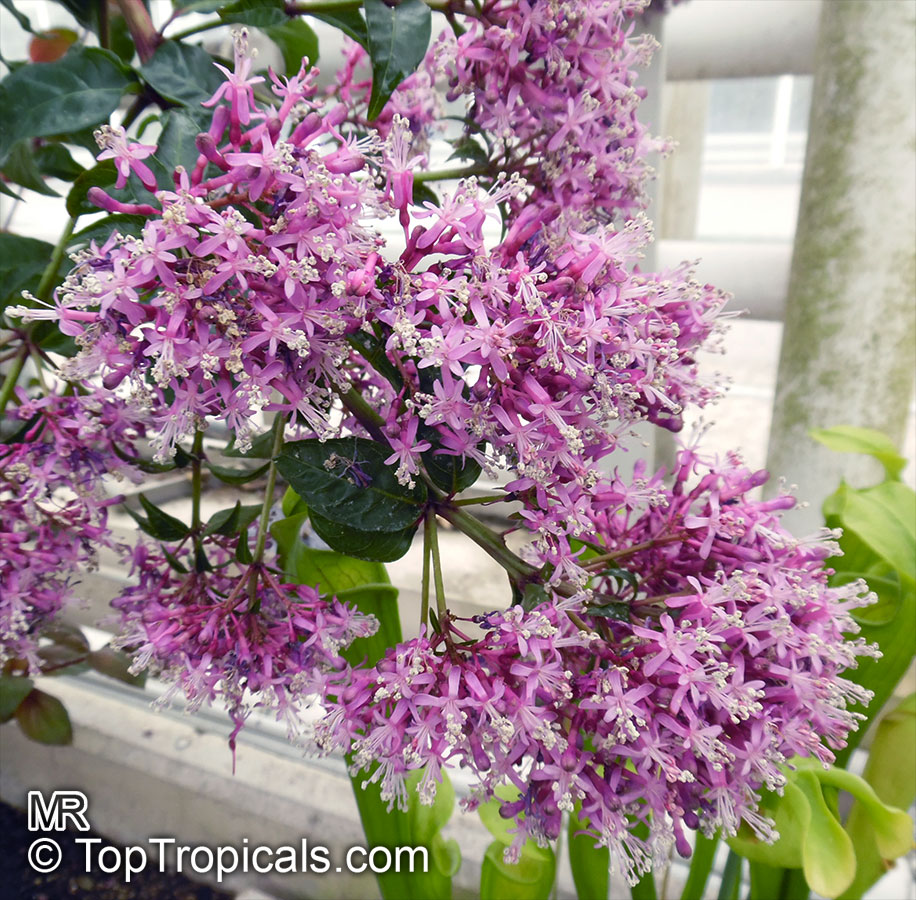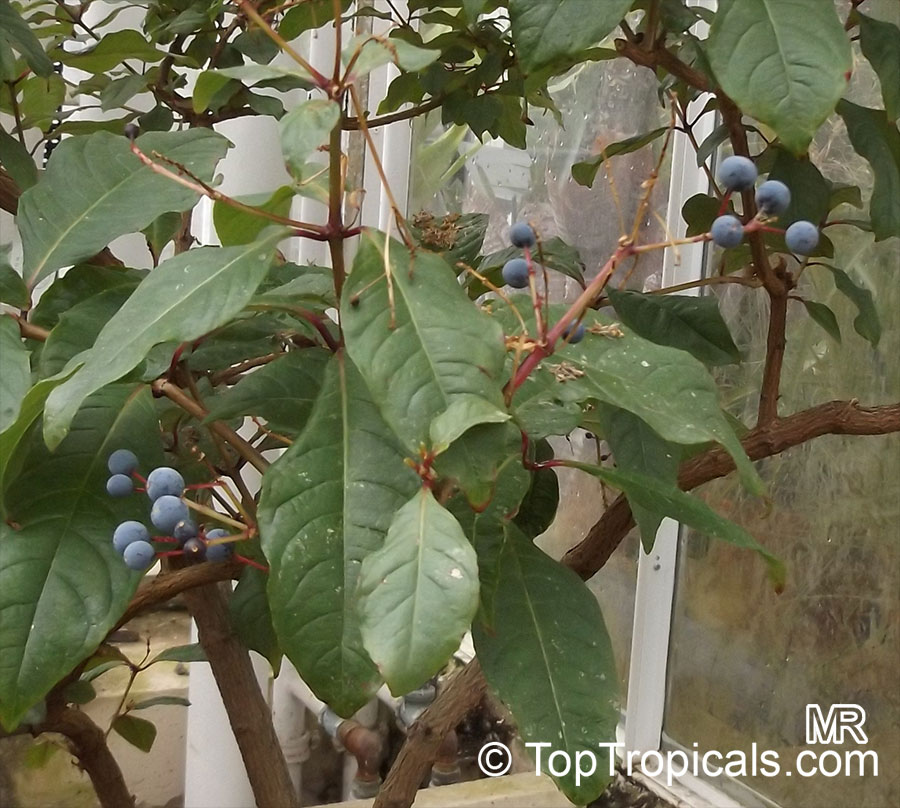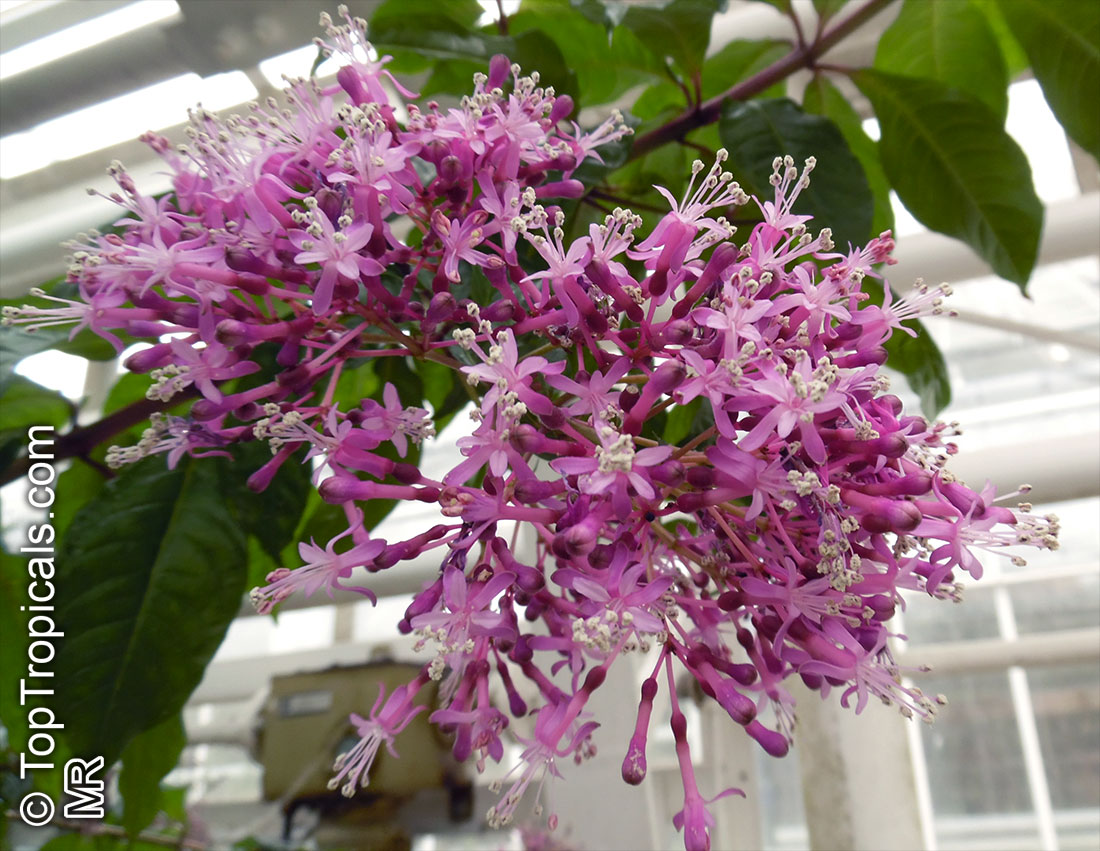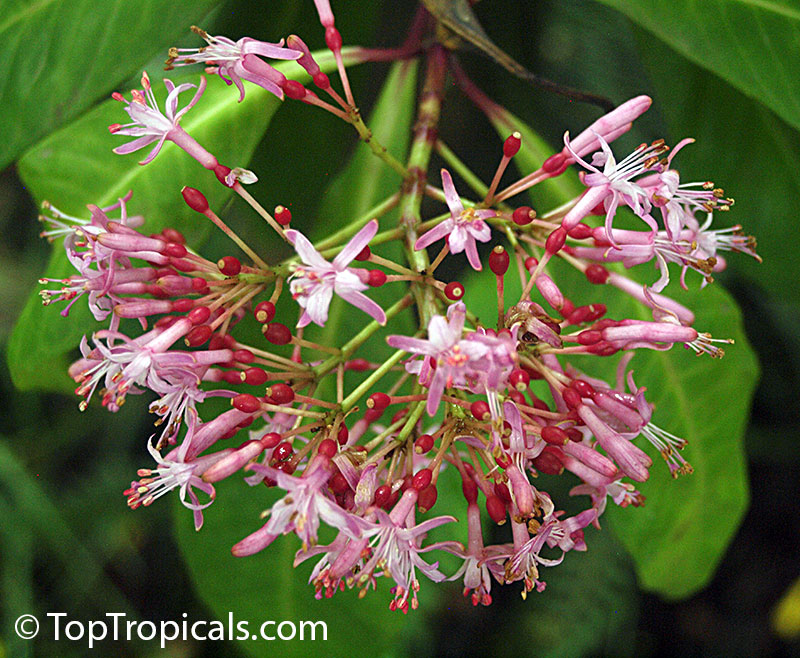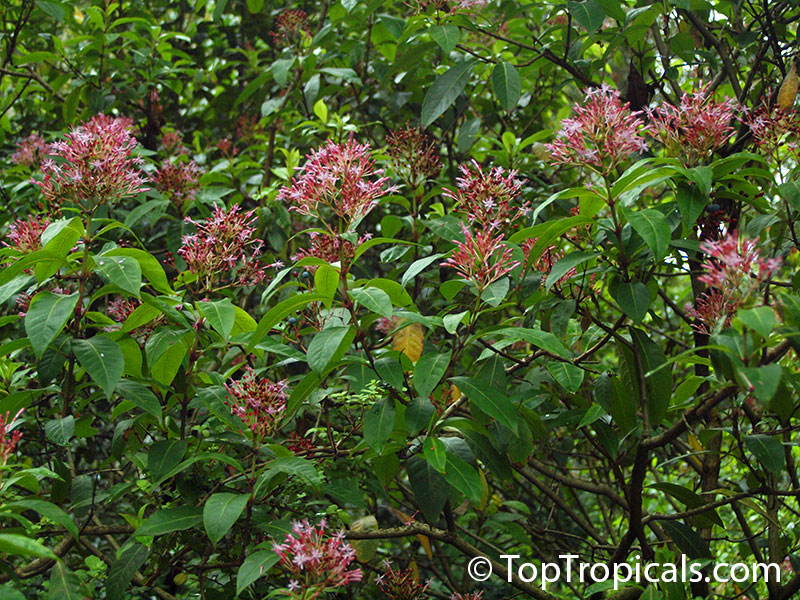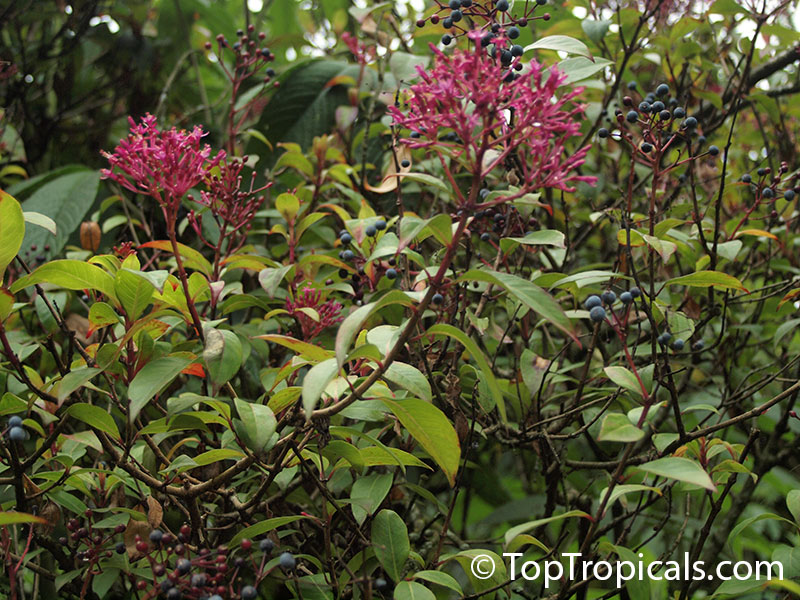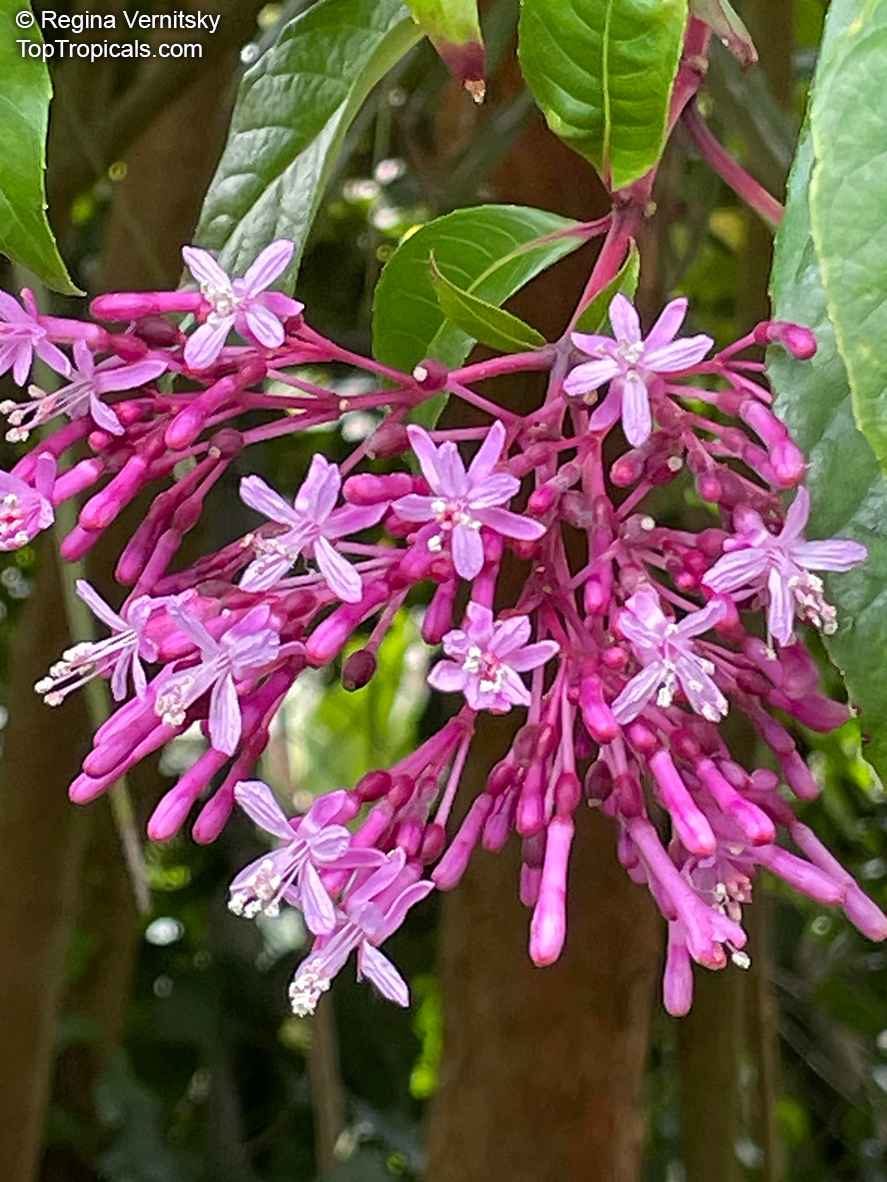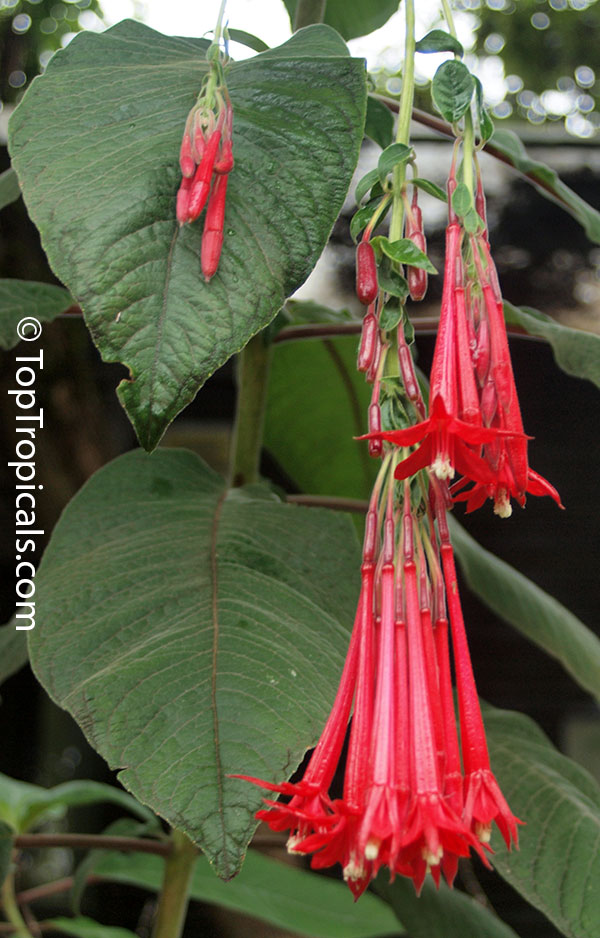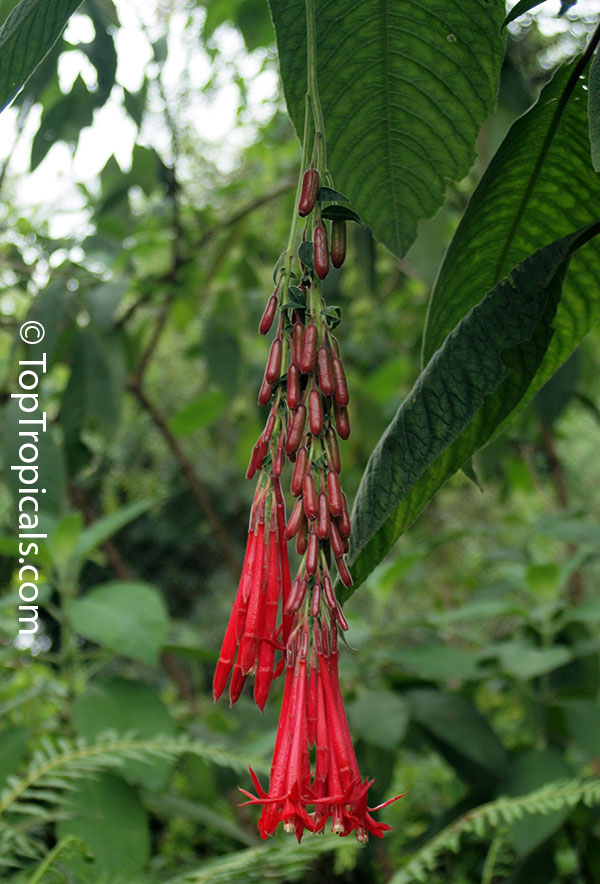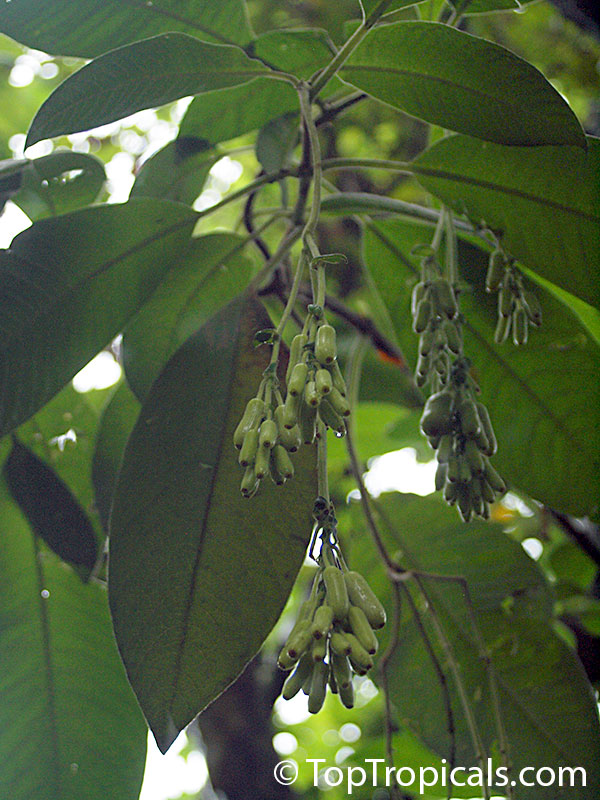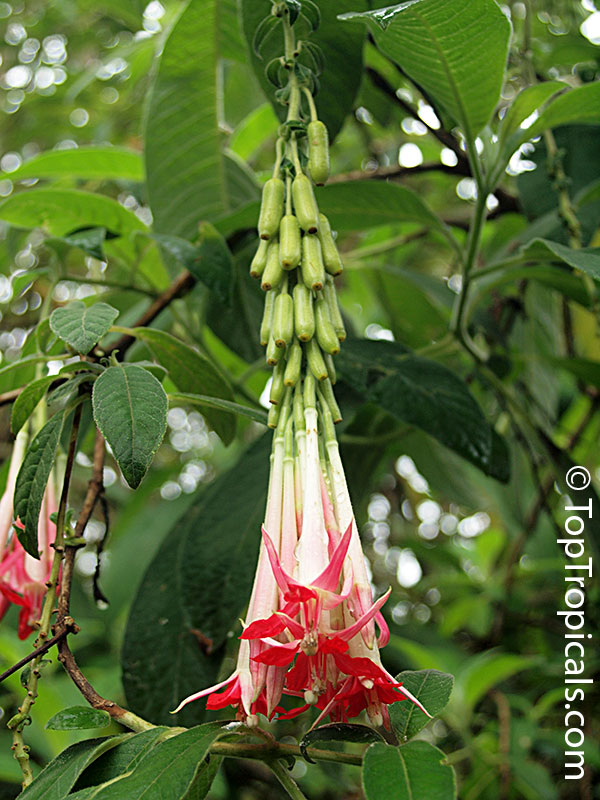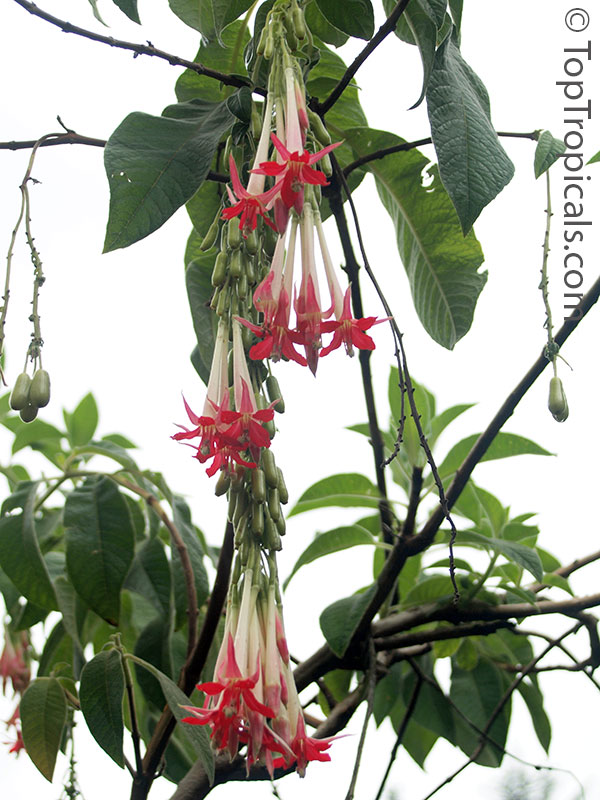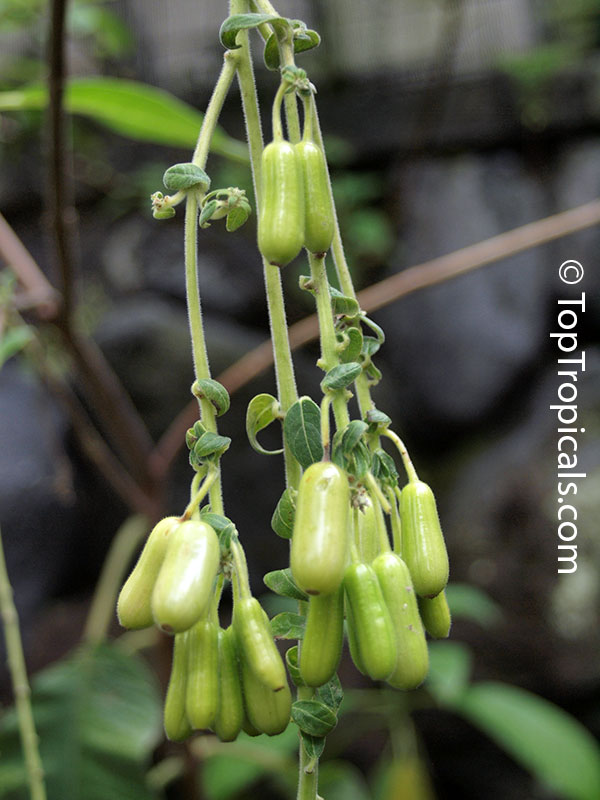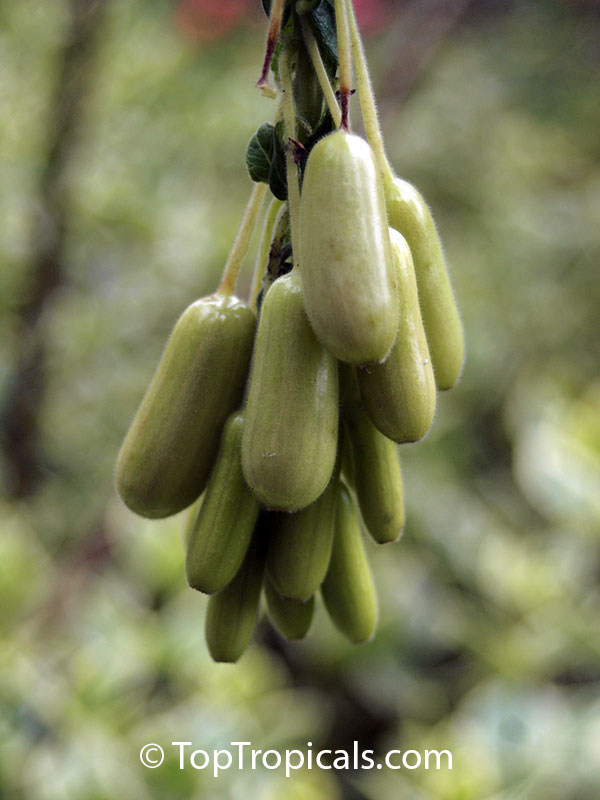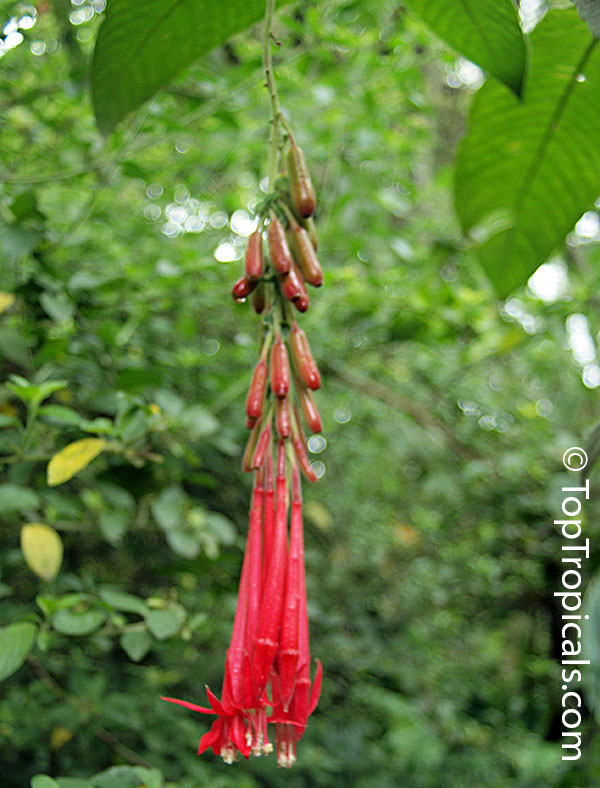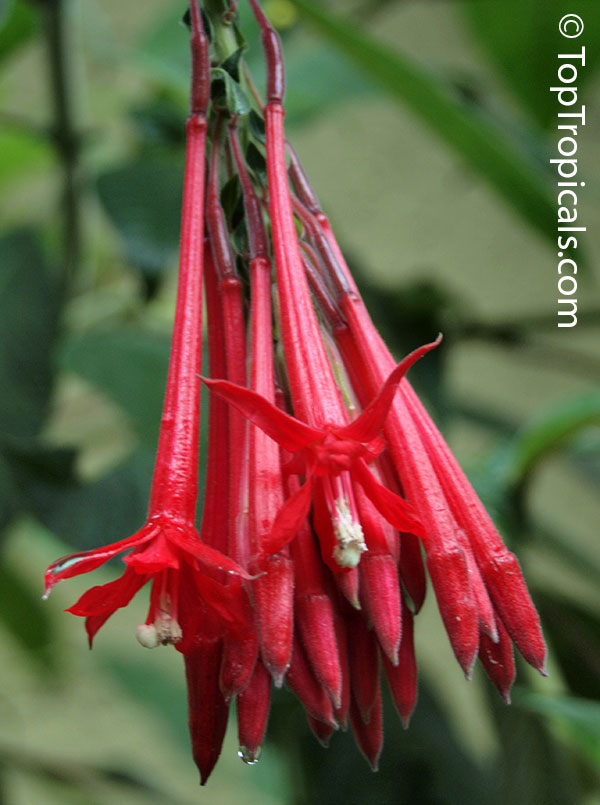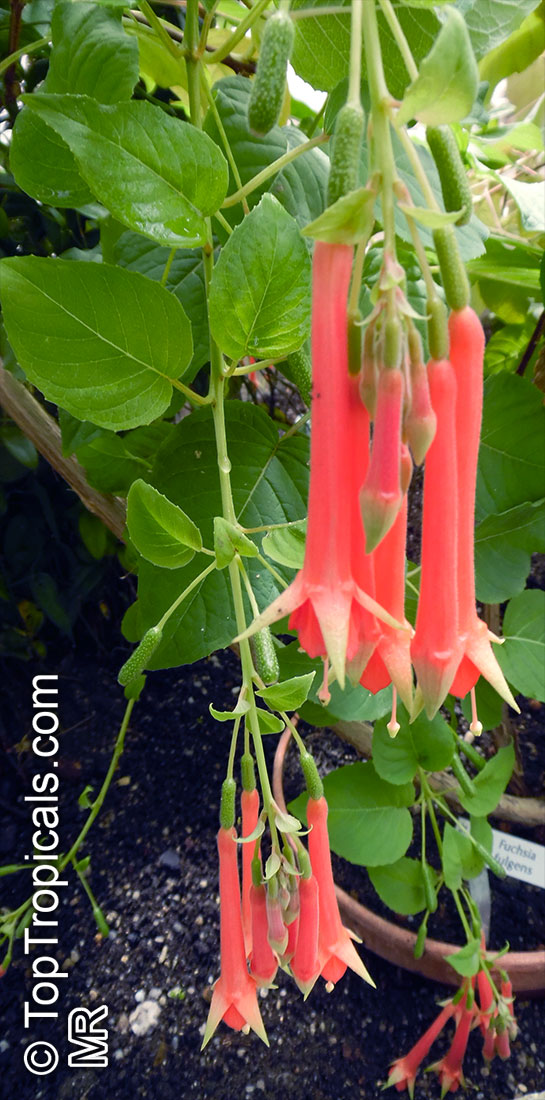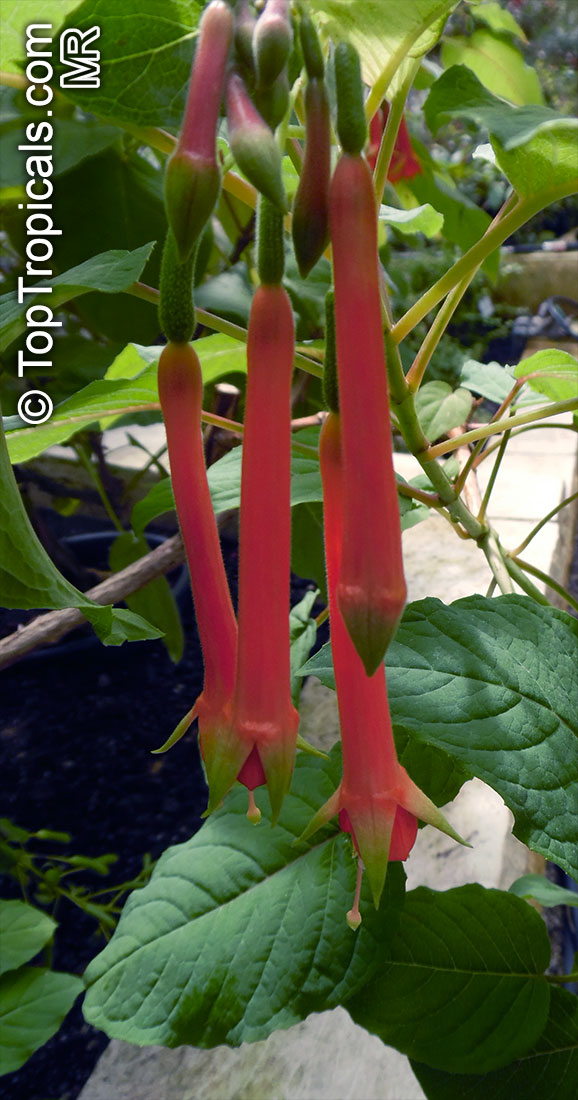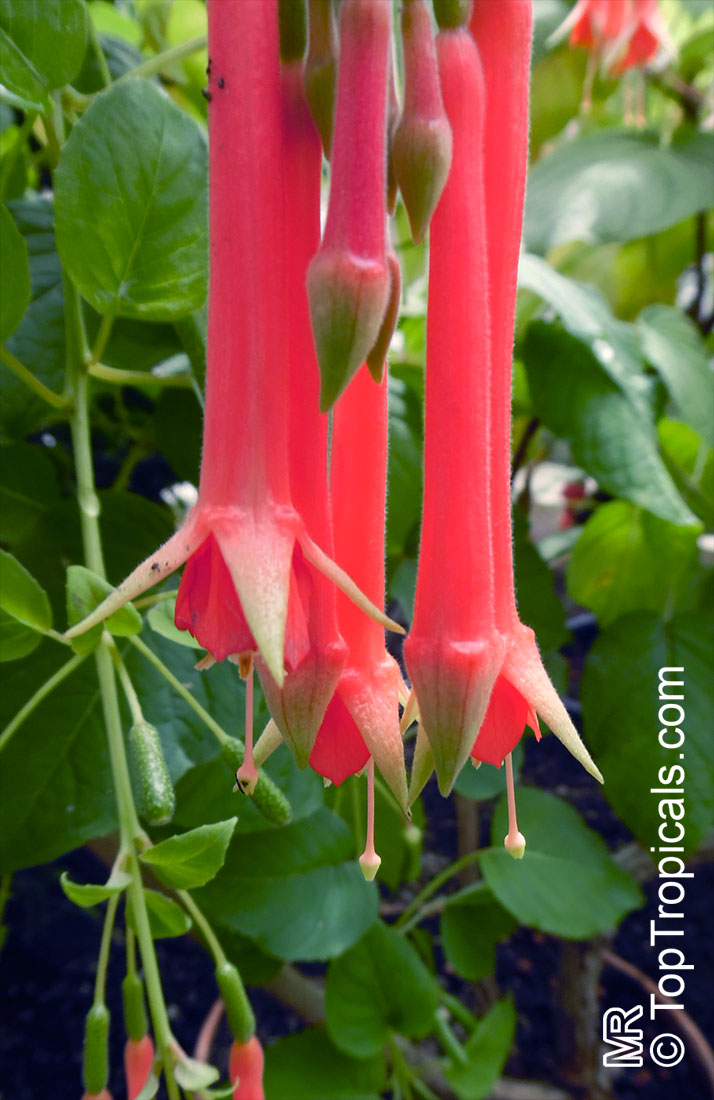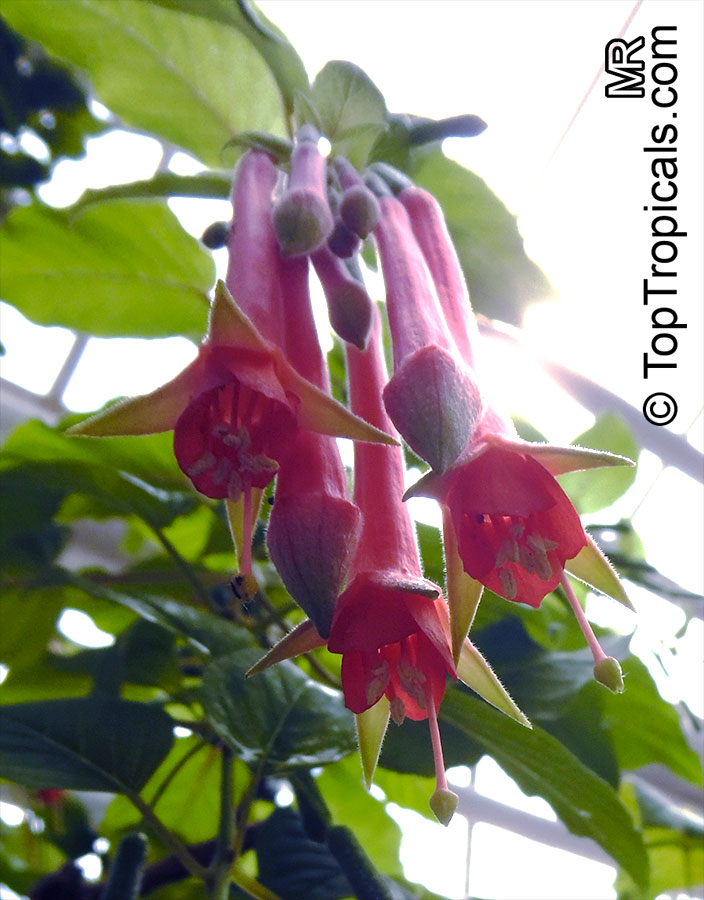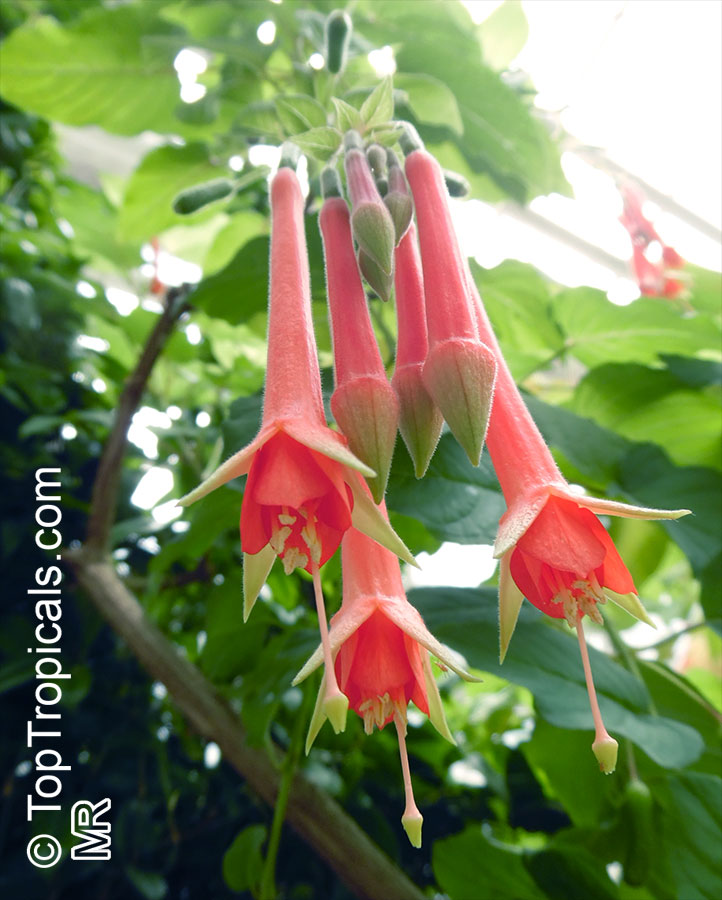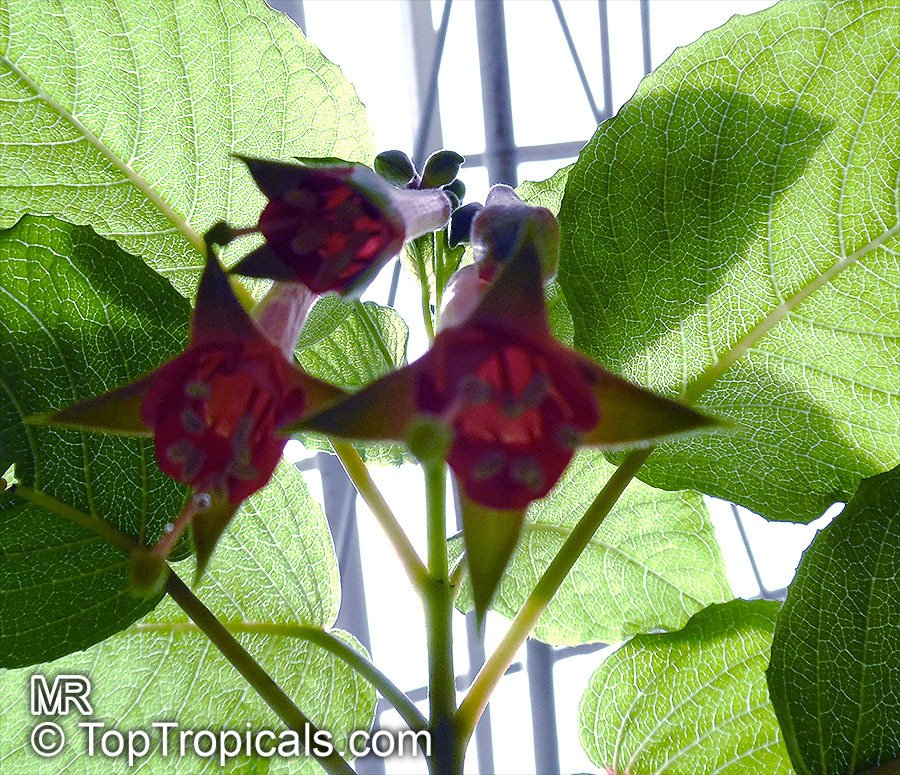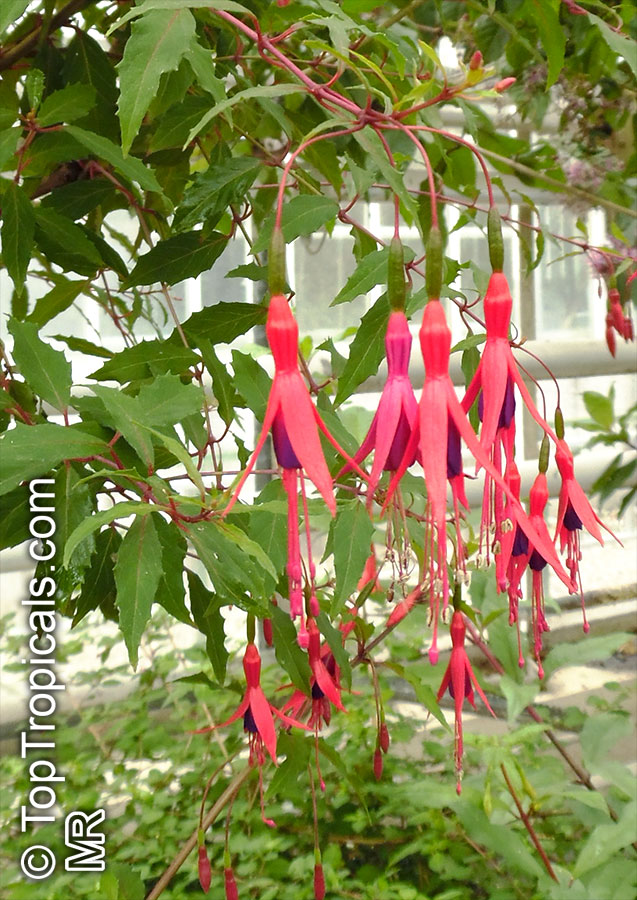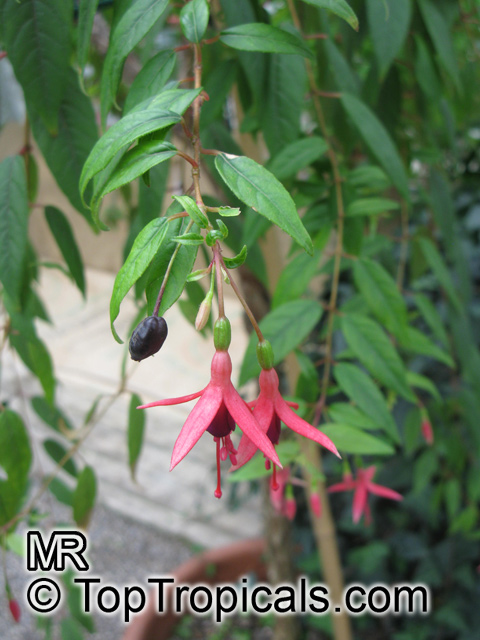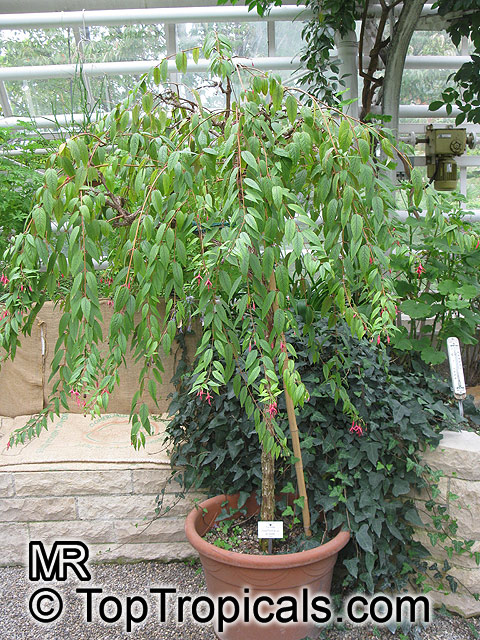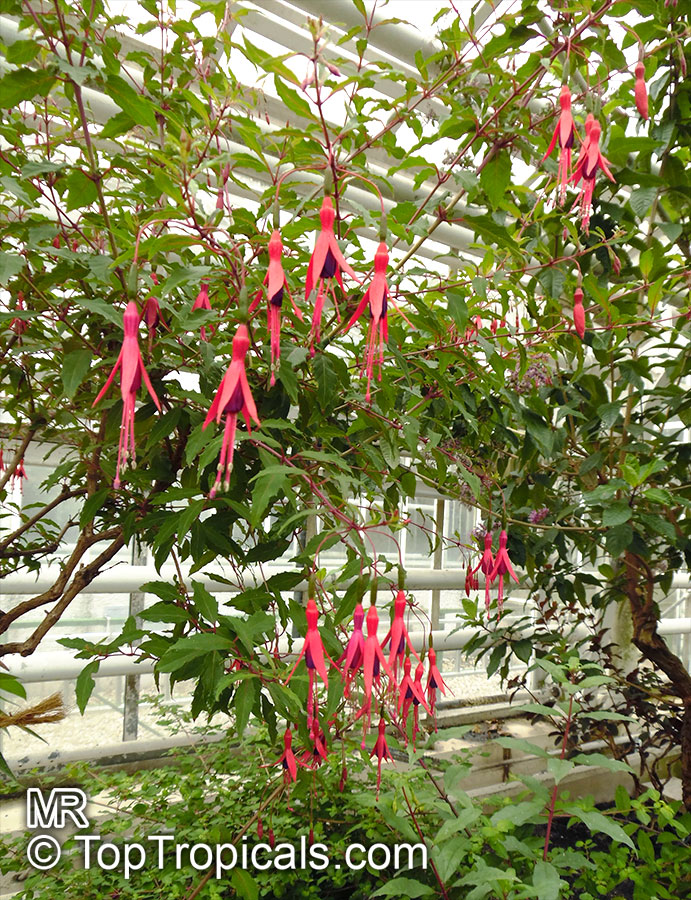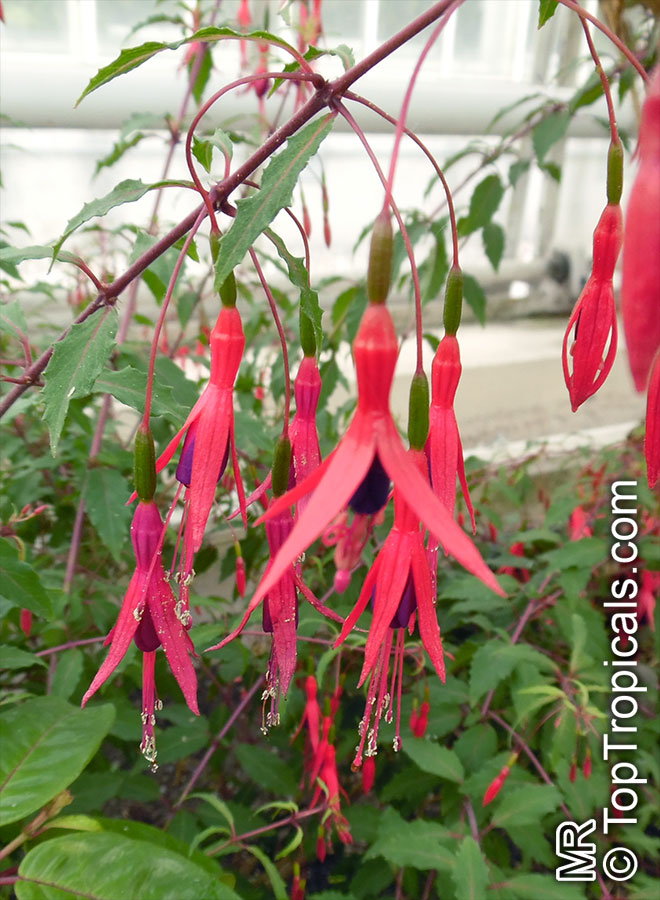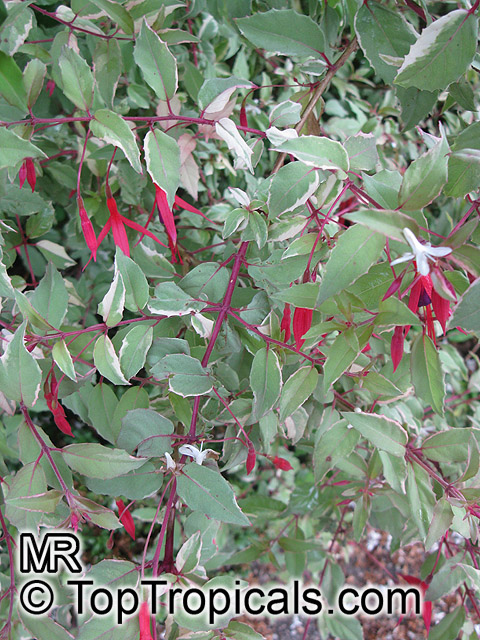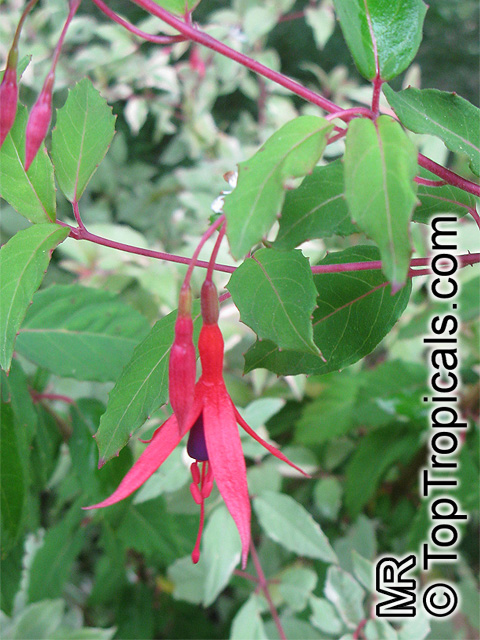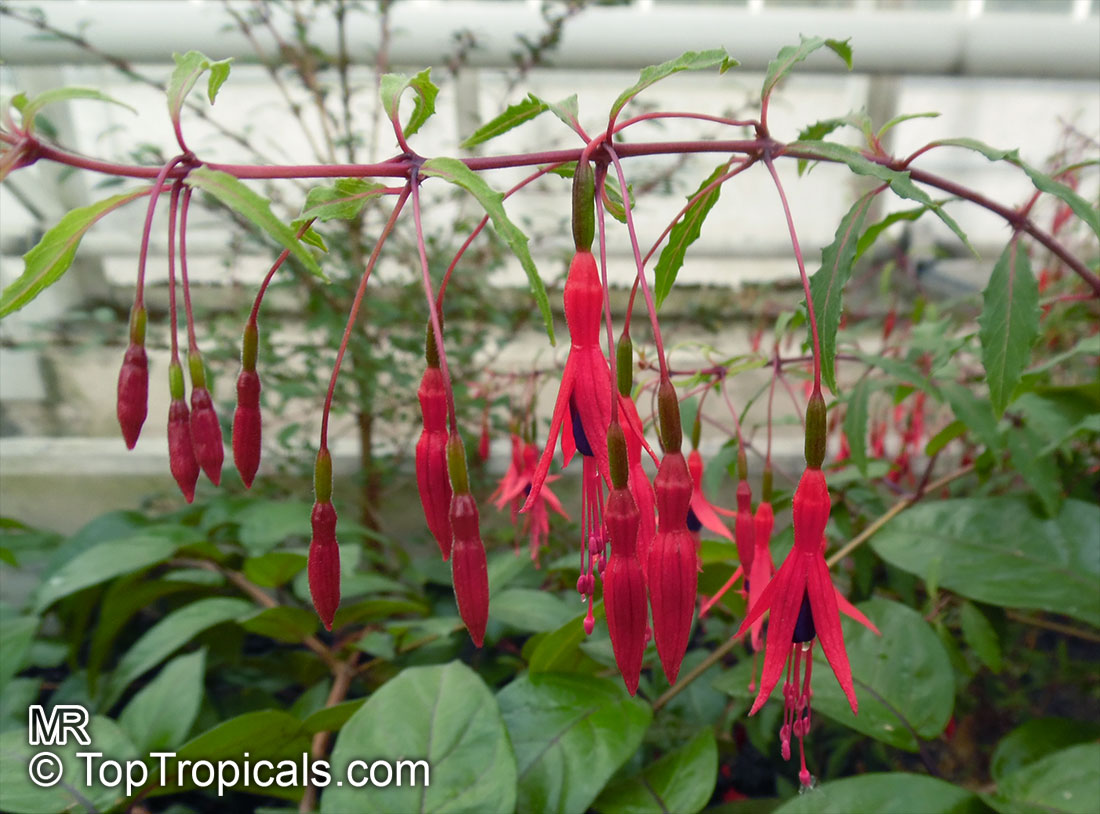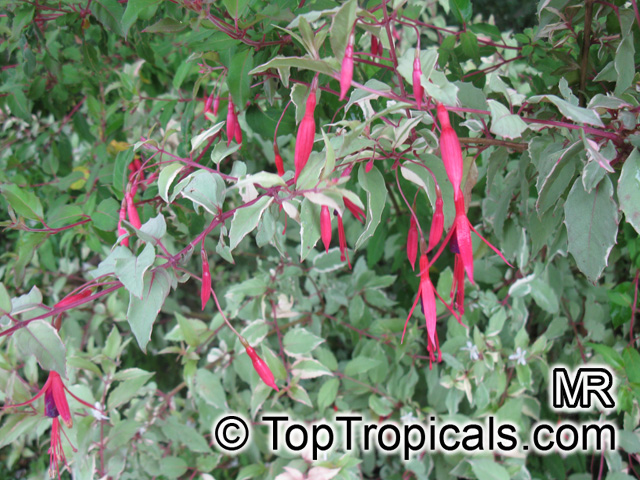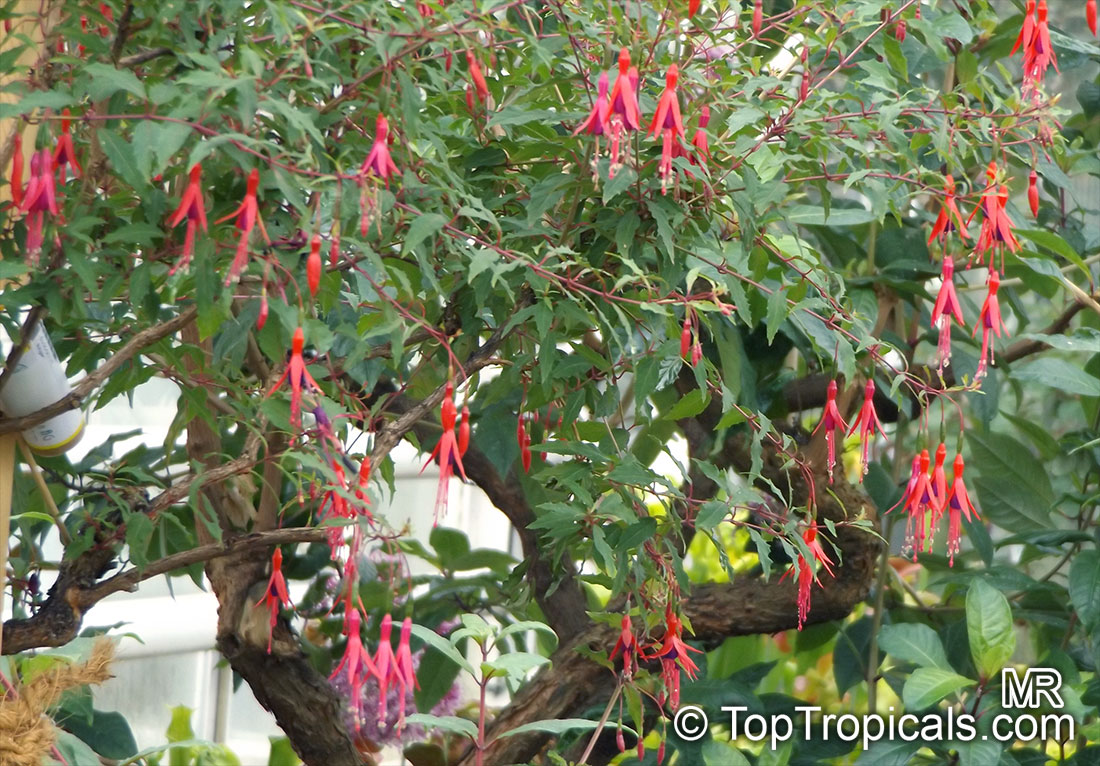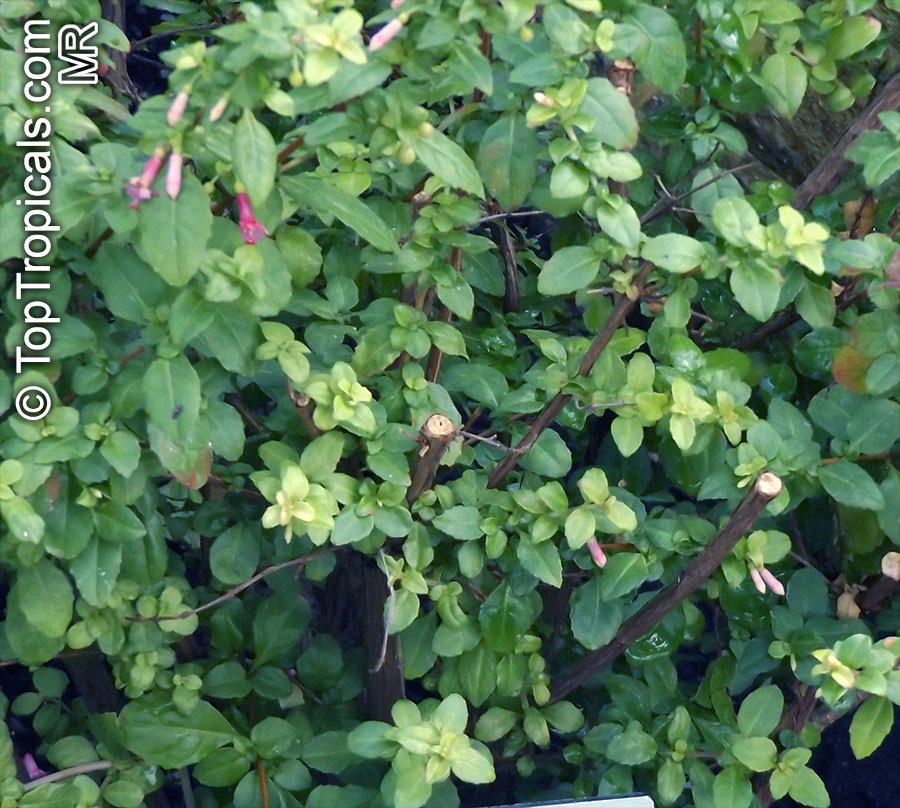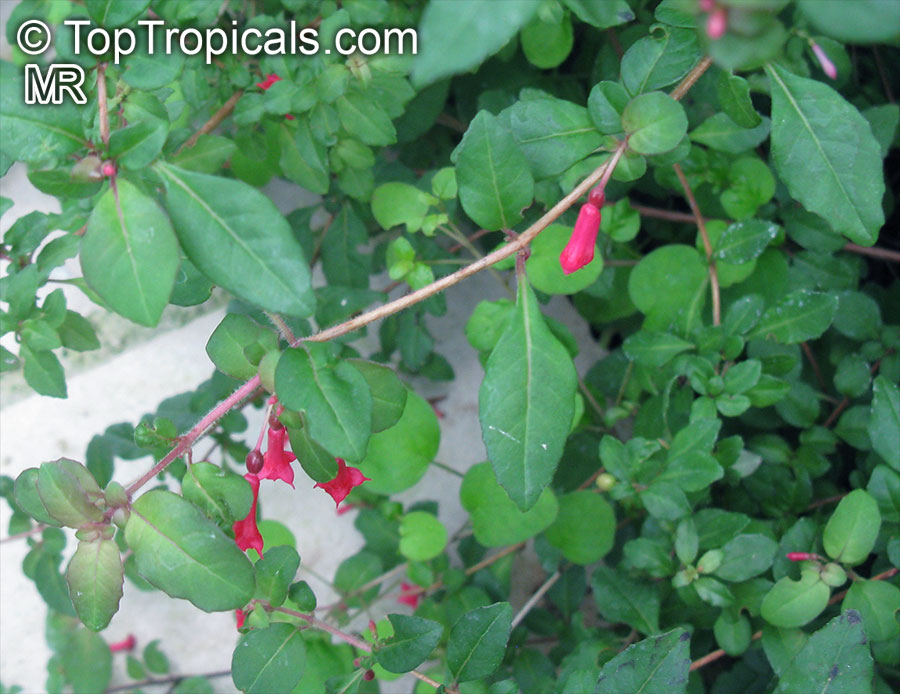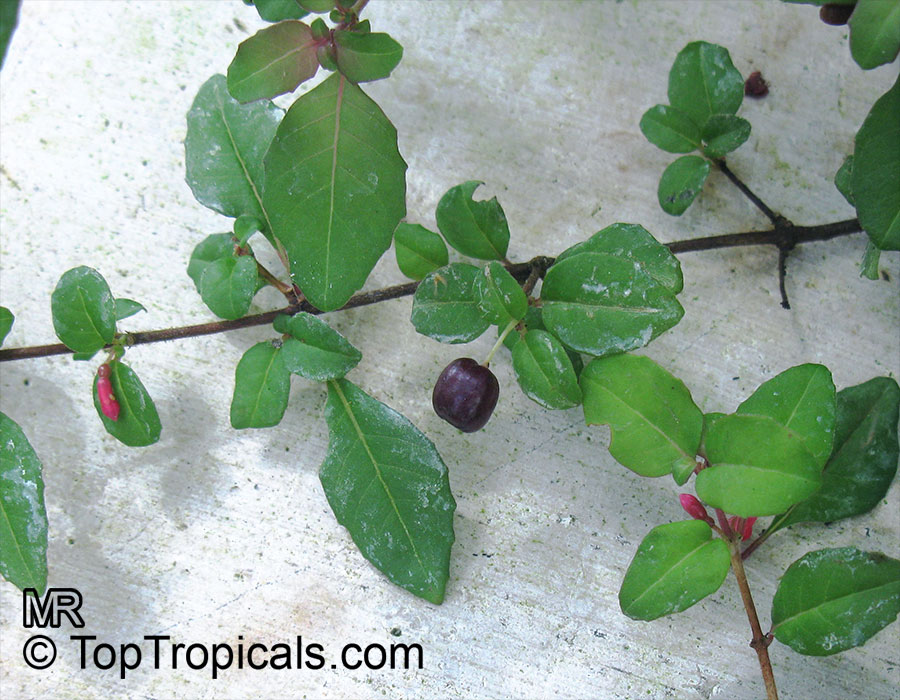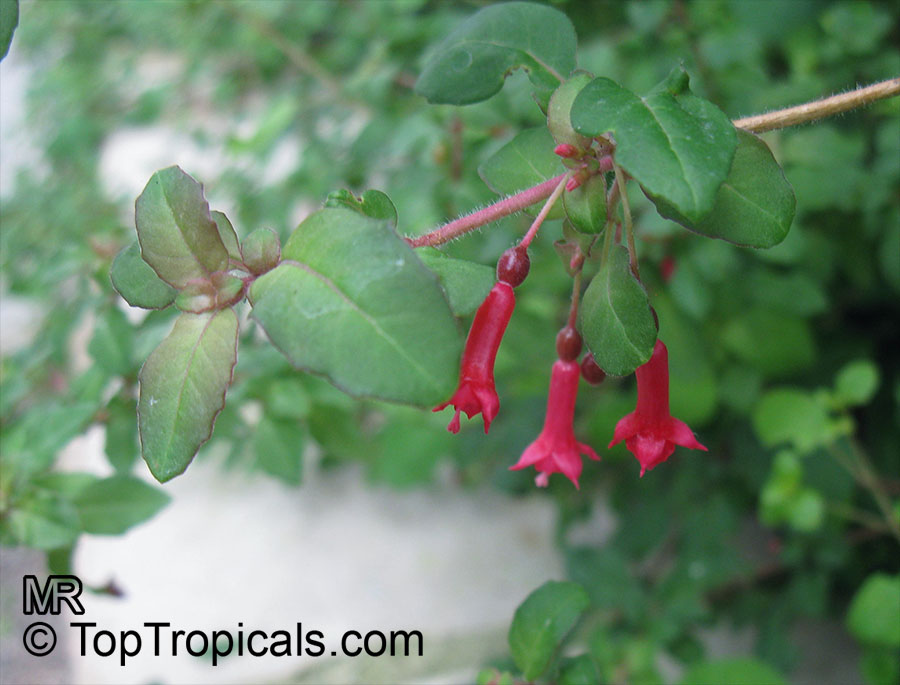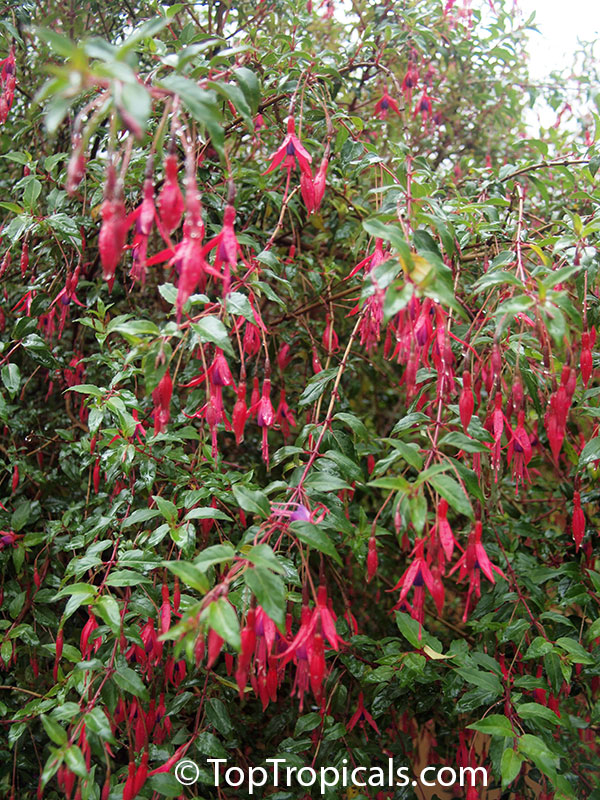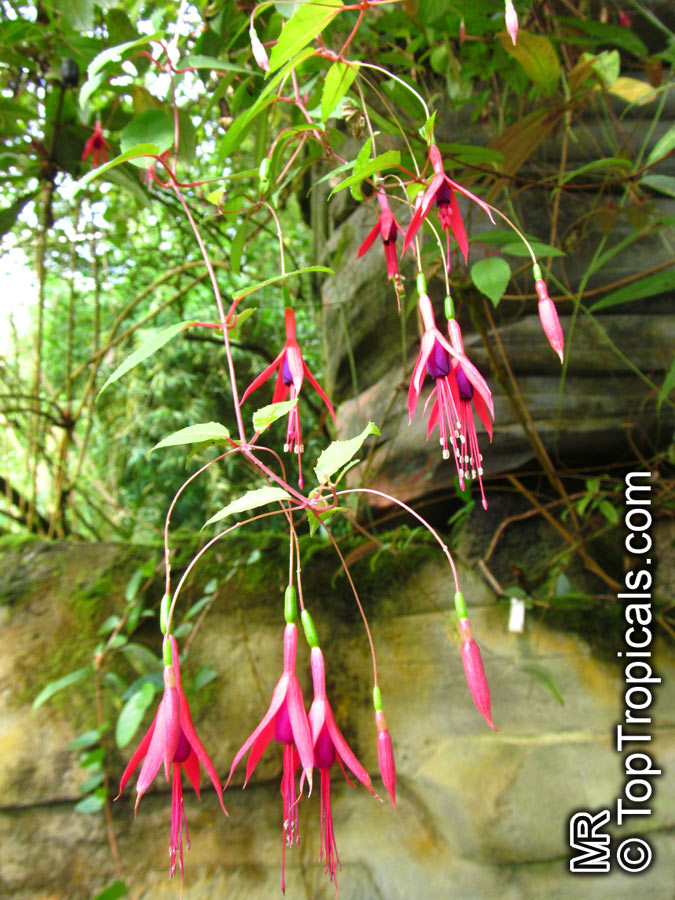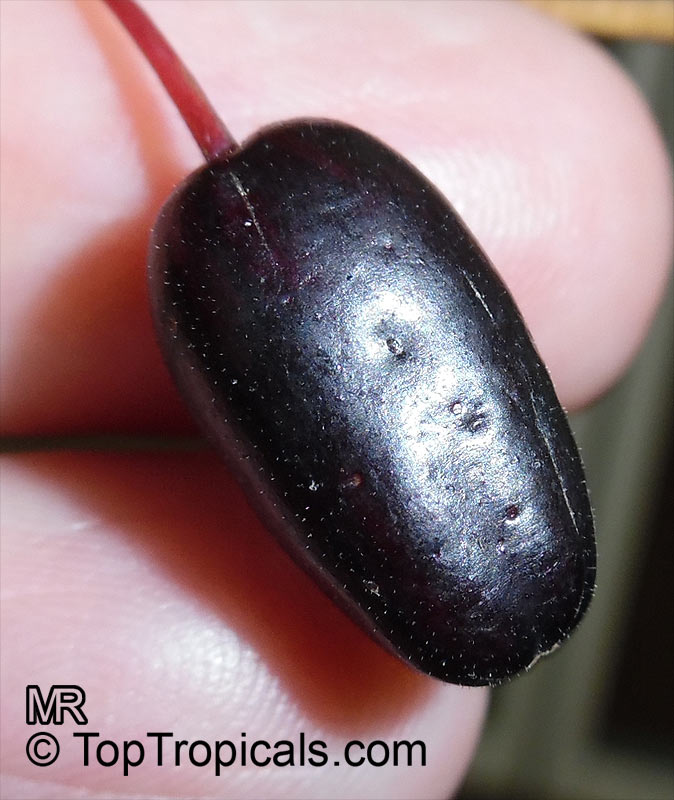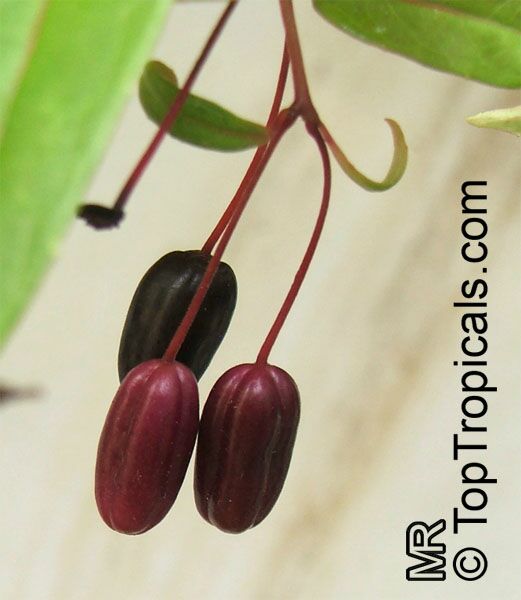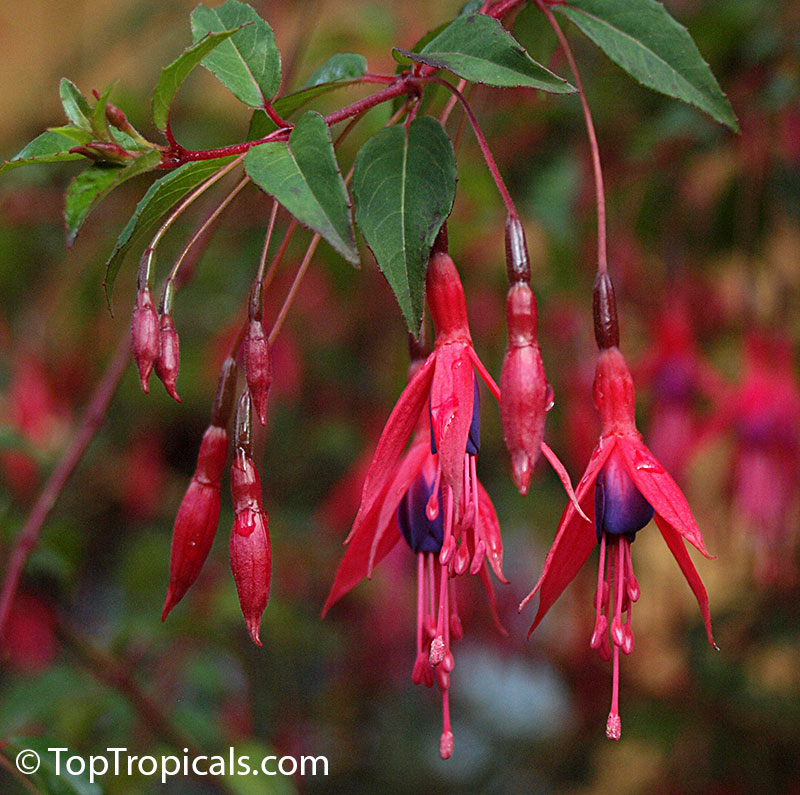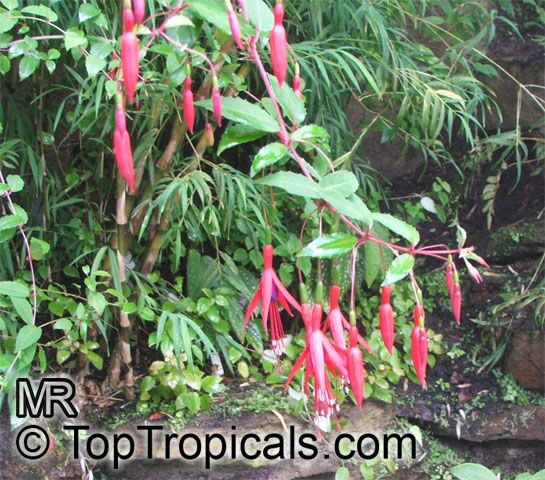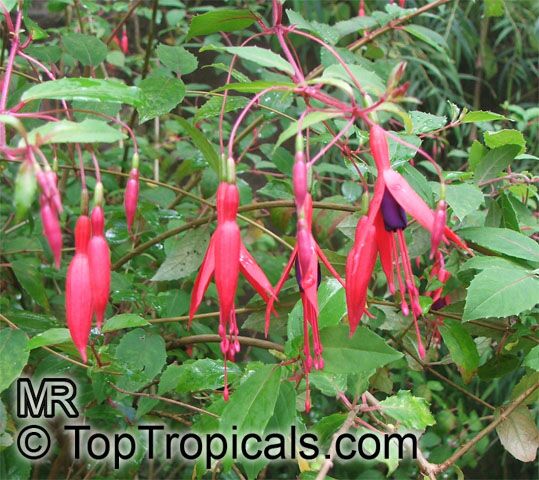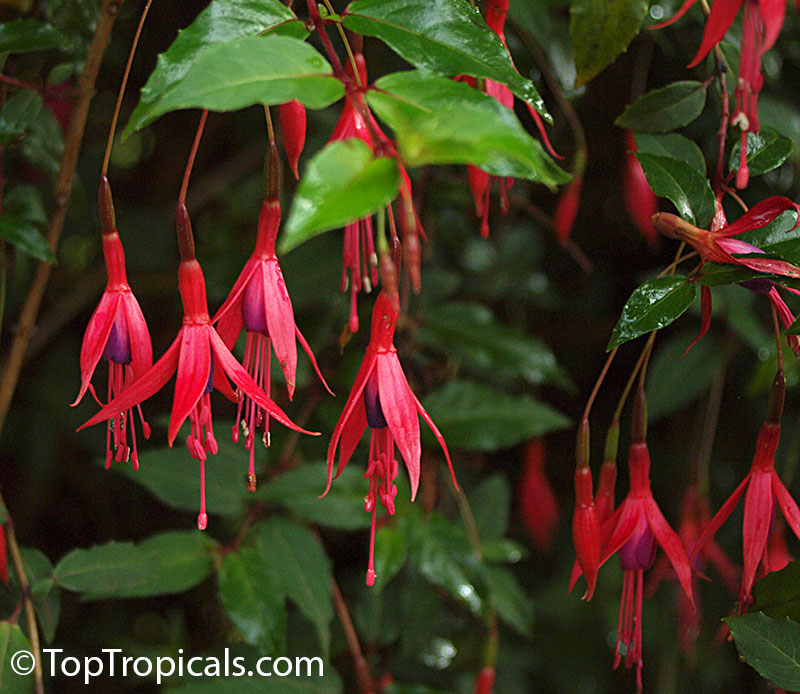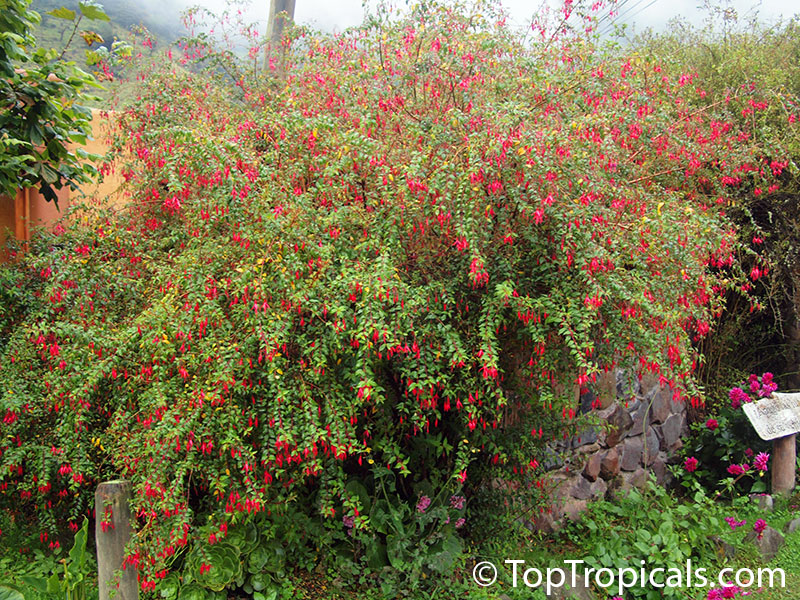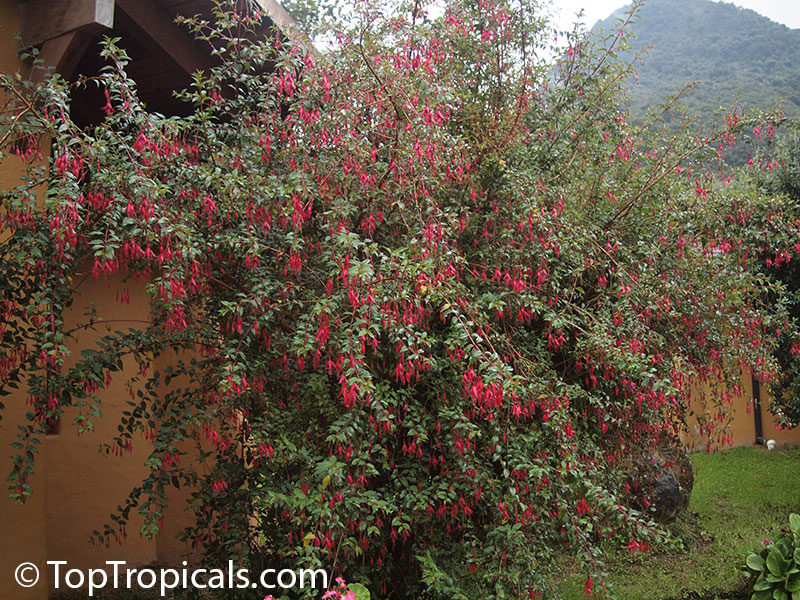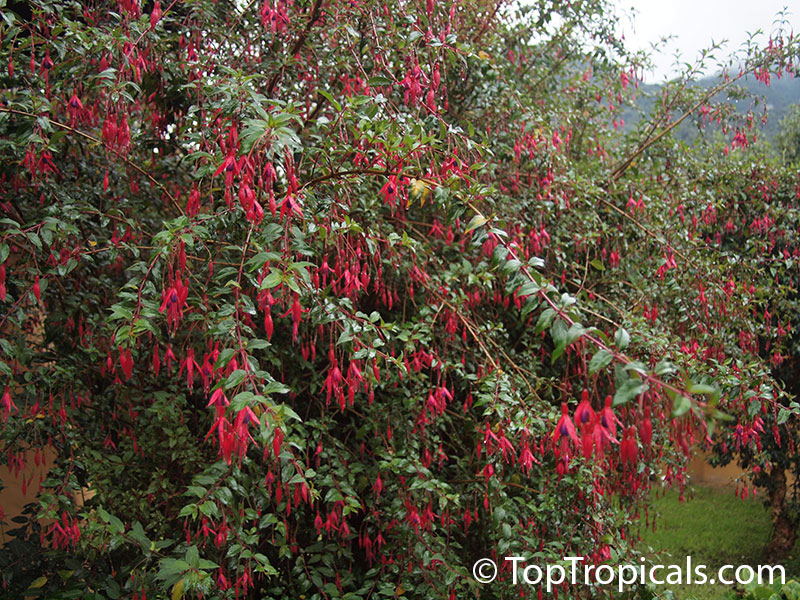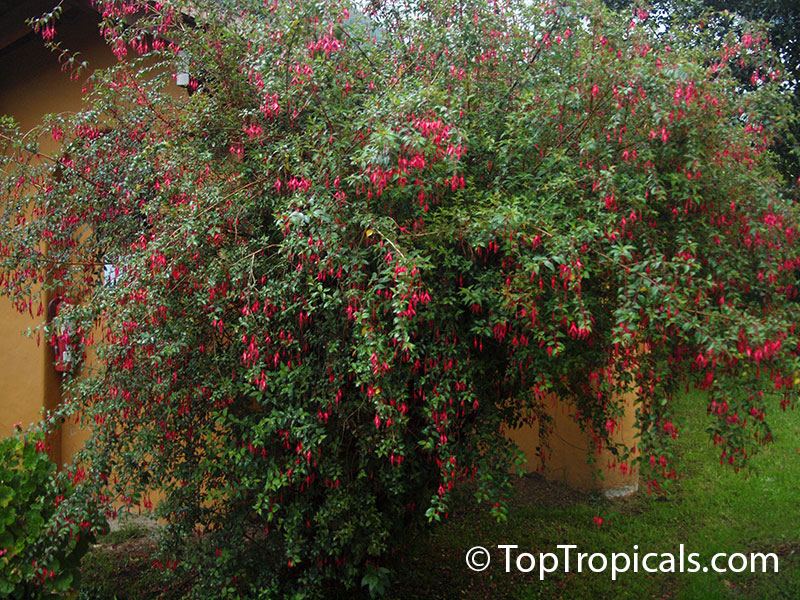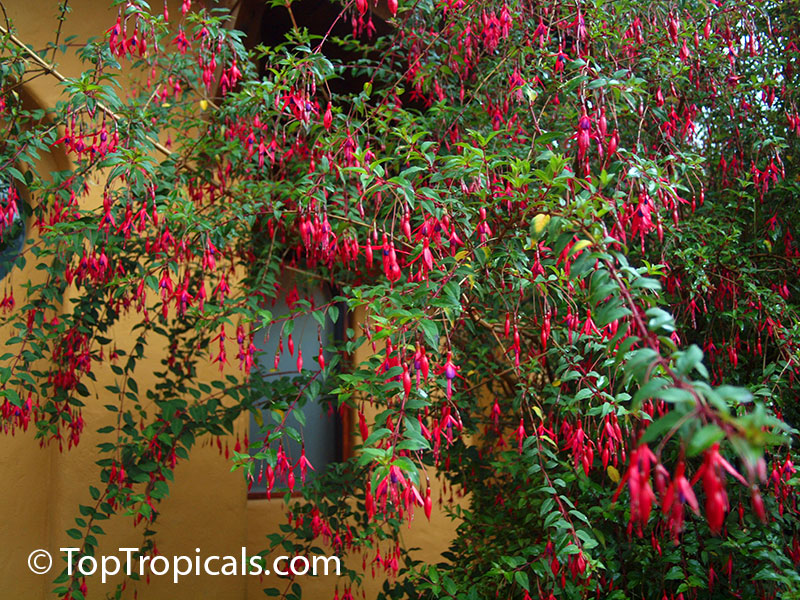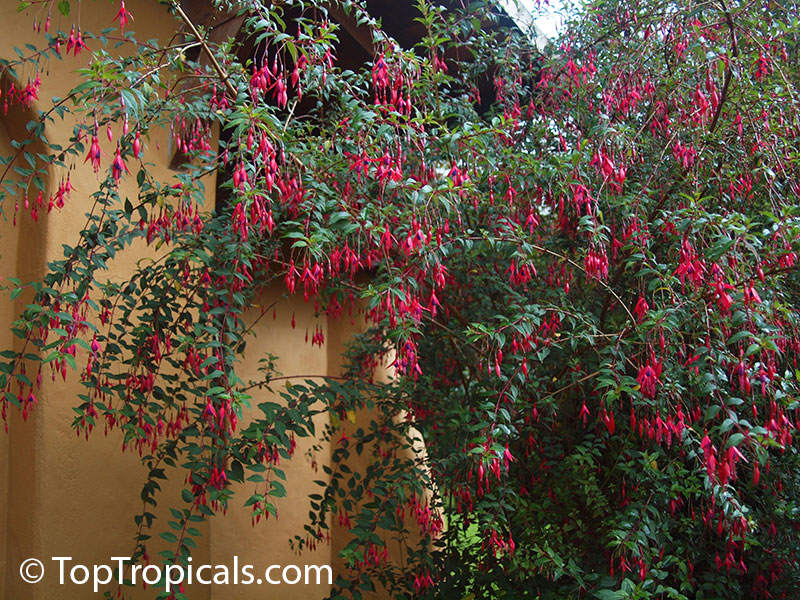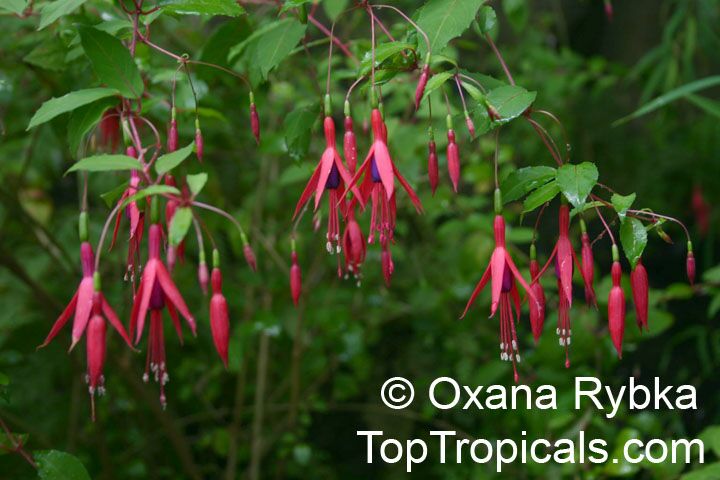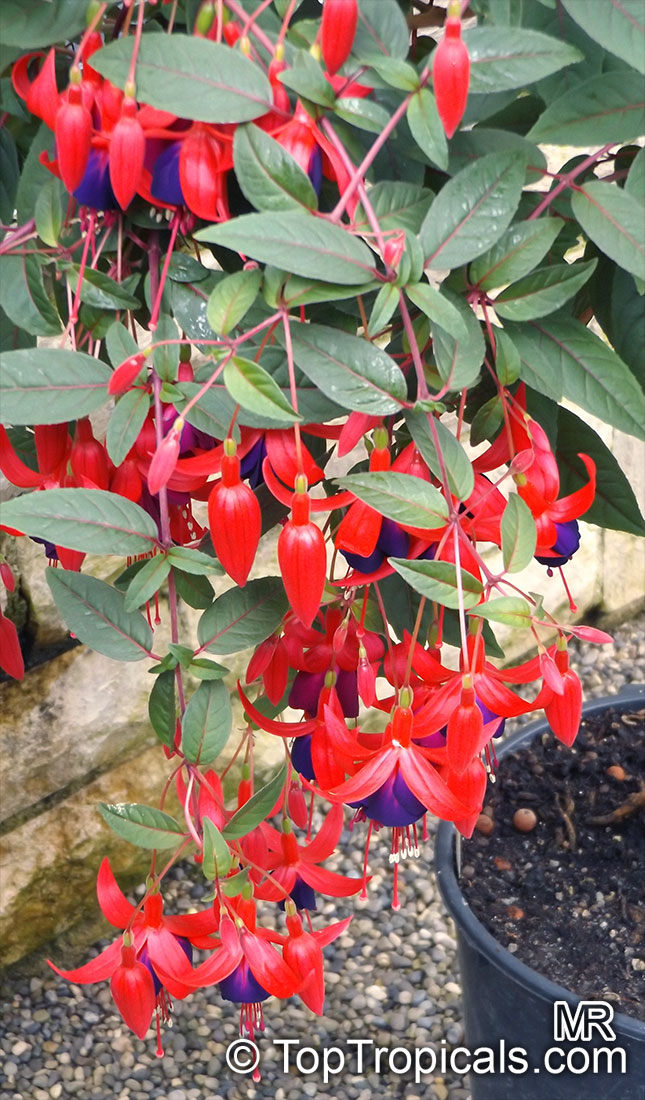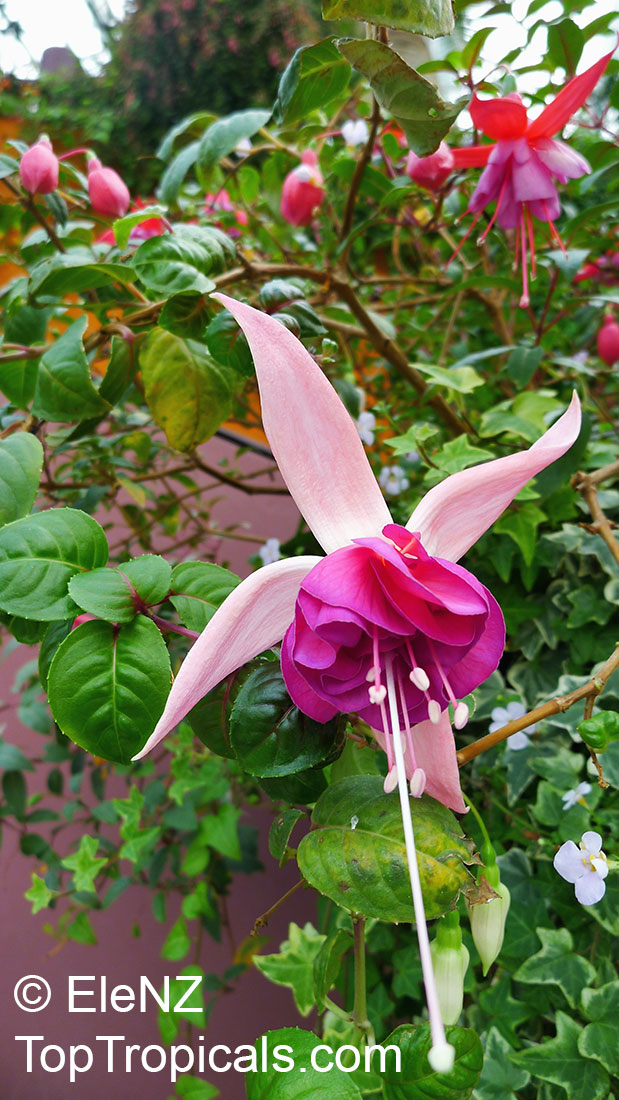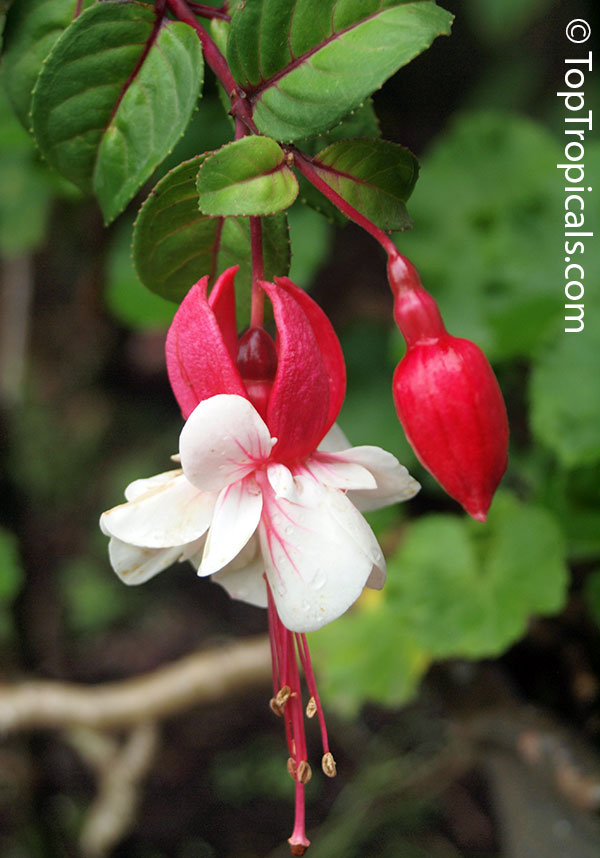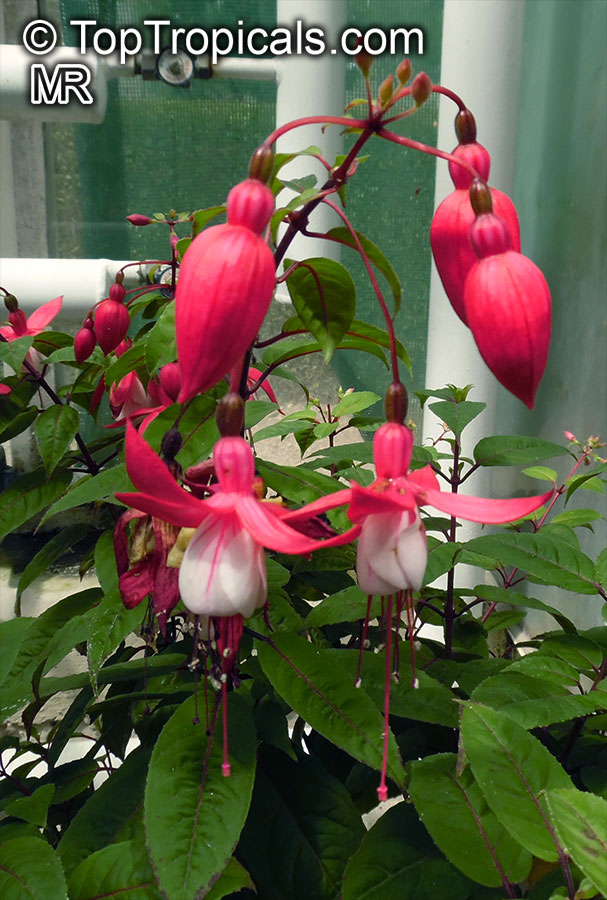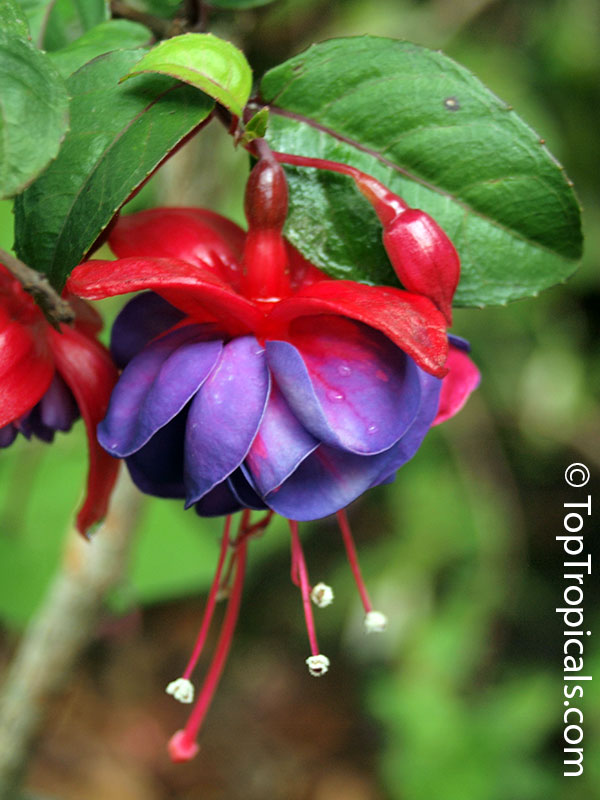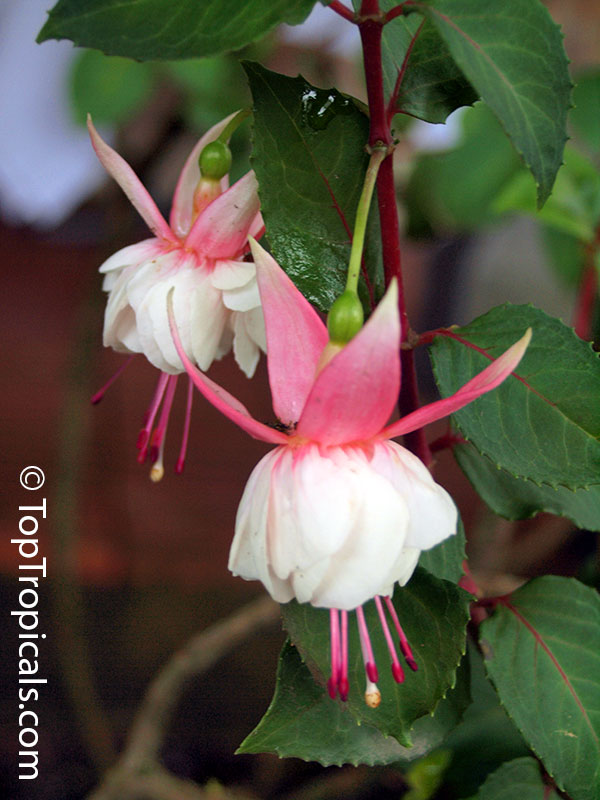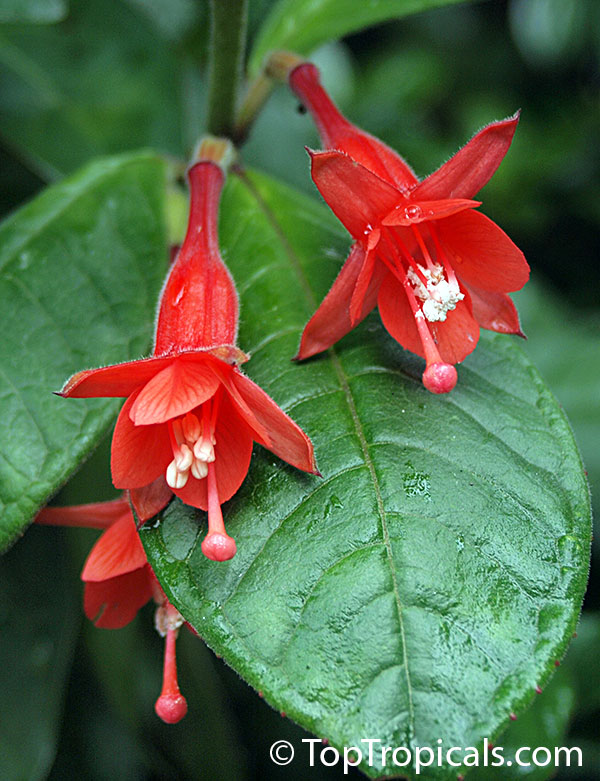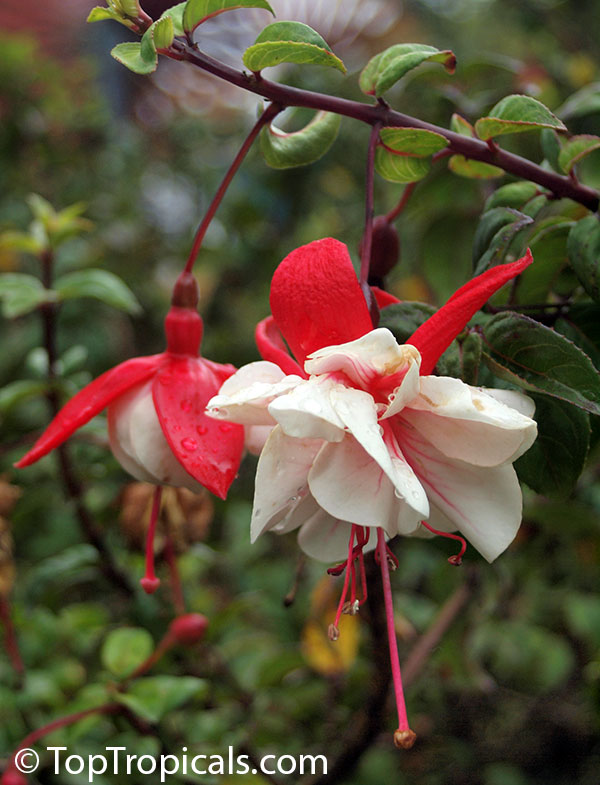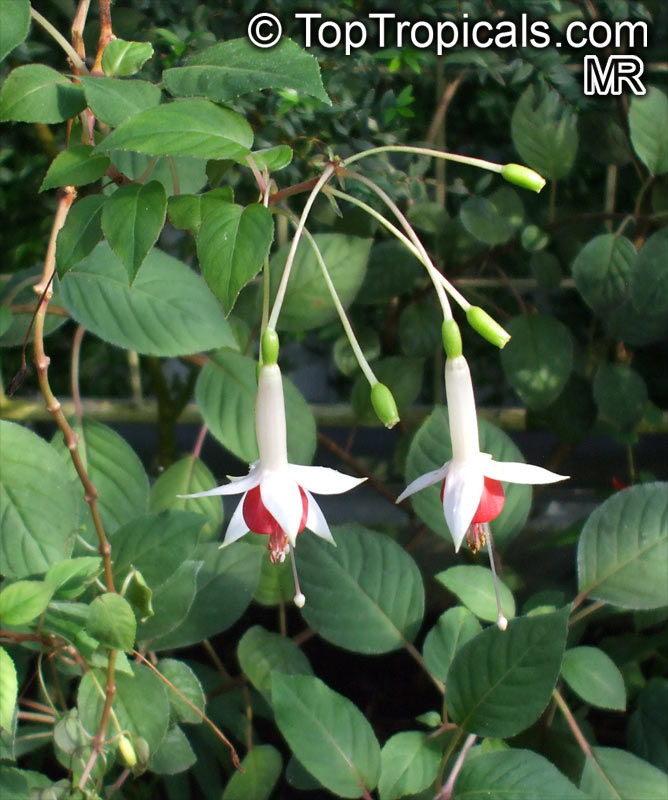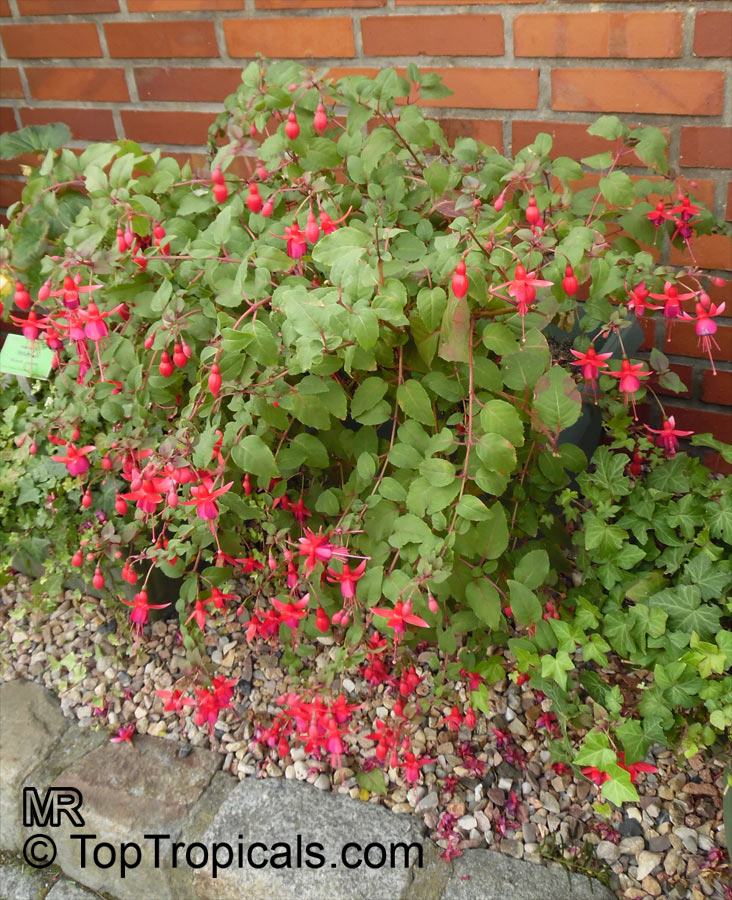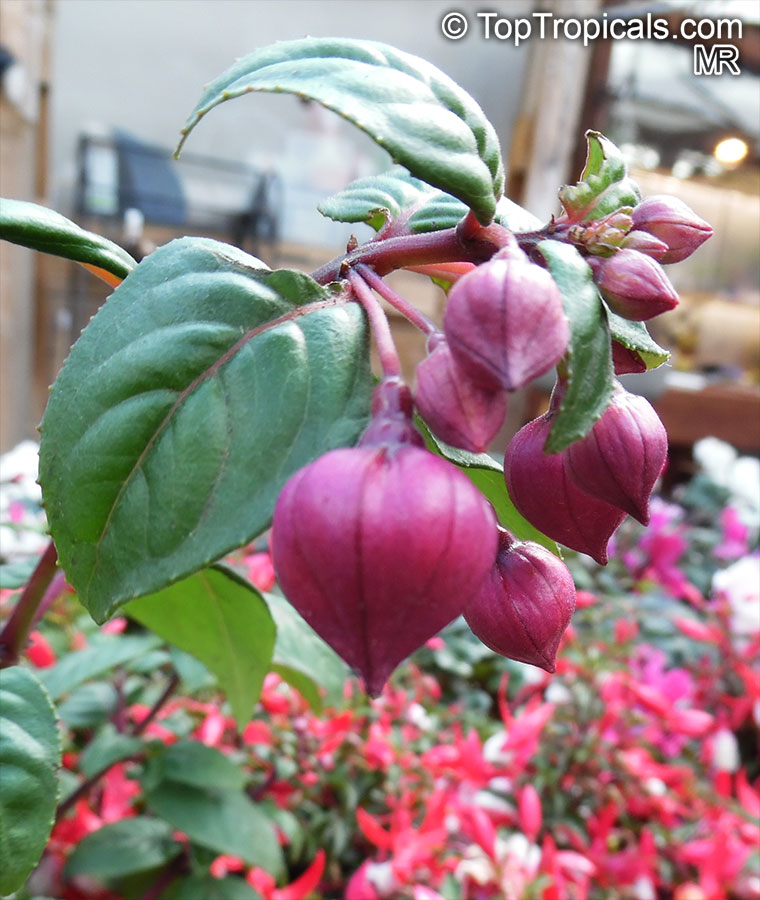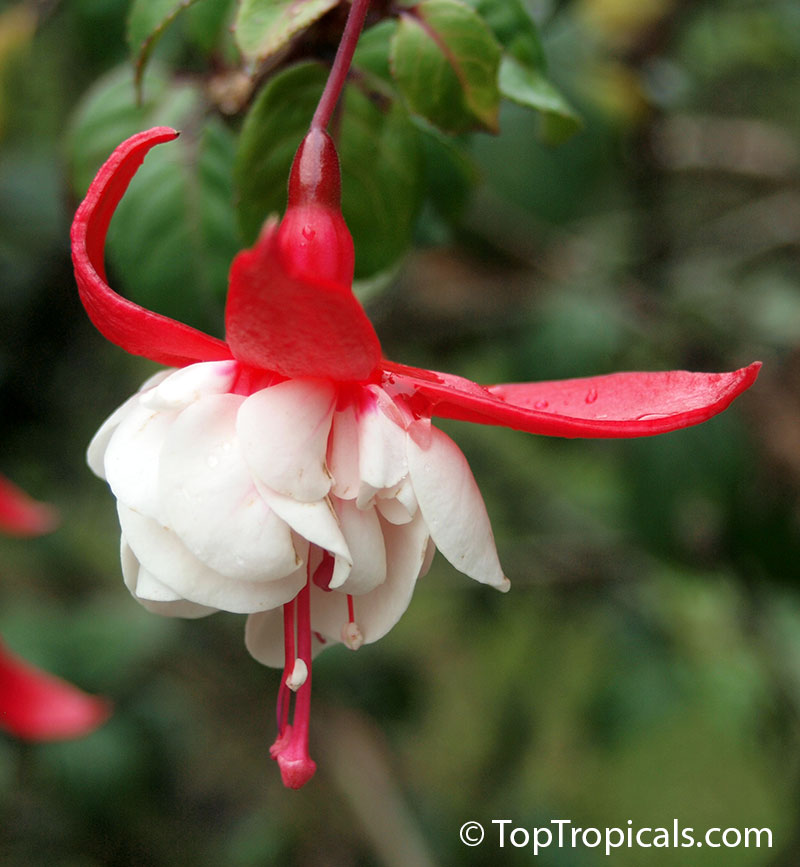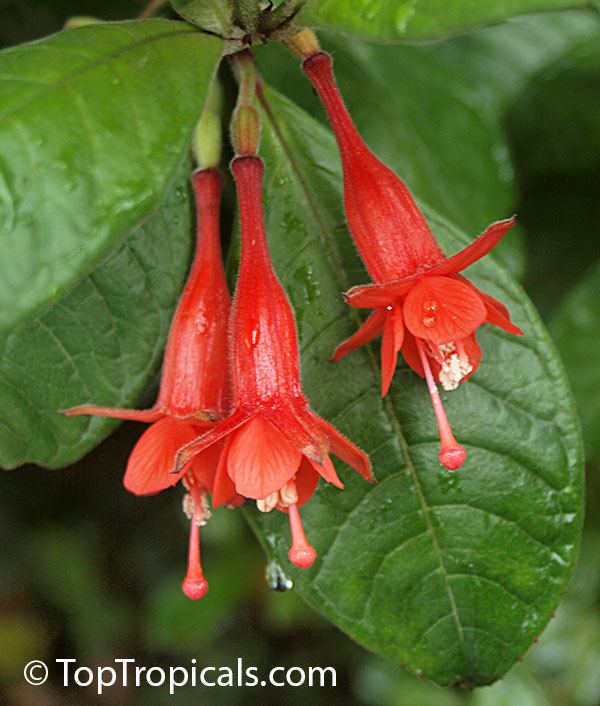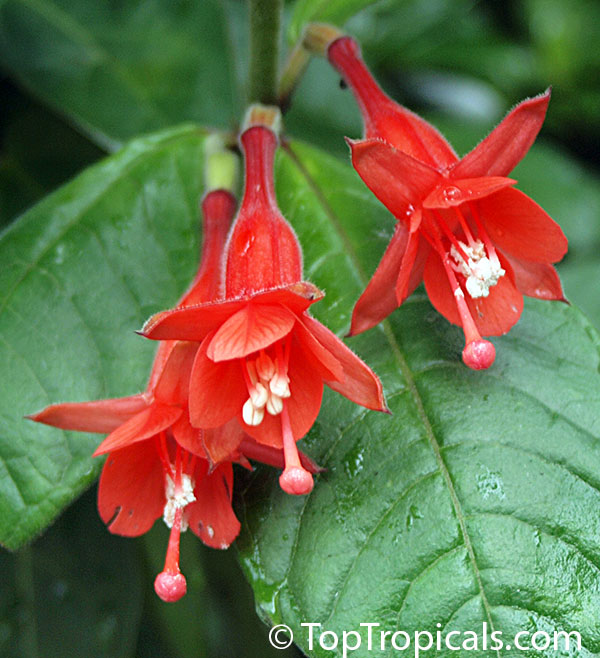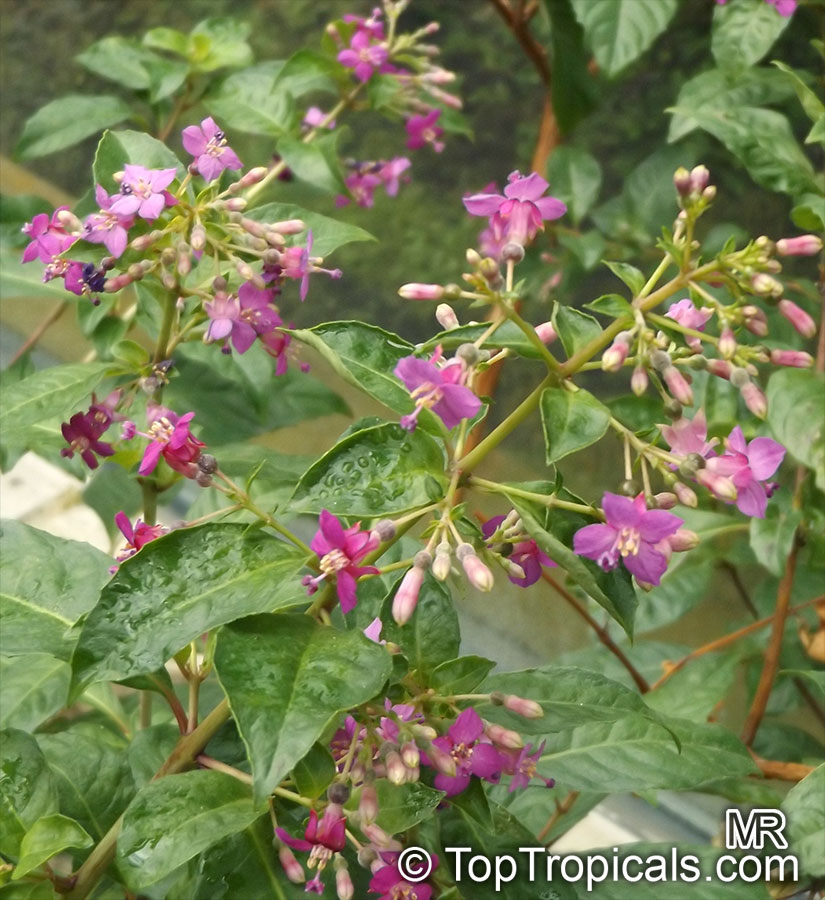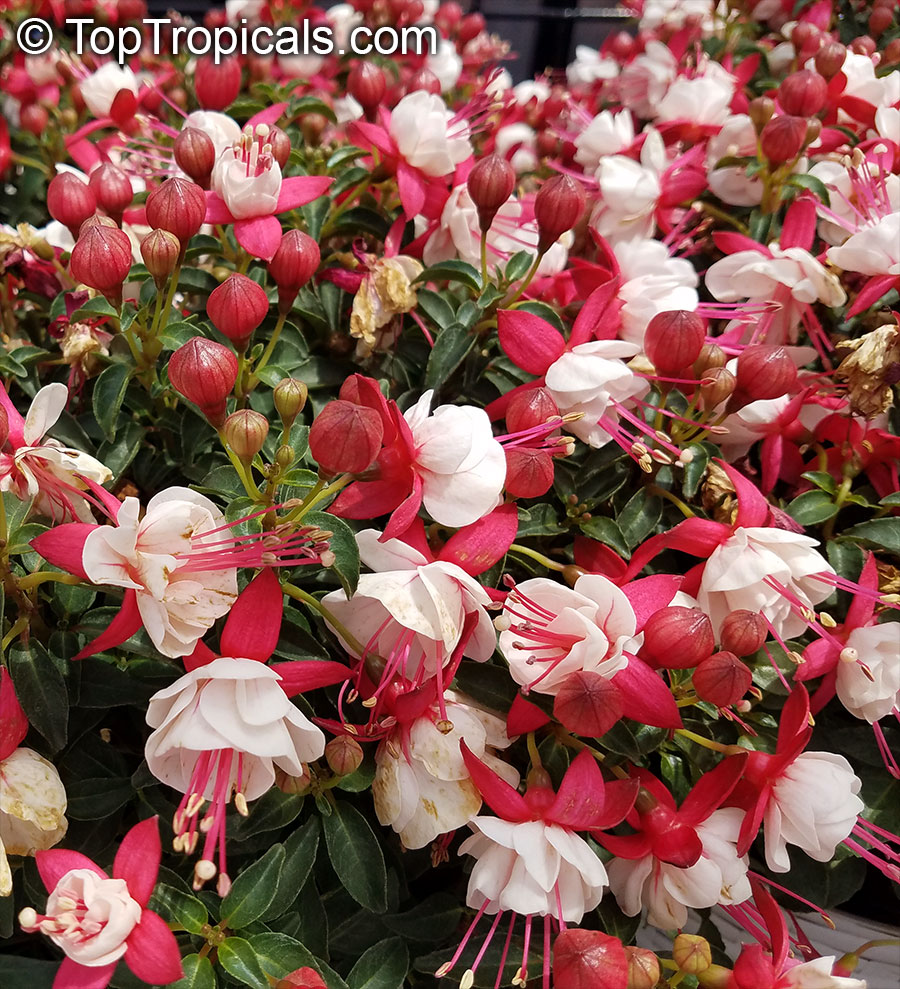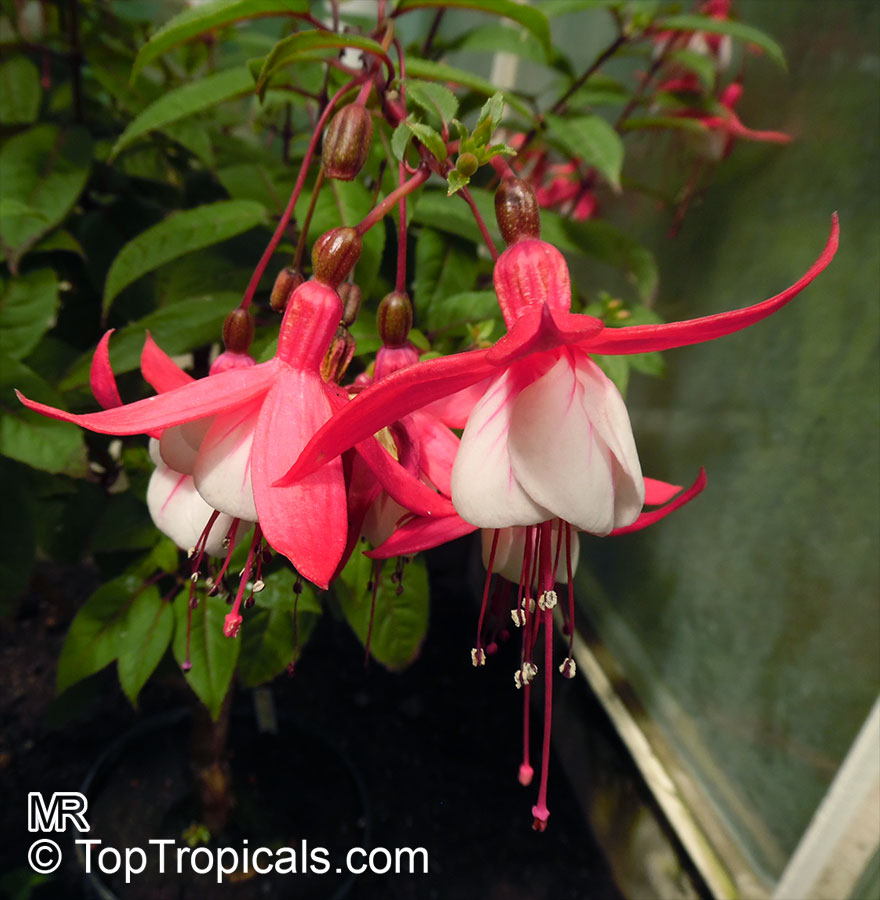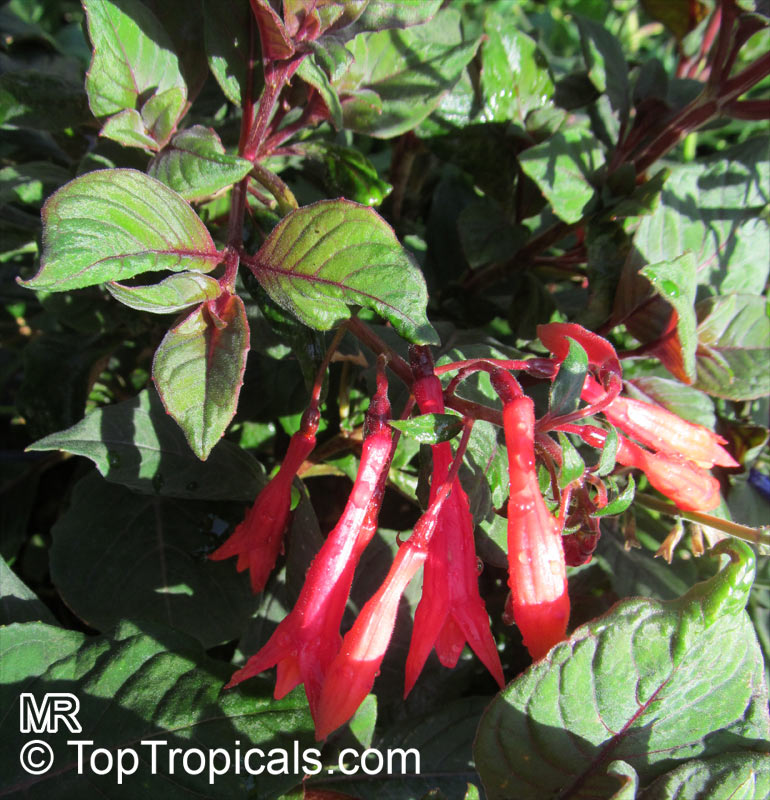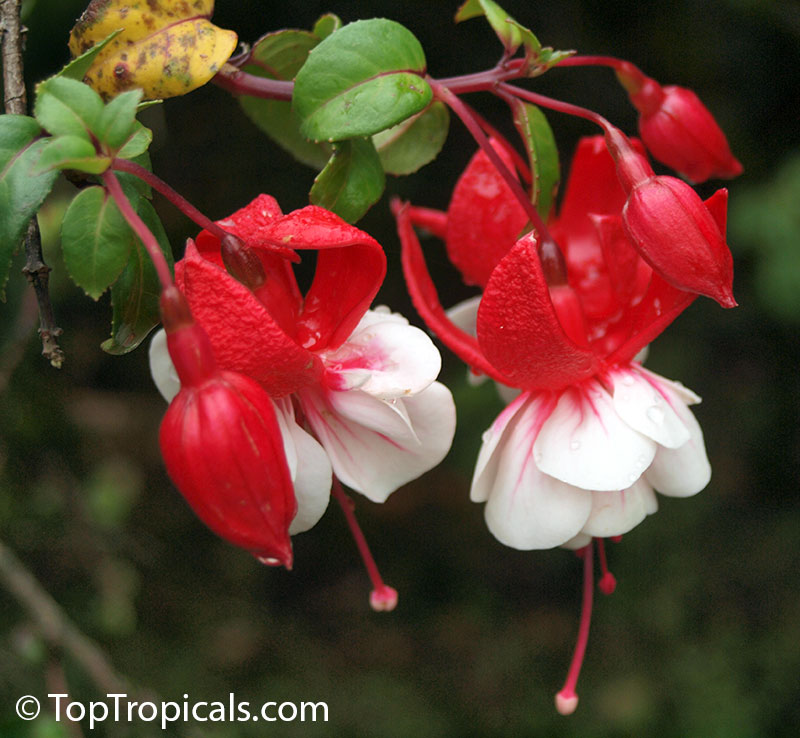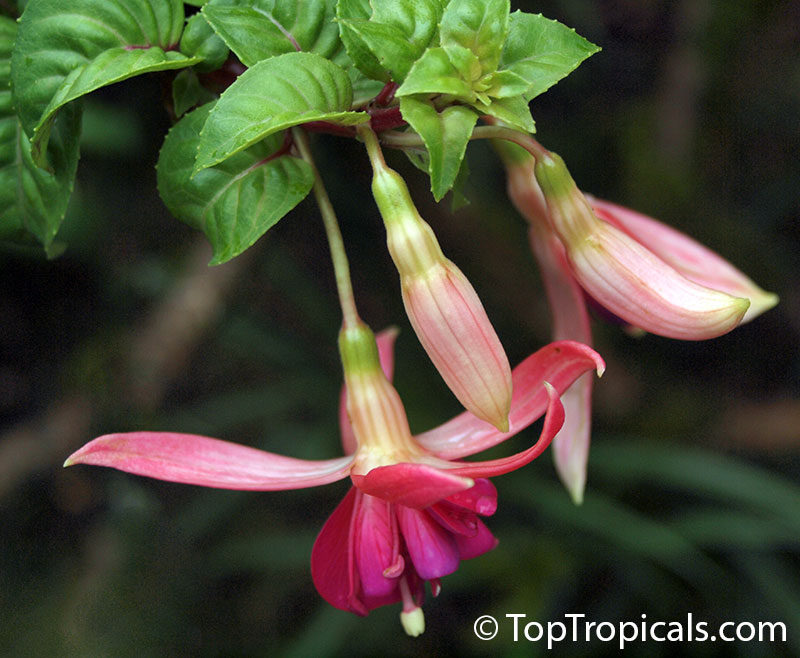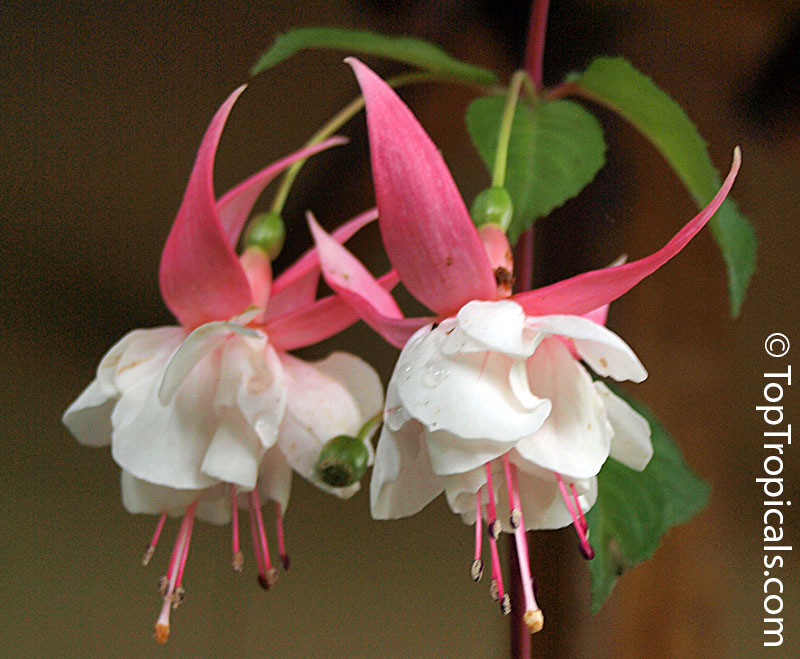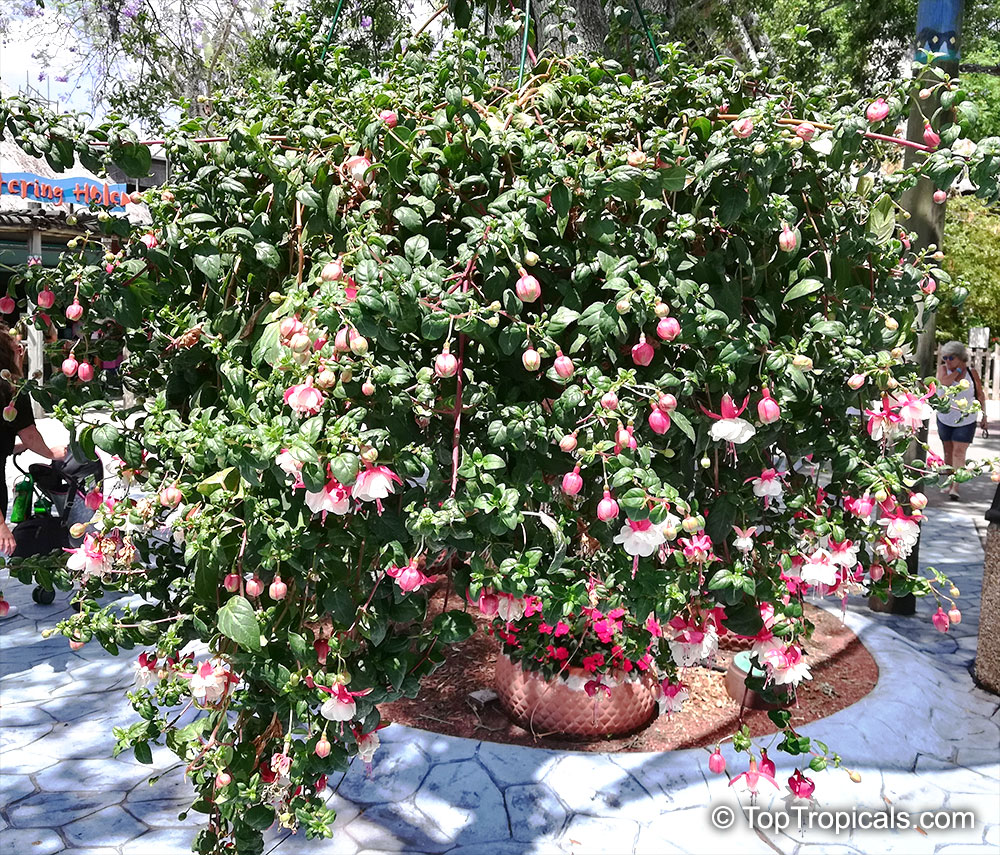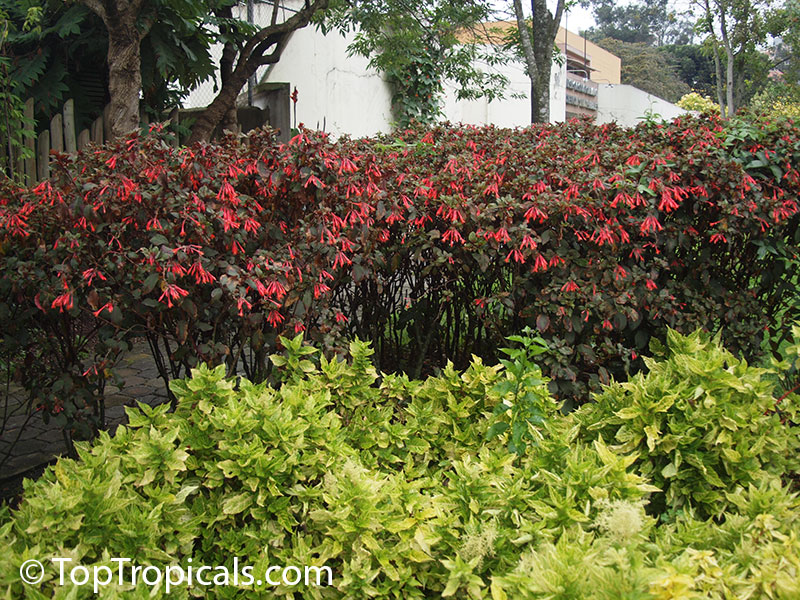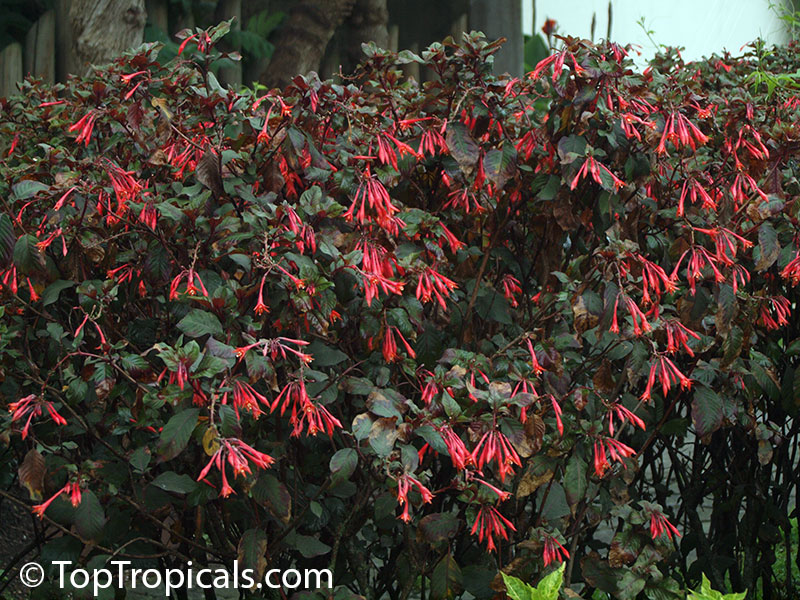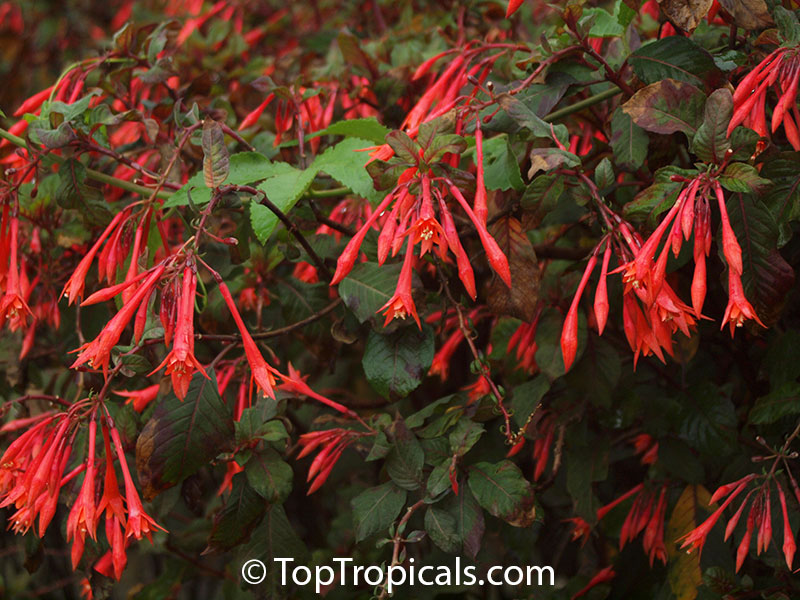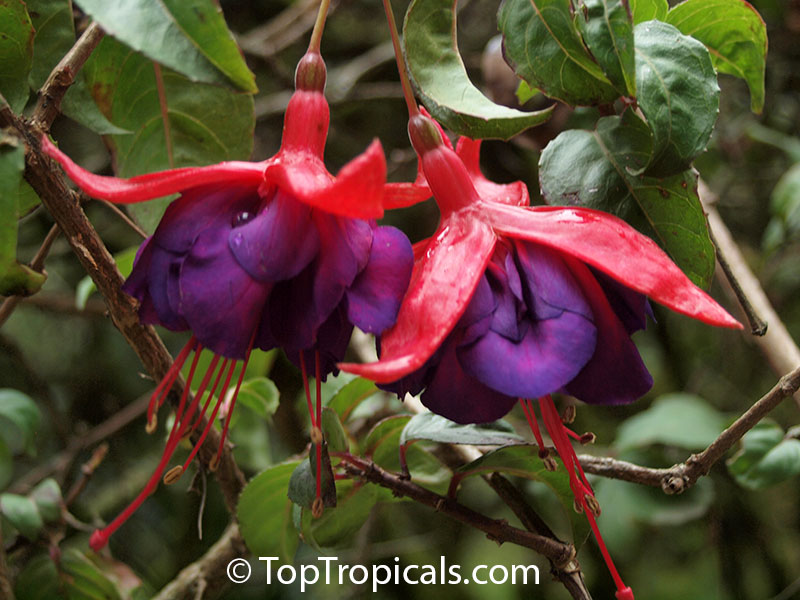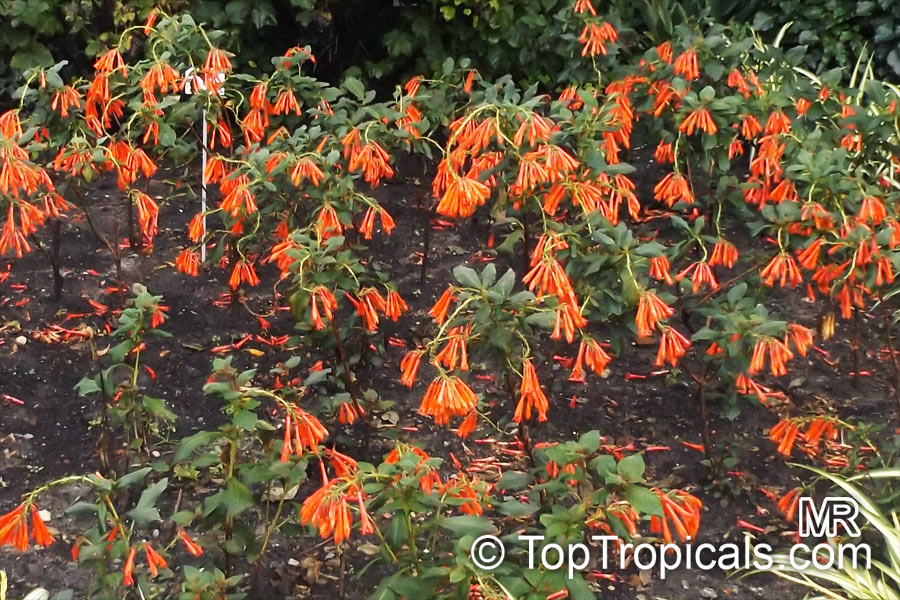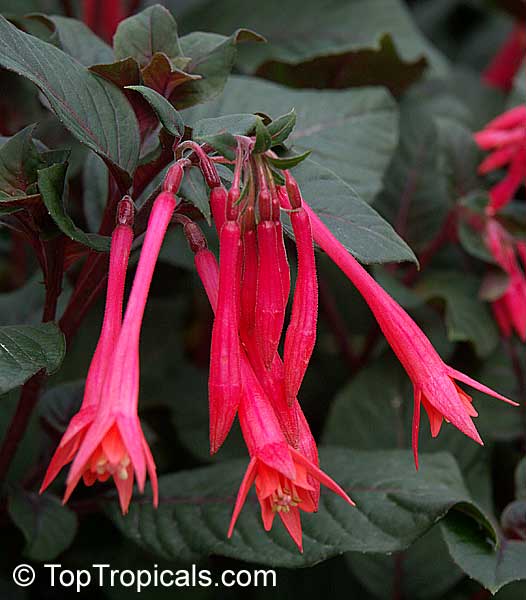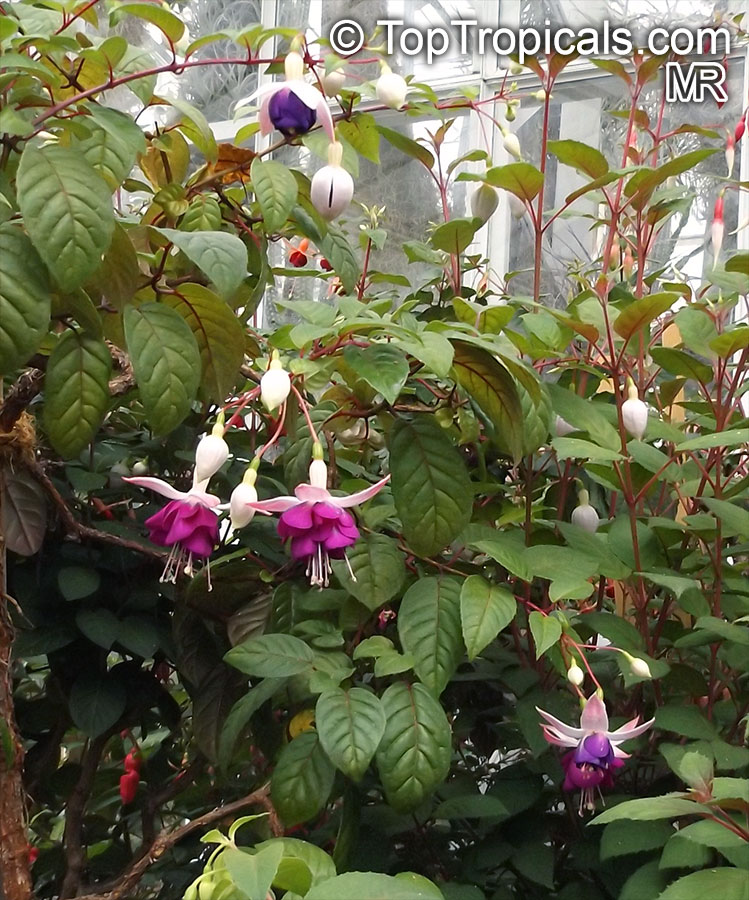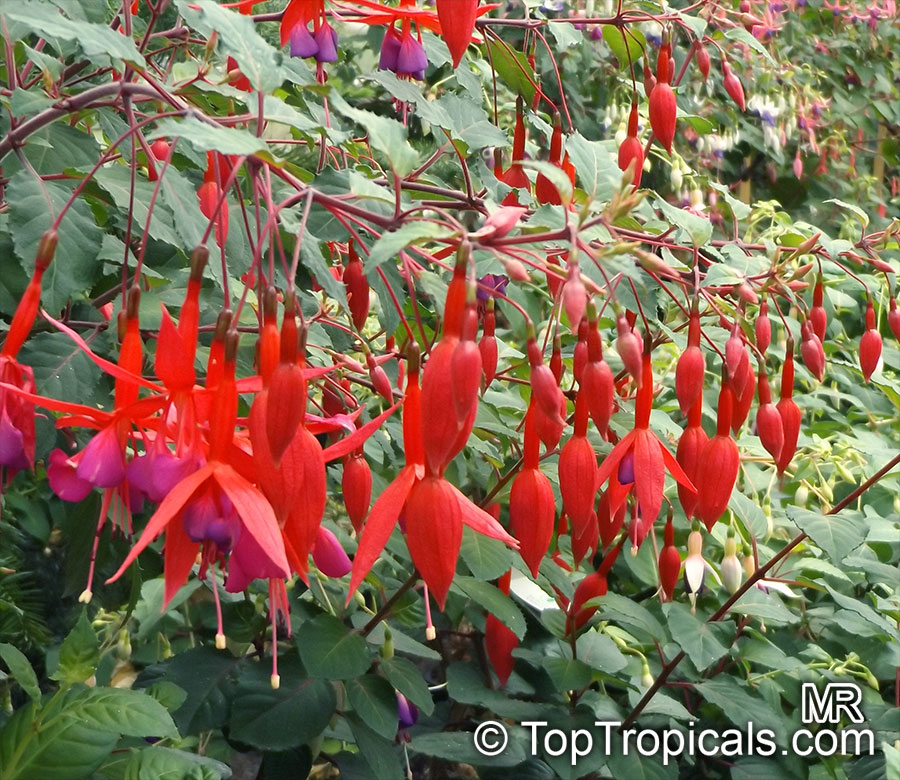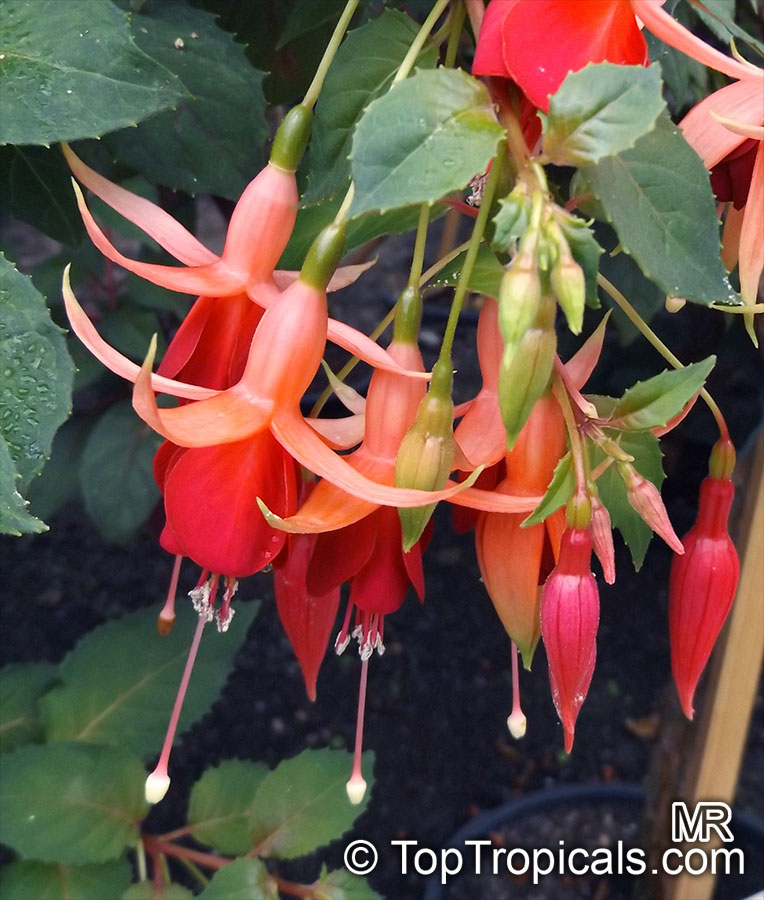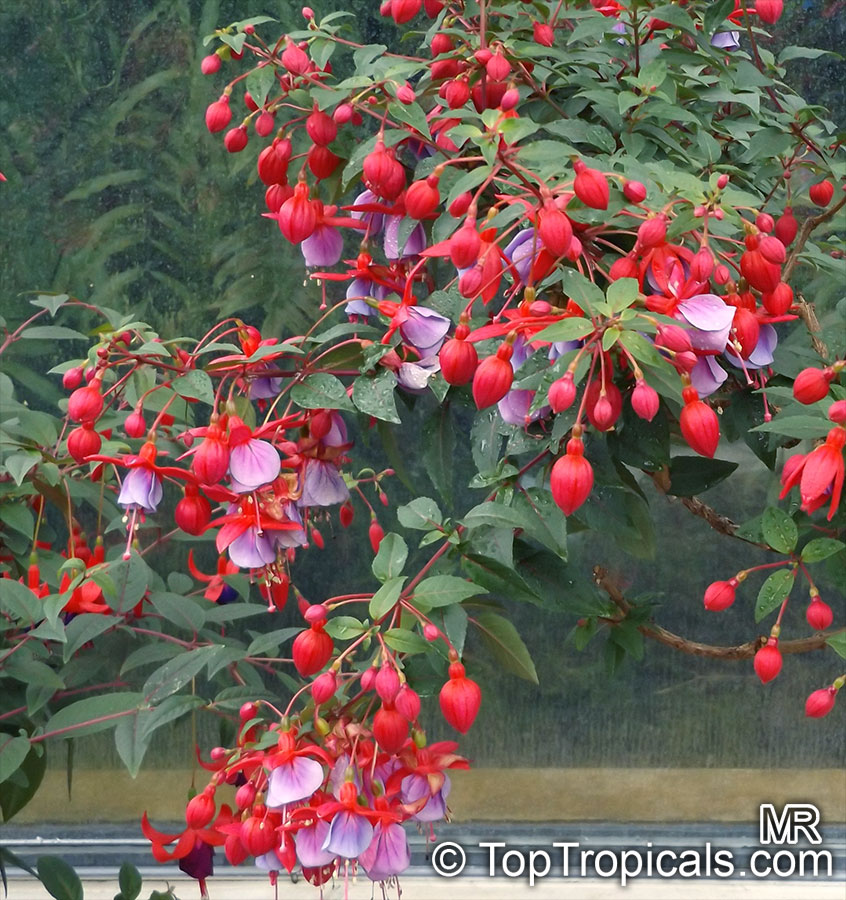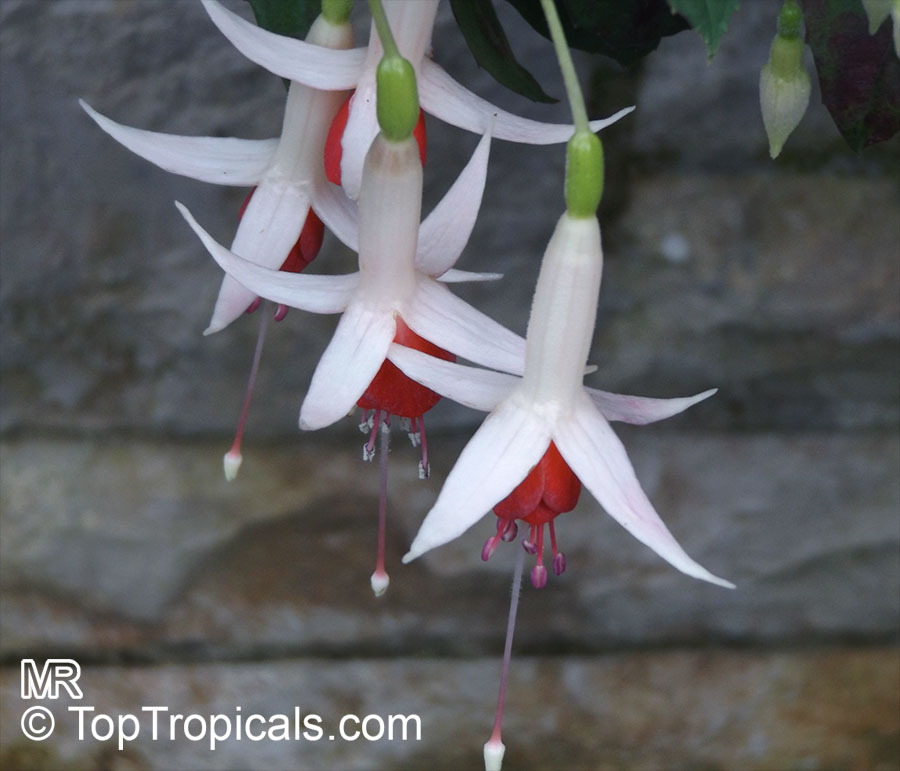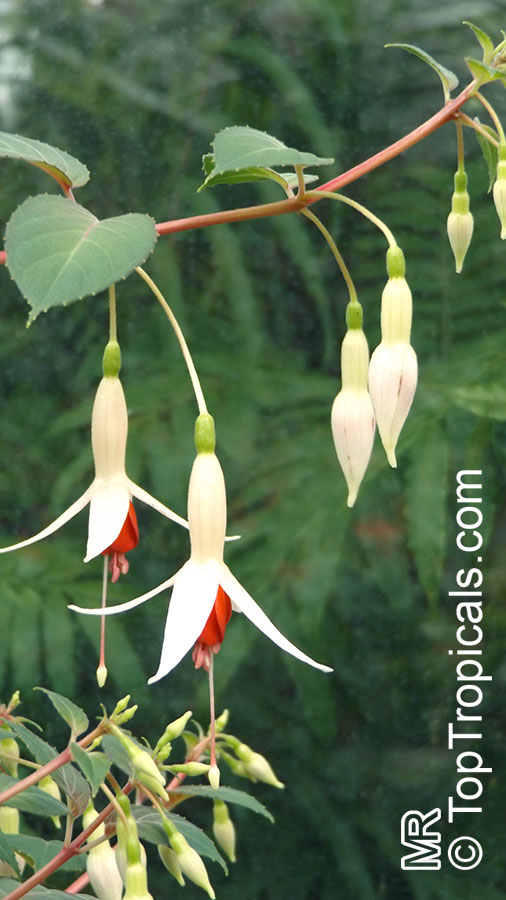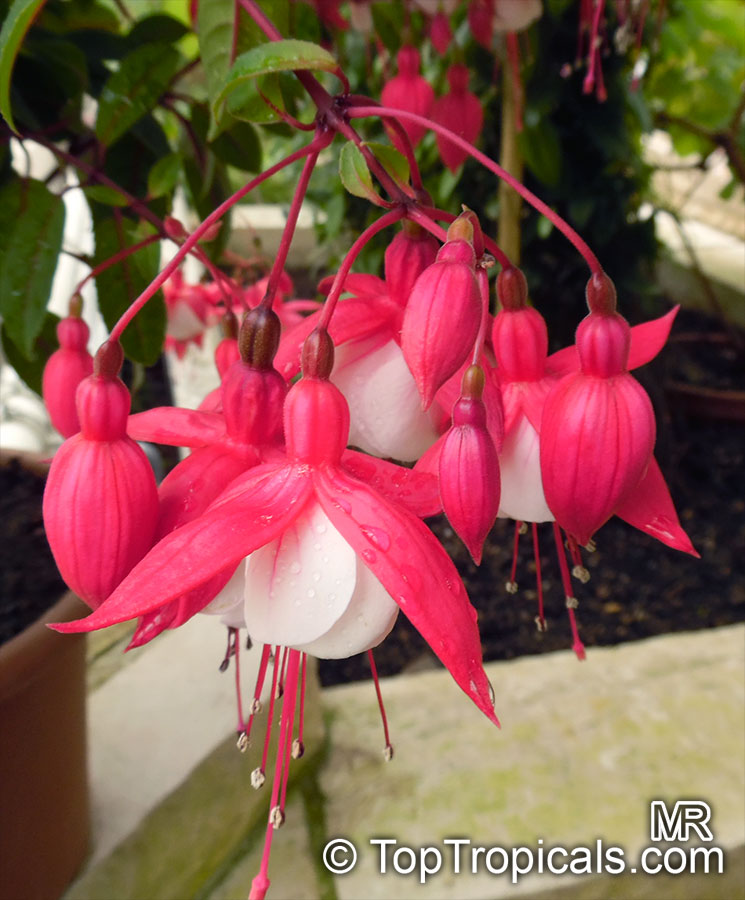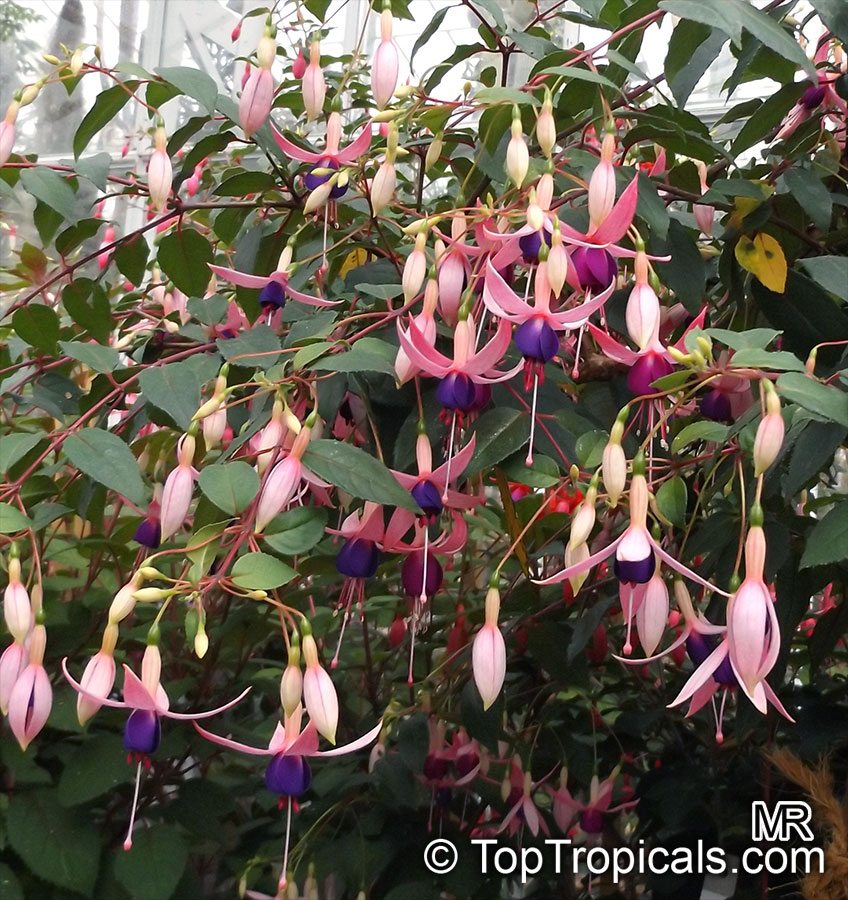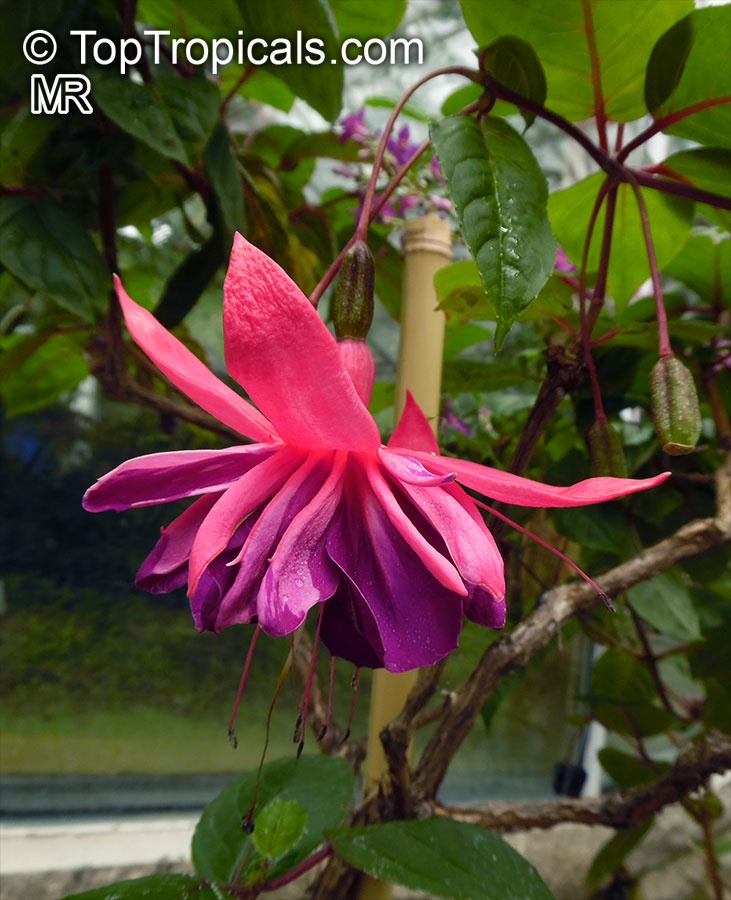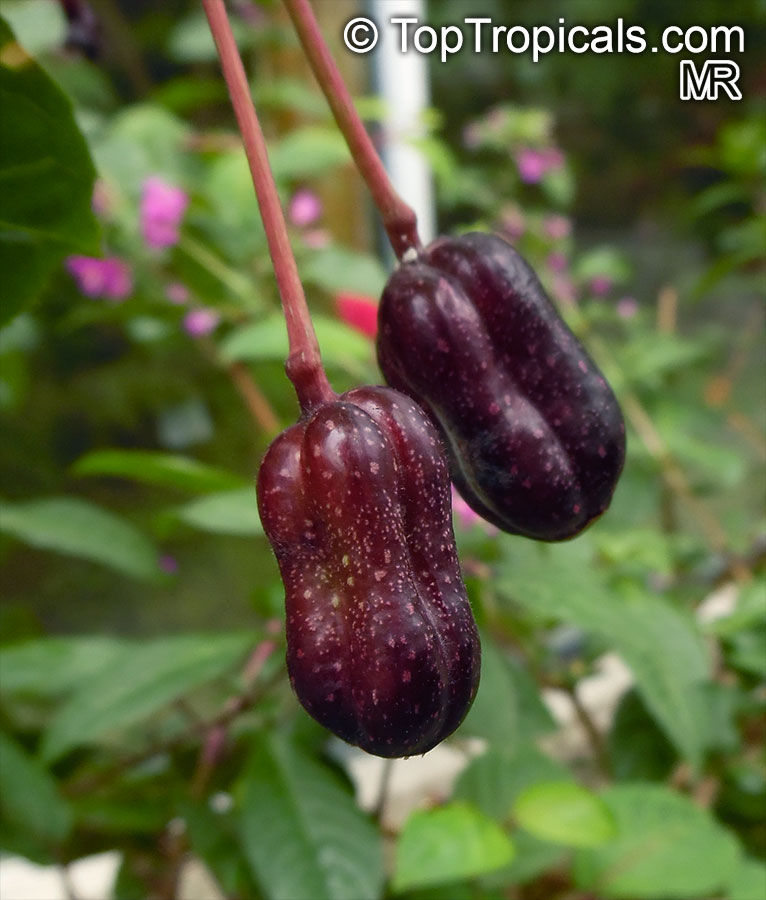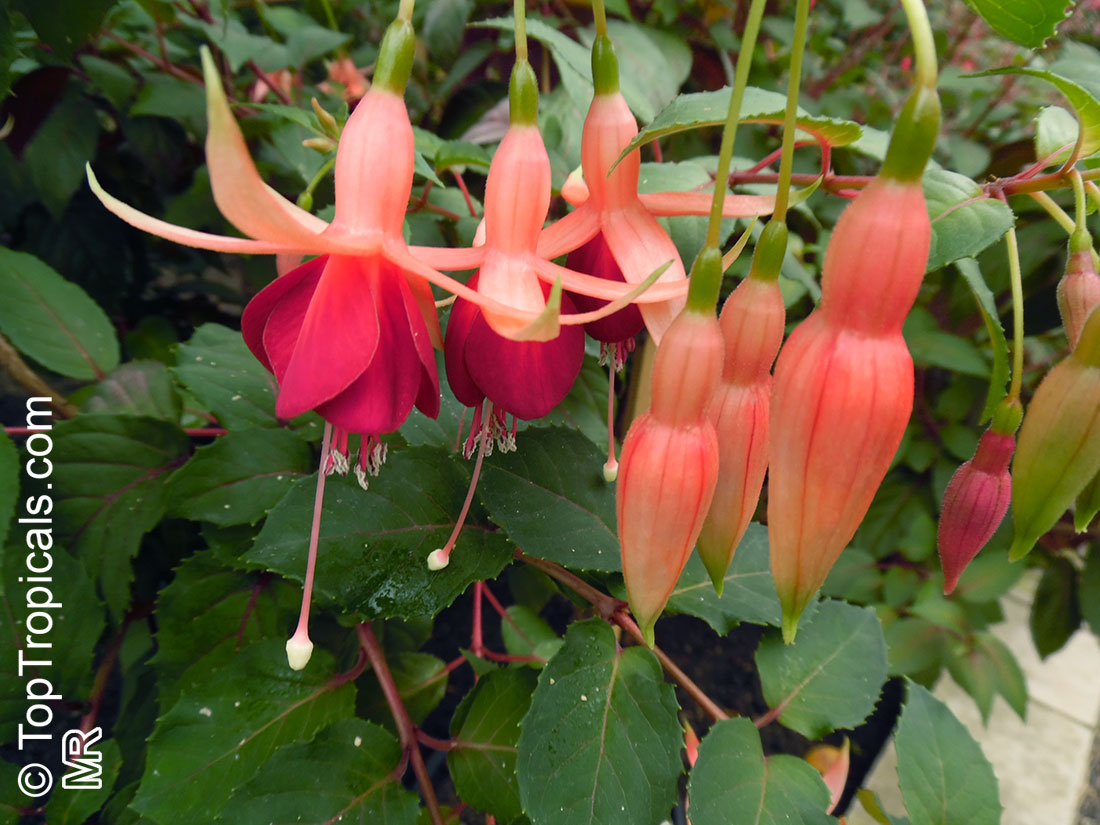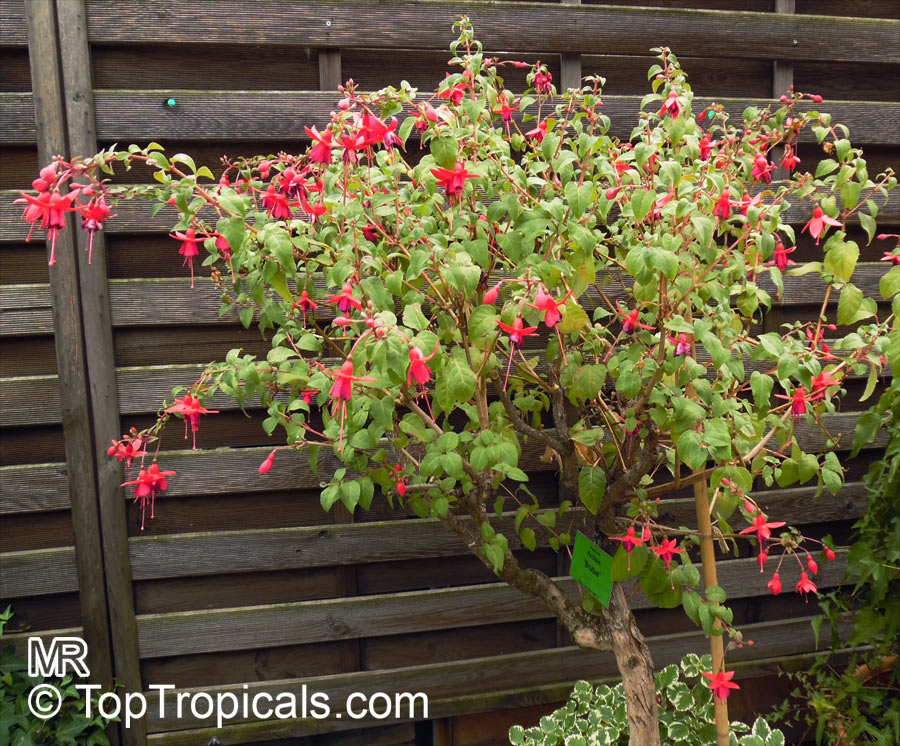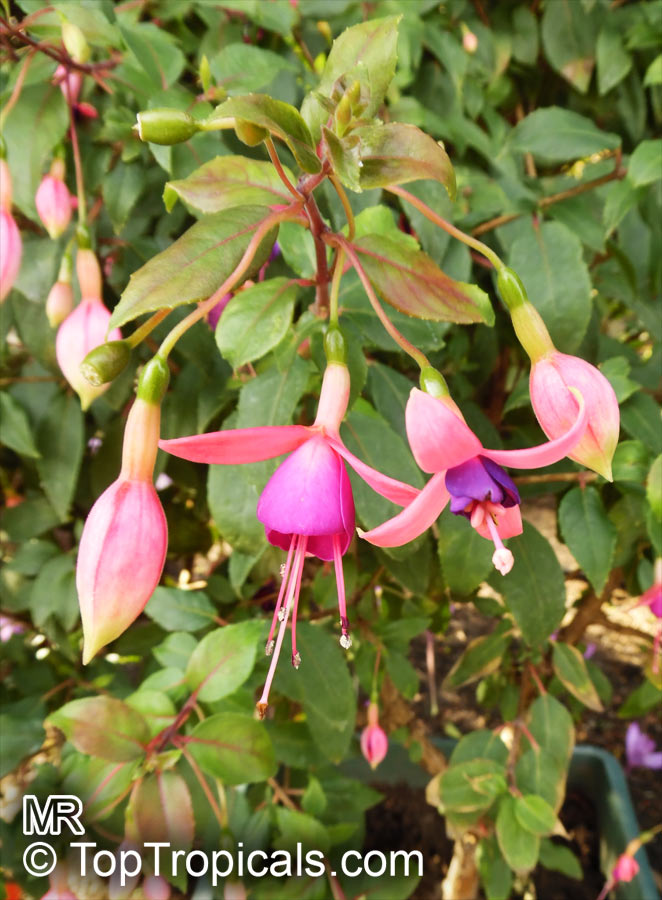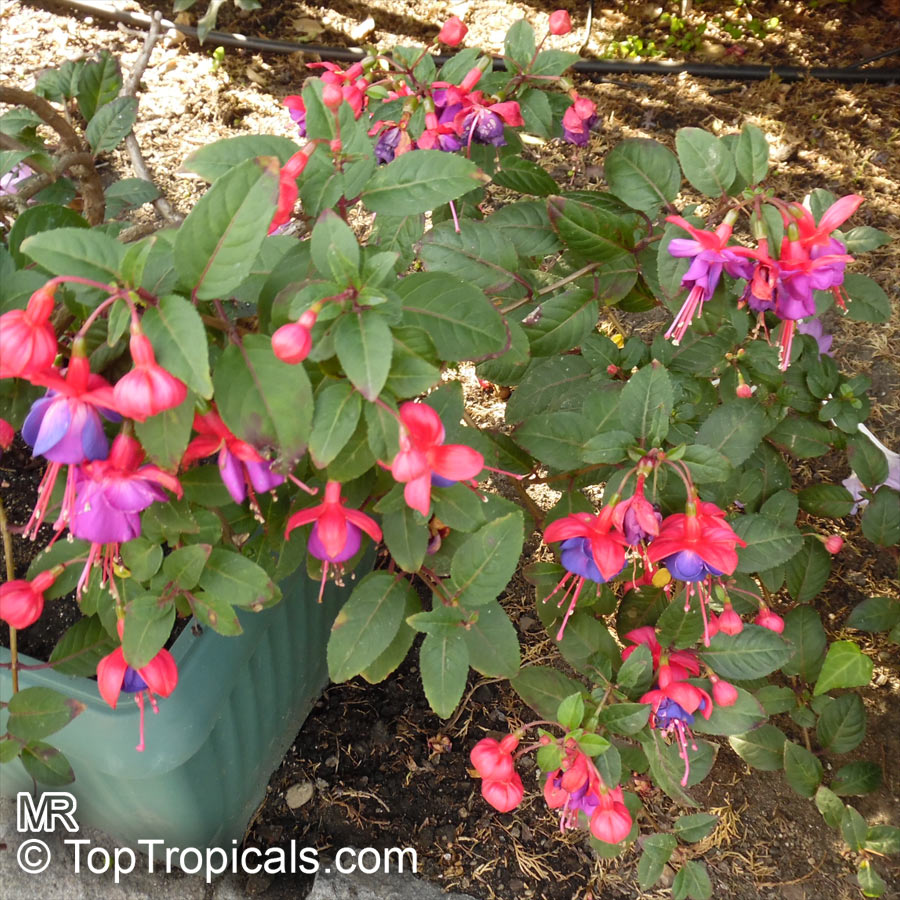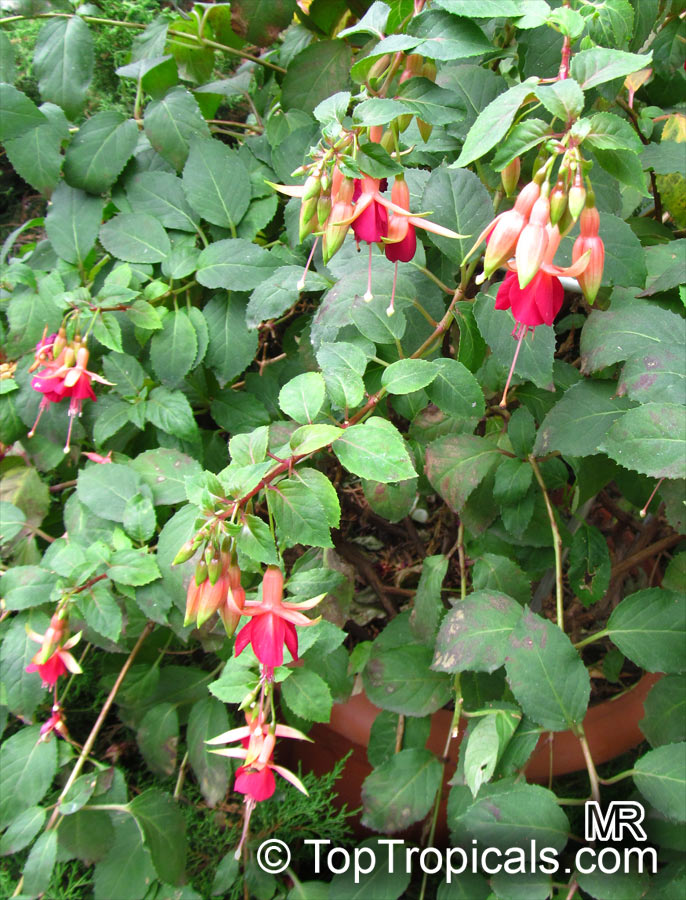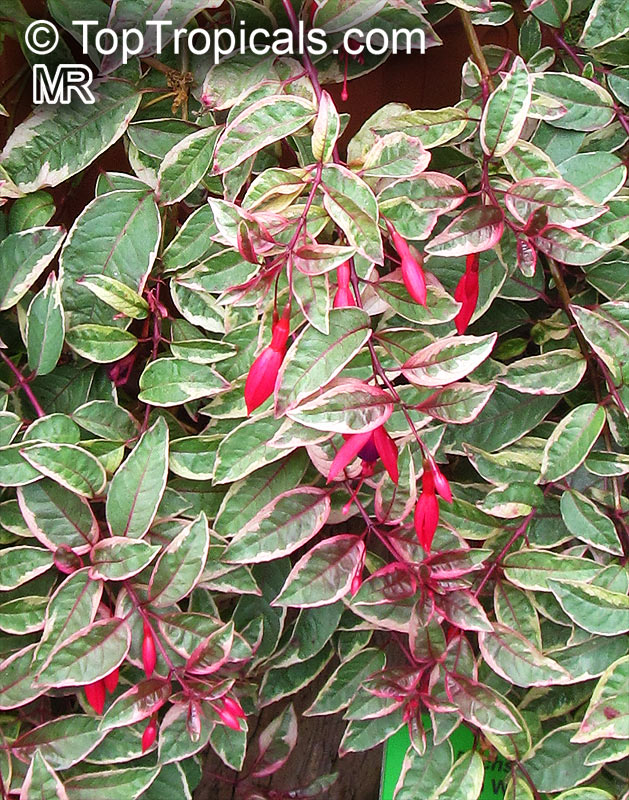Onagraceae - Botanical Family
Top Tropicals Plant Encyclopedia
| Number of plants found: 20 | Next | 
|
Go to page: | 1 | 2 |
Botanical names: Clarkia amoena, Godetia amoena
Common names: Atlasflower, Farewell-to-Spring, Godetia
Family: Onagraceae
Origin: North America









Clarkia amoena or Atlasflower is a small shrub about 2-5 feet tall which adds a nice texture to any garden. The plant loves full sun to semi-shade but will also tolerate some shade. It requires moderate water to keep its soil moist but not wet. This tiny flowering powerhouse blooms from late spring to early fall and is quite tolerant of heat and drought. Clarkia amoena has clusters of fan-shaped flowers at the end of the branch tips that come in pink, white, off-white, and red/crimson/vinous shades. It has a truly stunning profusion of blooms that make it a popular choice for landscaping.
This showy plant not only provides spectacular blooming but also attracts butterflies and hummingbirds which further enhance your outdoor spaces. Clarkia amoena is hardy in USDA Zones 9-11, so in colder regions it needs to be grown in a container that can be brought indoors during winter. To start from seed, sow the seed directly into the ground. Make sure to keep the soil evenly moist, using a light liquid fertilizer every few weeks. Pinching off the tips of the stems will help to encourage branching and heavier blooming. This graceful shrub is a delightful choice for any gardener looking to add some beauty to their outdoor space.
Botanical names: Epilobium canum, Zauschneria californica
Common names: California Fuchsia, Hummingbird Trumpet, Firechalice
Family: Onagraceae
Origin: California





Epilobium canum is a native of hot dry places on the west coast of North America. Here it thrives in the nutrient-deficient sun-baked soil, to which it has adapted by evolving water and starch-storing rhizomatous roots and tiny silvery leaves that reduce transpiration. These adaptations make it the perfect plant for rock and gravel gardens, raised beds or dry-stone walls, where it will offer an abundance of the most brilliant scarlet flowers from late summer to November.
Botanical name: Fuchsia arborescens
Common name: Lilac Fuchsia
Family: Onagraceae
Origin: Central America






It is a large shrub 5-10 feet tall and wide or a small tree 10-20 feet tall and wide. It is native to Central America and is grown in USDA Zone 9-11.
Fuchsia arborescens (Lilac Fuchsia) is an evergreen shrub with beautiful pink bell-shaped flowers that can provide year-round color in cool climates. Its major attraction is the dramatic looking long drooping clusters of blooms. It thrives best when given full sun and semi-shade, and requires regular watering for best results.
Planting this shrub is easy. It can be planted in the ground, or grown in containers, as it is a hardy plant. In areas where winters can get very cold, it is best to grow Fuchsia arborescens in containers and move them indoors when cold weather sets in. In mild climates, it can be planted in the garden and will remain evergreen even in cold weather.
When it comes to taking care of Fuchsia arborescens, make sure it is watered regularly since it enjoys moist, well-drained soil. The soil should be kept relatively moist in full sun, and slightly more moist in semi-shade. If you are growing the shrub in a container, it is important to ensure that the soil is light and well-draining. Moreover, consider fertilizing the plant every other month with a balanced fertilizer.
Pruning is also recommended, as it helps keep the Fuchsia arborescens healthy and helps encourage new growth. In colder climates, prune the plant back in the fall when any new growth is starting, and in areas with mild winters, prune in early spring. Make sure to prune the plant so that it is no taller than 3-4 feet, as this will help keep it growing for years to come.
Fuchsia arborescens is a great addition to any garden or home. With its beautiful flowers and easy-care requirements, it is a wonderful choice for those looking for an evergreen shrub with sensational blooms. With proper care, it can provide a stunning show of color for many years to come.
Botanical name: Fuchsia boliviana
Common name: Bolivian Fuchsia
Family: Onagraceae
Origin: Central America







This deciduous woody shrub growing up to 5-10ft tall and wide in semi-shade with regular water. It is native to Central America and has also been naturalized in many temperate and subtropical regions. This plant is widely grown as an ornamental in gardens and pots, and it also attracts many butterflies, hummingbirds, and other pollinators. The tubular flowers bloom with its vibrant colors, typically white or off-white corollas and red, crimson, or vinous sepals, are very visible when the plant is in full bloom. Beyond its ornamental uses, Fuchsia boliviana also has edible properties.
Bolivian Fuchsia is a large shrub that is best grown in USDA zones 9-11. It is noted for its showy and often colorful display of flowers that can be red, crimson, or vinous in shade. Highly attractive to butterflies, hummingbirds, and other pollinators, Bolivian Fuchsia is able to produce an edible fruit with a size of 10-26 mm long. The fruits of Bolivian Fuchsia have a red-purple hue that can be used for a variety of culinary purposes, such as jam, preserves, and smoothies. The fruit is also a good source of fiber, antioxidants, vitamins, and minerals.
In terms of plant care, Bolivian Fuchsia prefers semi-shade and regular watering, especially in warmer regions. When grown in pots, the shrub needs to be kept in an area with adequate sunlight and should be placed in an area with protection from frost in cold regions. Pruning should be done in late winter and spring, right before the new growth starts to appear. Bolivian Fuchsia should be fertilized every two months during the growing period with an all-purpose fertilizer. Regular pest control should also be done to ensure a healthy growth of the shrub.
Botanical name: Fuchsia fulgens
Common name: Fuchsia
Family: Onagraceae
Origin: Central America, Mexico








It is native to Mexico, Colombia, Ecuador, Peru and Venezuela, and is naturalized in Jamaica, Costa Rica, and Hawaii.
Fuchsia fulgens is a large shrub, growing between 5-10 ft in USDA zone 9-11. It prefers full sun or semi-shade spots, and requires regular or moderate water. The most remarkable feature of this plant are its red, crimson or vinous flowers.
Fuchsia fulgens can produce edible fruits, which are packed with nutrients. These fruits are tart and acidic in taste and highly nutritious. They contain dietary fiber, Vitamin C, B6, Iron, Phosphorous, amino acids, riboflavins and carotenoids, which are known to reduce inflammation, lower cholesterol, boost metabolism, protect against free radical damage, and increase digestion.
Preserving the vital nutrients, Fuchsia fruit can be eaten fresh, candied, canned, juiced, or used as a flavoring. The fruits can be chopped and added to smoothies or fruit salads, or used as a garnish. Fuchsia fruit can also be used to make jam, jelly and syrup.
For cold regions, Fuchsia fulgens can be grown in containers and brought indoors. A temperature range between 40 - 80 degrees Fahrenheit, moderate humidity and intense light is required for optimum growth of the Fuchsia in pots. Water on a regular basis and ensure that the soil is moist, not soggy. It should also be noted that Fuchsia should not be exposed to temperatures below 30 degrees Fahrenheit. They should be stored indoors with light and minimal watering.
Botanical name: Fuchsia magellanica
Common name: Hardy Fuchsia
Family: Onagraceae
Origin: South America







Botanical name: Fuchsia microphylla
Common name: Fuchsia
Family: Onagraceae
Origin: Central America, Mexico







Fuchsia microphylla is a shrubby, vining plant native to Central America and Mexico. Also known as 'Fuchsia' or 'Little-leaved Fuchsia', Fuchsia microphylla is an evergreen, groundcover or small shrub. It produces vibrant, red and crimson, vinous flowers that are attractive to hummingbirds.
Fuchsia microphylla is a drought-tolerant plant, but does best when regularly watered. It does best in semi-shaded spots with good air circulation, although it can handle full-sun if watered more often. This plant is hardy in USDA Zone 8-10.
Fuchsia microphylla produces edible fruits. These fruits contain high levels of vitamin C and other minerals. They can be used as a citrus substitute in condiments, sauces and as a flavoring.
The fruit of Fuchsia microphylla is abundant in vitamins and minerals, making it a healthy addition to the diet. Vitamin C can help strengthen the immune system and build up resistance to diseases. It is also a great source of fiber, which helps with digestion. The fruits can also be dried and preserved for later use.
Fuchsia microphylla, the plant is relatively easy to cultivate and propagate. The plant needs regular water, although it can handle dry conditions in the summer months. It should also be protected from extreme cold in colder climates, and can be grown in pots for additional protection.
Botanical name: Fuchsia regia
Common name: Climbing Fuchsia
Family: Onagraceae
Origin: South America







Climbing Fuchsia (Fuchsia regia) is a large shrub that can grow between 5 to 10 feet tall and spread to 8 feet. Depending on your climate, the Climbing Fuchsia can be grown as a perennial evergreen, a deciduous plant that dies back in the winter, or a large, sprawling, non-climbing vine or creeper.
This species of Fuchsia does best when grown in moist, acidic soil with access to full sun, although partial shade or semi-shade will also do. The regular watering is necessary for Fuchsia regia, especially in hot weather.
Climbing Fuchsia is not suitable for hanging baskets as it will become leggy in search of places to cling. Yet, it does exceedingly well as a hardy garden plant when trained to a fence or trellis. Its attractive flowers and foliage make it a great addition to any garden.
The flowers of Fuchsia regia have clusters of two-lipped petals which range in color from red, crimson, and vinous to blue, lavender, and purple. They can range in size from 1.9 to 2.25 inches long and 0.59 to 0.75 inches wide. They bloom throughout the growing season and occasionally until November.
The best way to take care of Fuchsia regia in cold climates is to bring it indoors during winter and keep it in a cool location. Make sure to keep the plant away from heat sources and allow the soil to dry out between waterings. Direct blows from winter winds should be avoided, so keep the plant out of harsh wind and away from other heavy plants that could drop branches on it.
Botanical name: Fuchsia sp.
Common name: Fuchsia
Family: Onagraceae
Origin: South America












Fuchsia is a genus of flowering plants that consists mostly of shrubs or small trees.
One species, F. magellanica, extends as far as the southern tip of South America, occurring on Tierra del Fuego in the cool temperate zone, but the majority are tropical or subtropical.
| Next |  |
Use link to repeat this search:
https://toptropicals.com/cgi-bin/garden_catalog/cat.cgi?search_op=and&keyword_op=and&language=e&family=Onagraceae&number=10
&no_change_lang=1&user=tt&sale=1&first=0
